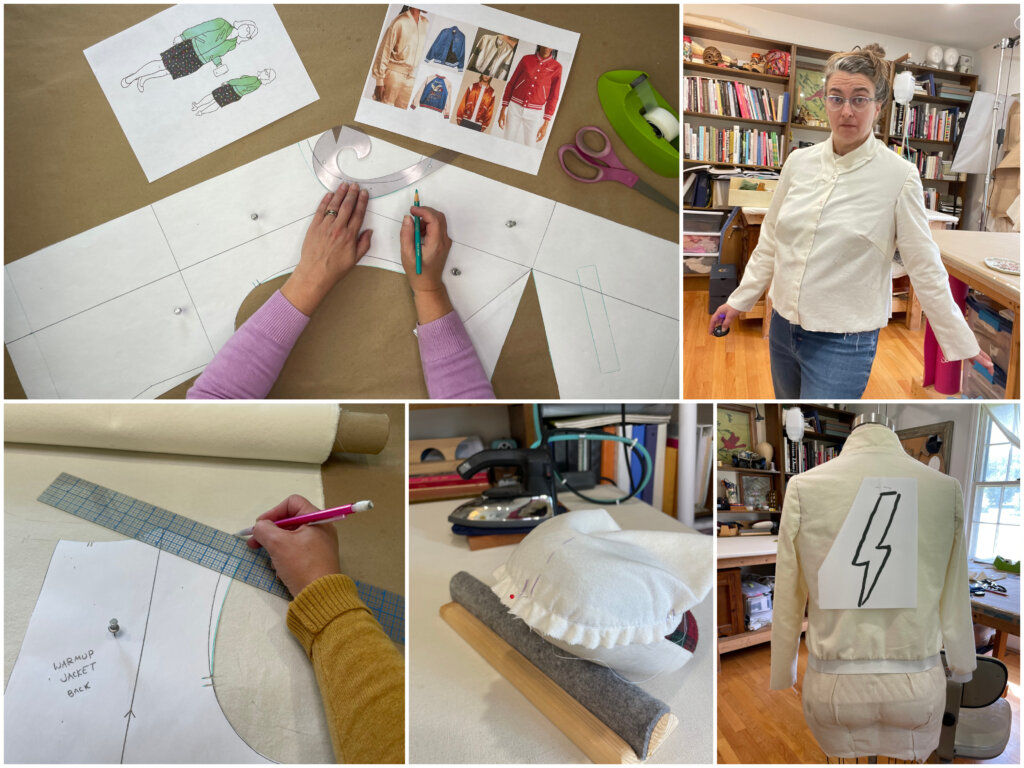
In this second post of My Warmup Jacket series, I share the behind-the-seams details of my jacket’s patternmaking and mockup stories! And after putting this patterning post together (which was part of my “warmup” for testing new shots in my new space), there ended up being so many photos and video clips that I’ve decided to divide this one (long) post into two parts.
Enjoy an Intermission after Part 1!
Jump ahead to the 2nd Part by clicking here.
Part 1 - PatternMaking Magic
As someone who only sews from custom-drafted patterns, I really enjoy the freedom to figure out the style and fit I prefer and to choose the construction processes that work best for me and my materials.
When you purchase a pattern, there is an assumption that the designer has already figured this out for you. When in truth, these are the magical bits of garment sewing that could never be truly figured out by any one other than you at any time other than the present.
It may sound challenging to sew for yourself without someone else’s blueprint and instruction booklet. Also, a One-Step-At-A-Time approach is likely slower than a Do-This-Then-Do-That approach.
But I love a challenge.
And I love to slow down.
And I love the rewards- in both the process and in the finished product.
Sewing is personal- in so many ways.
The Starting Point
One of the things I love most about creating garment patterns from scratch is that, instead of starting with a size, you start with the individual. Whether you begin with a 3D custom dress form, or a 2D custom block, the body of the specific person is the origin of each pattern piece.
Though I do have a “Size Brooks Ann” custom dress form (which you can watch me “pad up” in this blog post and/or this ebook), I decided to Flat Pattern my jacket using my updated Top Block (which I created in my eCourse Top Class).
A “block” is a blank 2D, no-design, body-map tool for patternmaking. In fashion, it represents the “size” of their standard “fit model”. In custom sewing, it represents the “size” of the individual person.
This version of my body’s custom block tool shares my blocky relaxed fit + my preferred semi-fit for tops. I planned to use a combo of the darts and seams on the tool as the starting point for my Warmup Jacket.
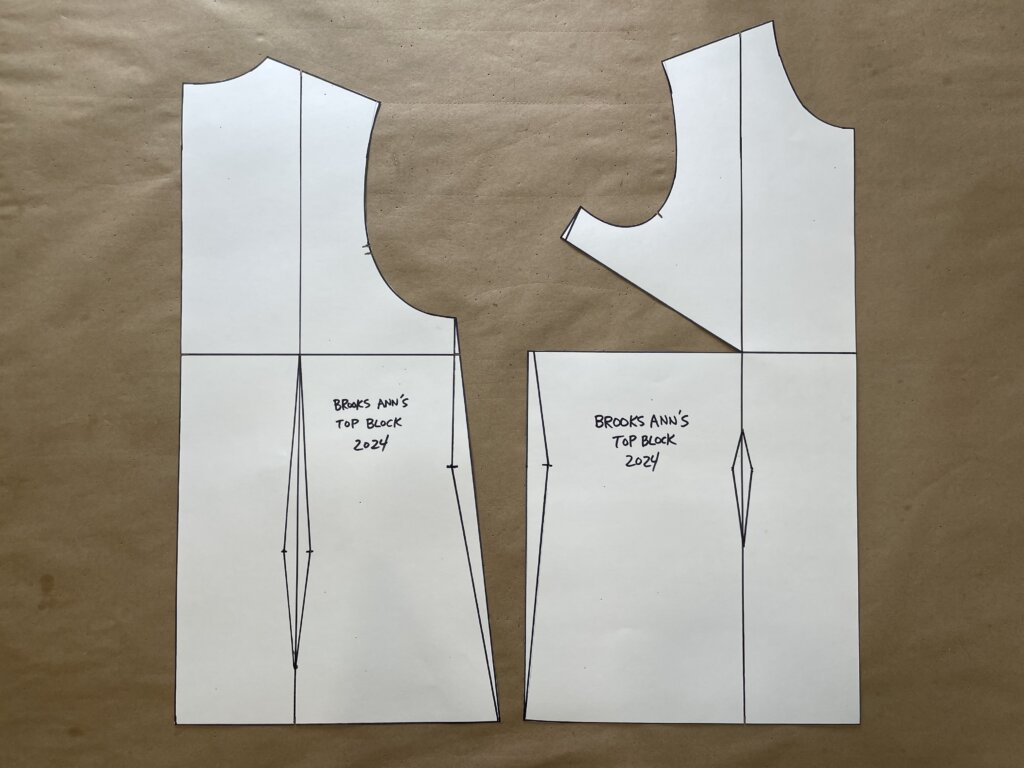
And it’s easy to get started, because Step One of Flat Patternmaking is tracing the block onto a fresh sheet of paper.
The First Draft
While working one step at a time, I start with what I know. I knew I wanted the length of the jacket to be shorter than the length of the block (which maps my body all the way down to the hipline.)
But how short? Let’s figure out what I prefer!
Bonus: The block is not just a paper tool. The mockup (fabric version) that corresponds with the block is also a helpful design tool. I tried on my block’s mockup and folded up the hem to determine the length I liked best for my design and my body.
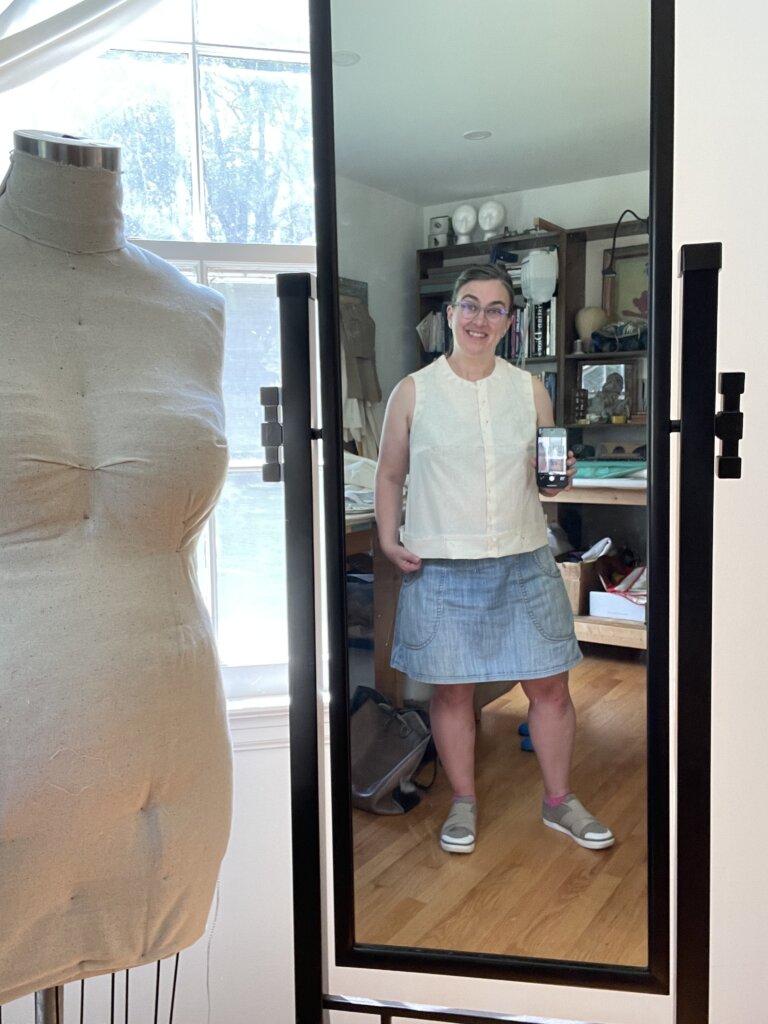
While looking in the mirror, I also wondered about extending the shoulder out a little– because it’s a jacket? I haven’t made a jacket in as long as I can remember and I decided to give that idea a try. I’m curious about the results.
Back at the paper, I tested an idea for the extended shoulder, while keeping the underarm fit of the original custom armhole.
With a teal pencil, I began drawing my changes and additions to the original traced lines.
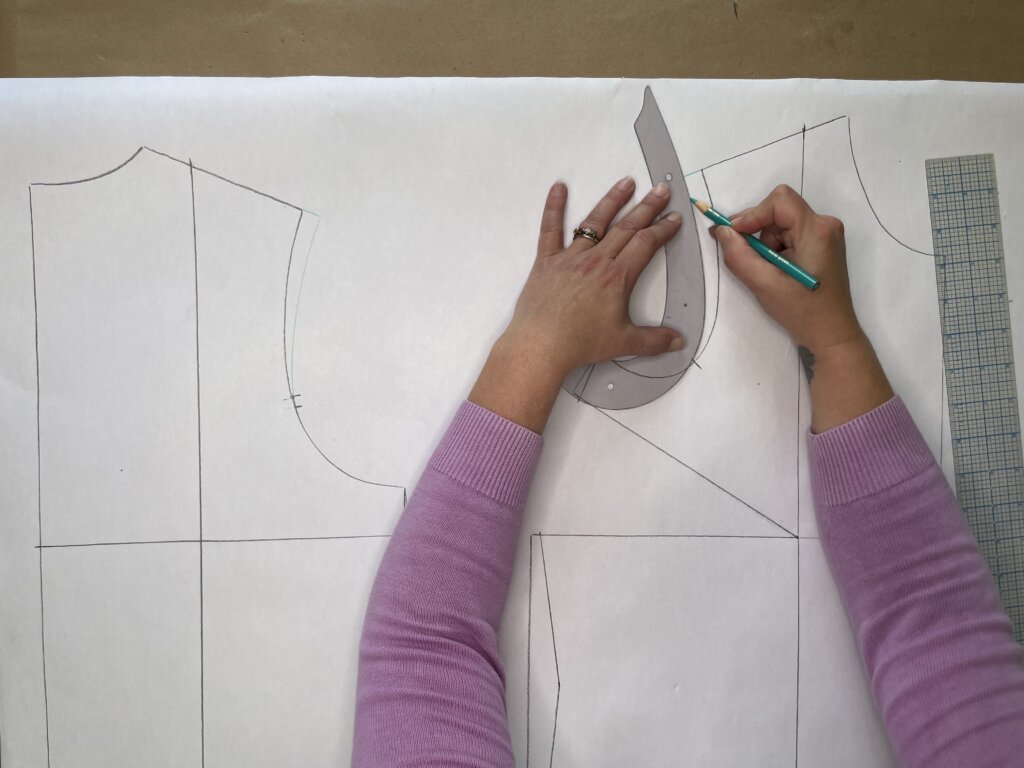
I measured the length I removed from my block mockup tool…
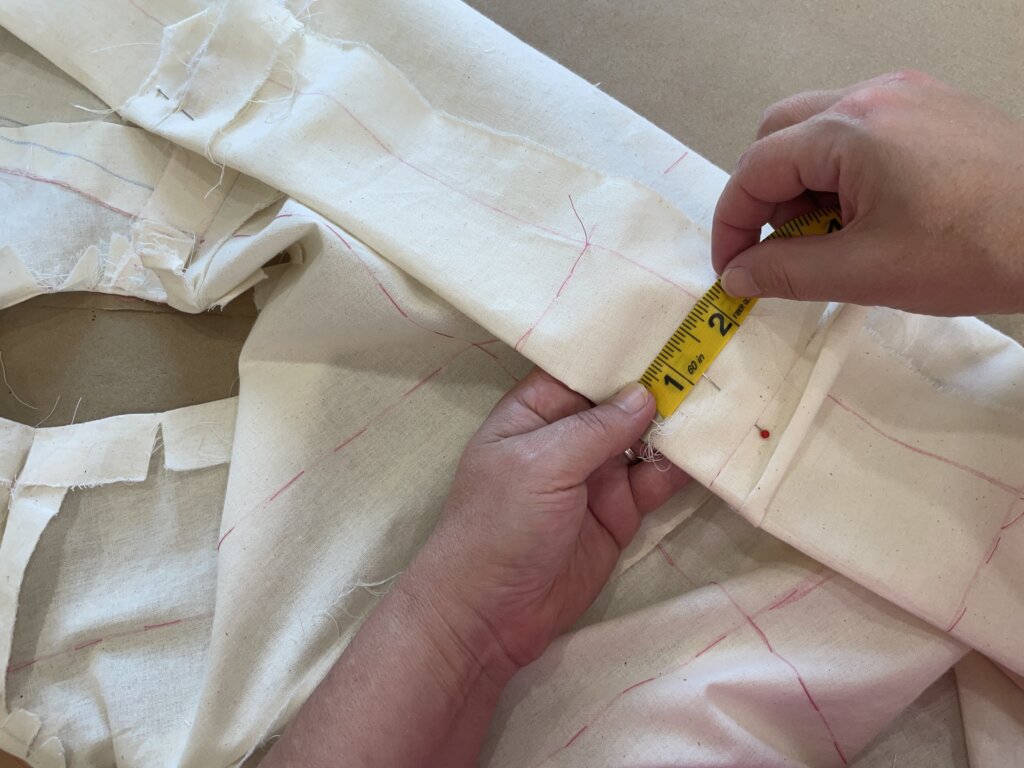
…and recreated it on the paper, including the band at the bottom of my jacket design.
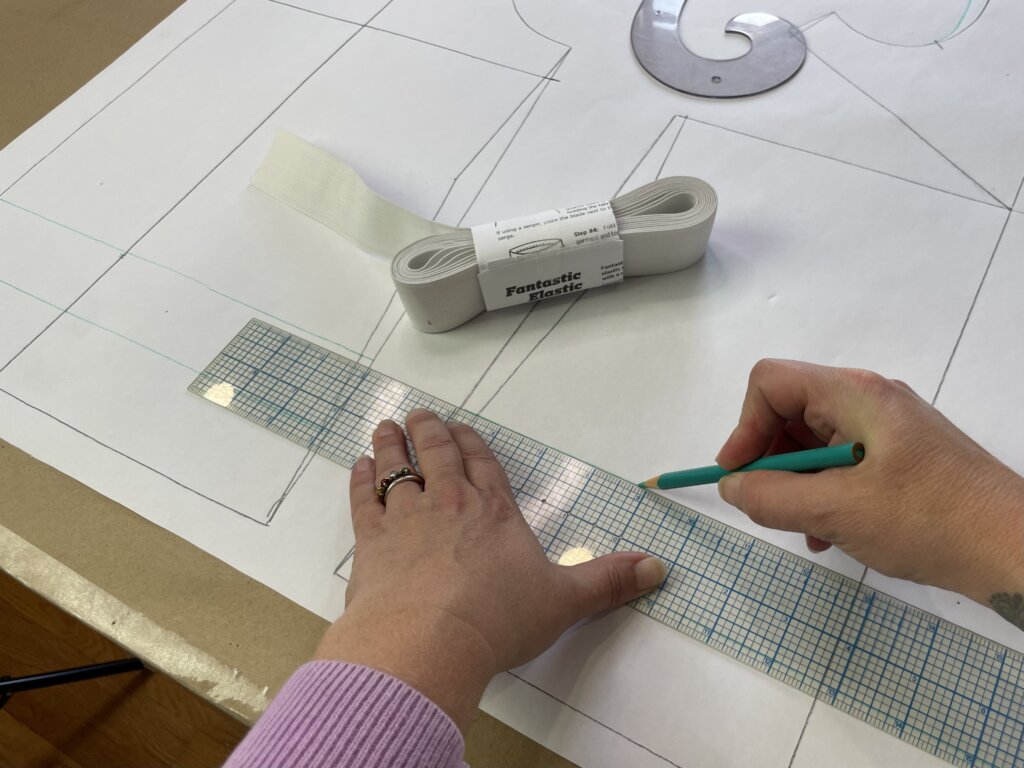
I’m busty, so I need dart shaping for a great fit in non-stretchy fabrics. During the design process, I decided that I’d rotate my block’s “bust dart” into a “french dart” position. It was now time to add this to the paper.
After drawing a line as my best guess for a nice new placement,…
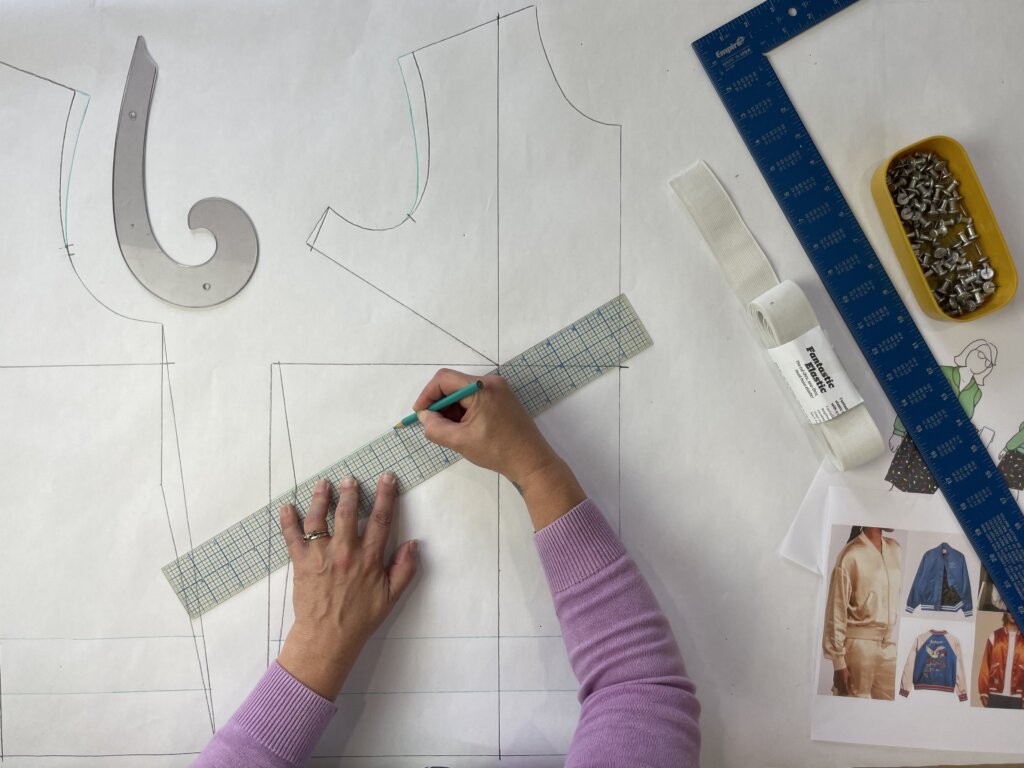
…I needed to cut out the draft to “close the dart” and complete the rotation. While I was at it, I cut out most of the draft to continue my patternmaking process. Click to watch it happen!
What’s next?
What else is on my sketch?
Welt pockets.
Where do I want them? What size?
To answer these questions, I used my hand and a short ruler to play around with placement directly on the pattern piece. I eventually added my best guess for my first test onto the paper.
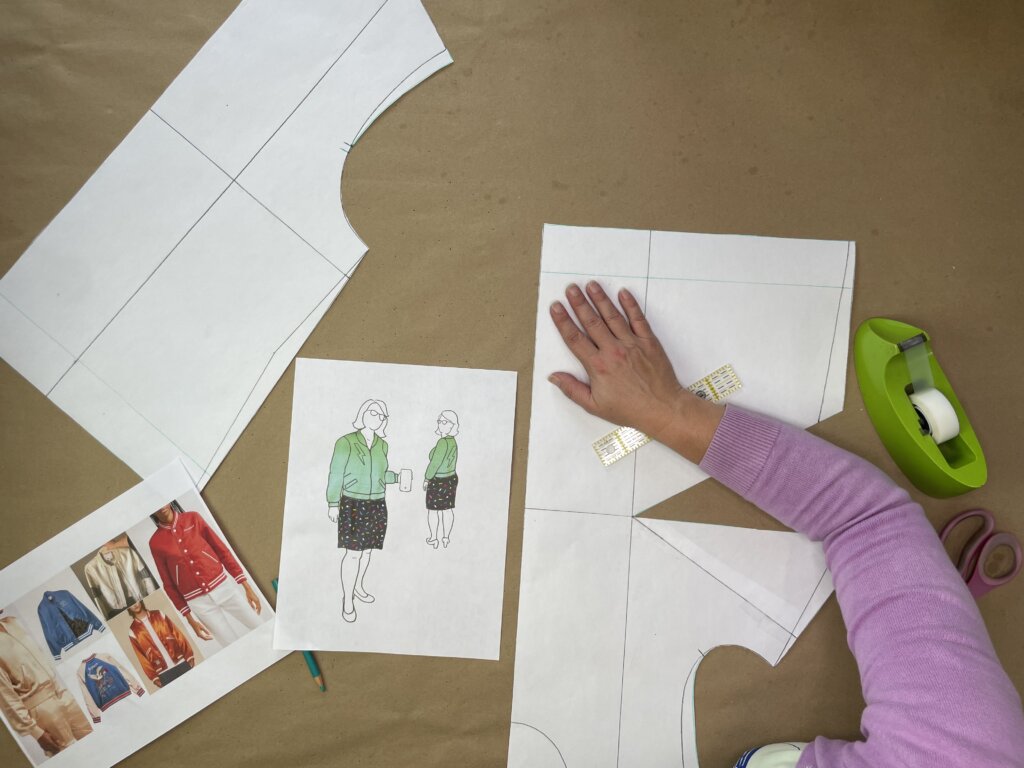
What else? The neckline.
One of the challenges with this jacket is that I will be using non-sportswear fabric to recreate a sportswear look. Looking at my (sportswear) inspirations, I thought that the neckline might need to be widened.
I sketched in my best guess. I even drew in a quick “collar”- though I didn’t think I’d use the pattern piece literally. This is early in the process, when everything is a guess, so I’m just having fun playing around…
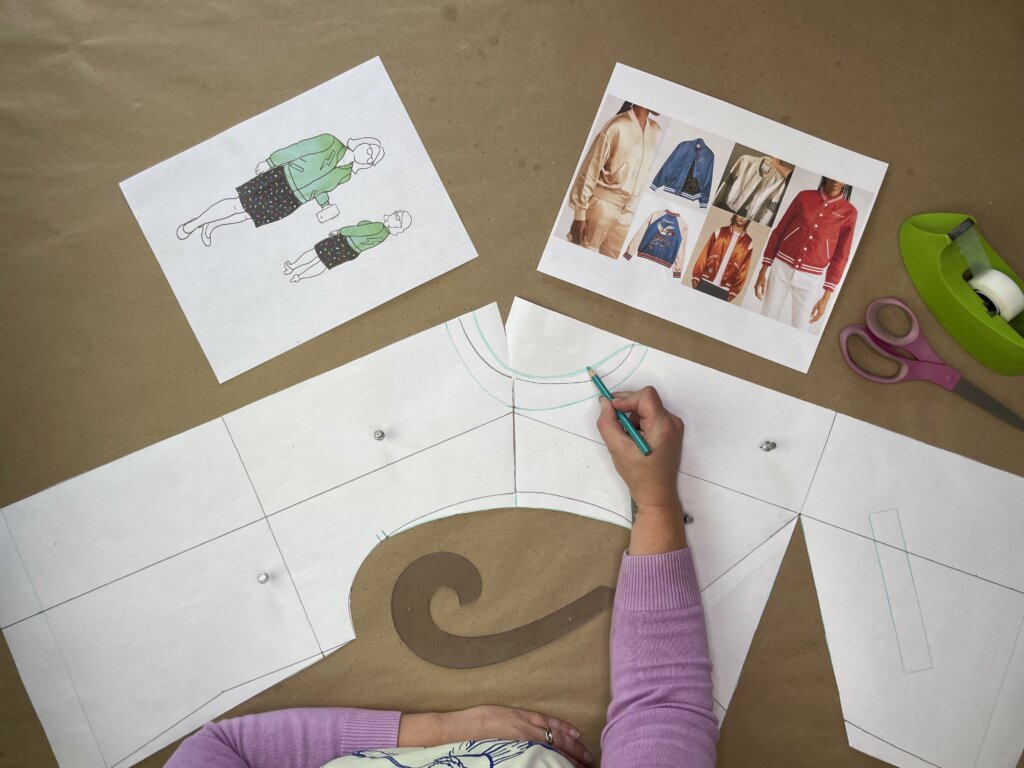
In my vision for this sleek and sporty look, the wrist and hem bands would be made of the same stable silk/wool satin fabric as the jacket- instead of something stretchy (like this style of jacket usually uses).
I measured my body around the area where my hem band would go, to create a shorter (possibly bias?) band to ease into the fuller jacket above. I’ll be interested to learn how this idea works…
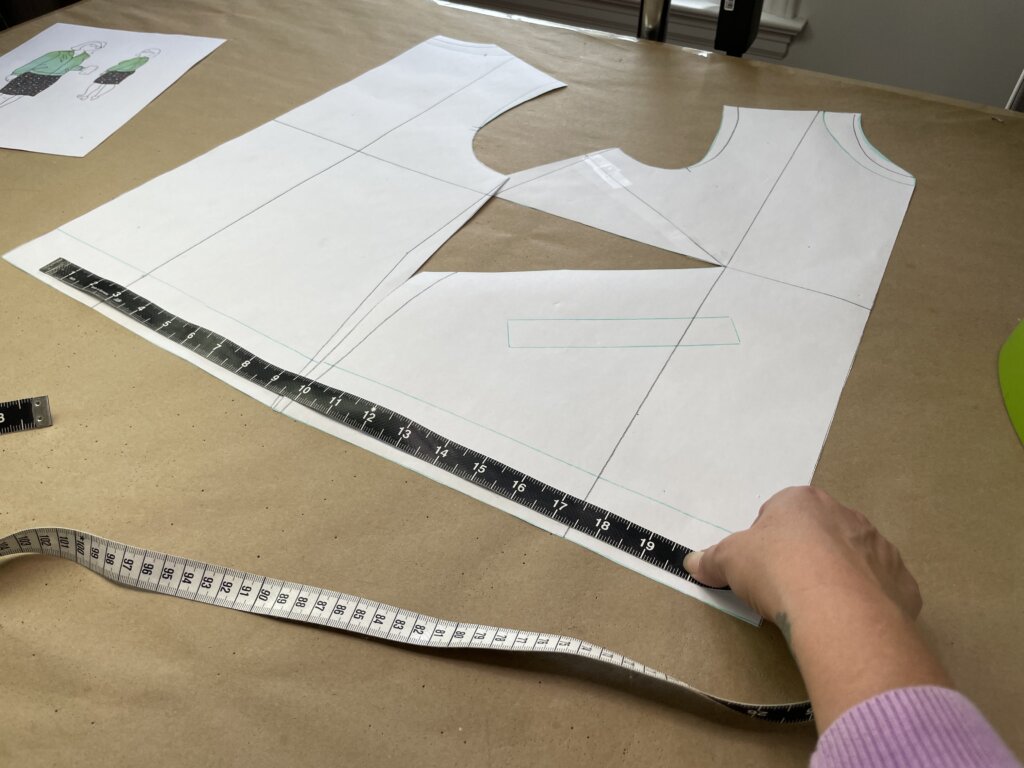
And with that, I seemed to have all of the info I needed to get started testing my first draft. I cut the pieces apart and added my labels and notches etc…
Then, after filming, I remembered to “back off” my bust dart…
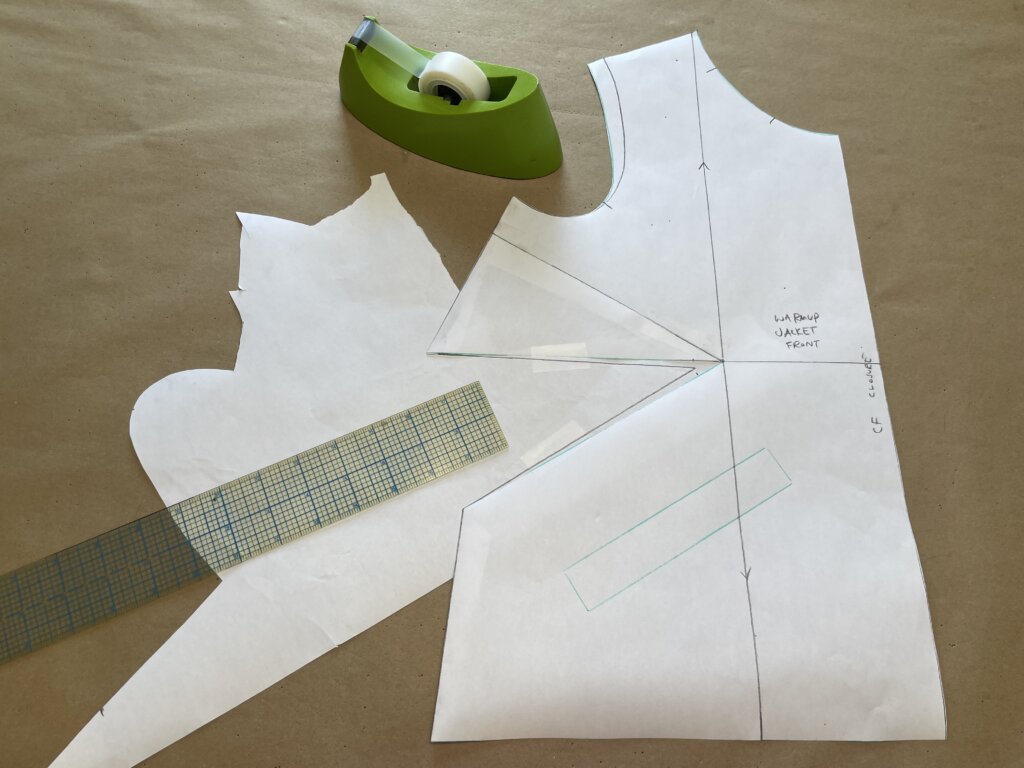
…and cut out my notches.
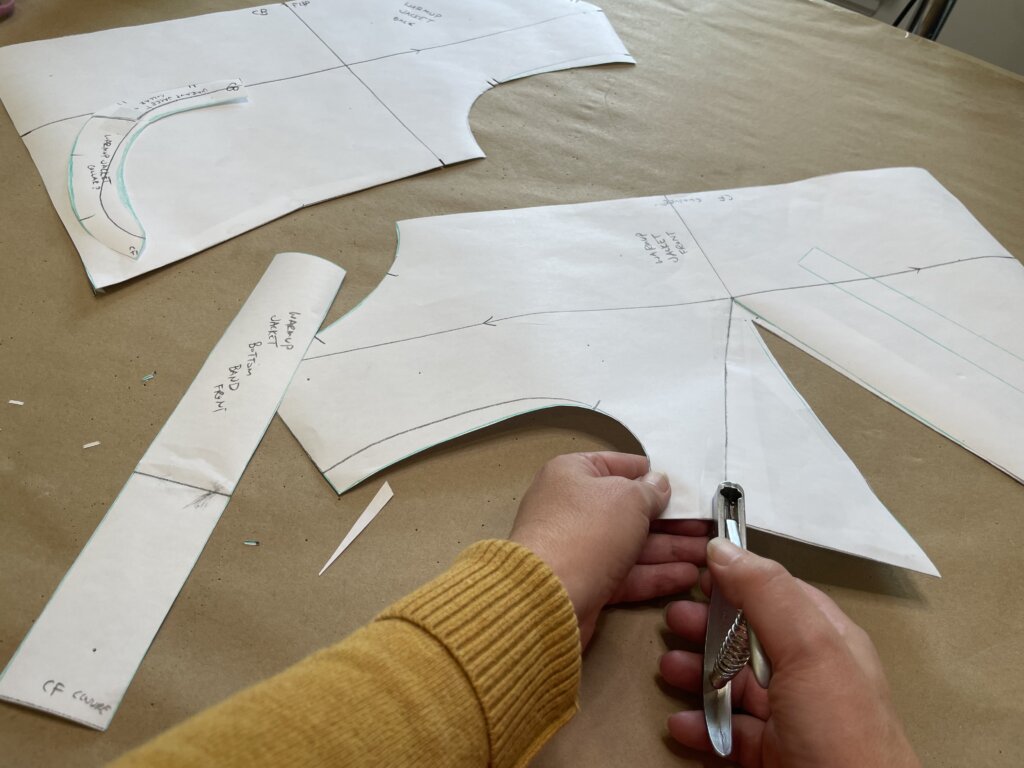
First draft complete (+ a dummy collar) (- the sleeve)!
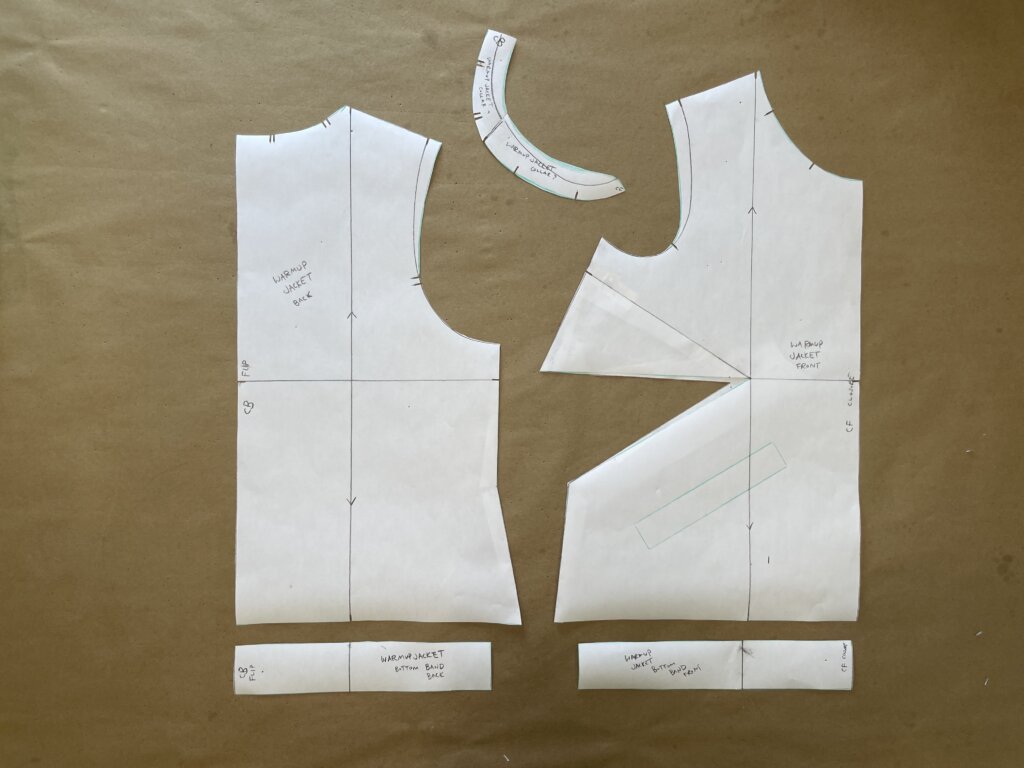
Making the (Flannel) Mockup
Patternmaking isn’t only about drafting a pattern; it’s about testing. The first draft is simply a best guess. Until you can try it on and experience how it feels and behaves, you can’t know what you’ll prefer to tweak or keep in your garment.
The magic of working through the mockup stage is often my favorite part of sewing. And bonus: I like to reuse my mockup as the garment’s underlining. (Read more in this 3-part blog series).
That’s why I made my mockup out of laundered flannel.
With swatches of my fashion fabrics clipped to my clipboard of notes, I visited my lovely local craft store Freeman’s Creative and found the perfect flannel (on sale!). I also picked up the perfect color thread and even some cotton quilt batting, (in case I decide to quilt the lining- a step that feels too far in the future to predict).
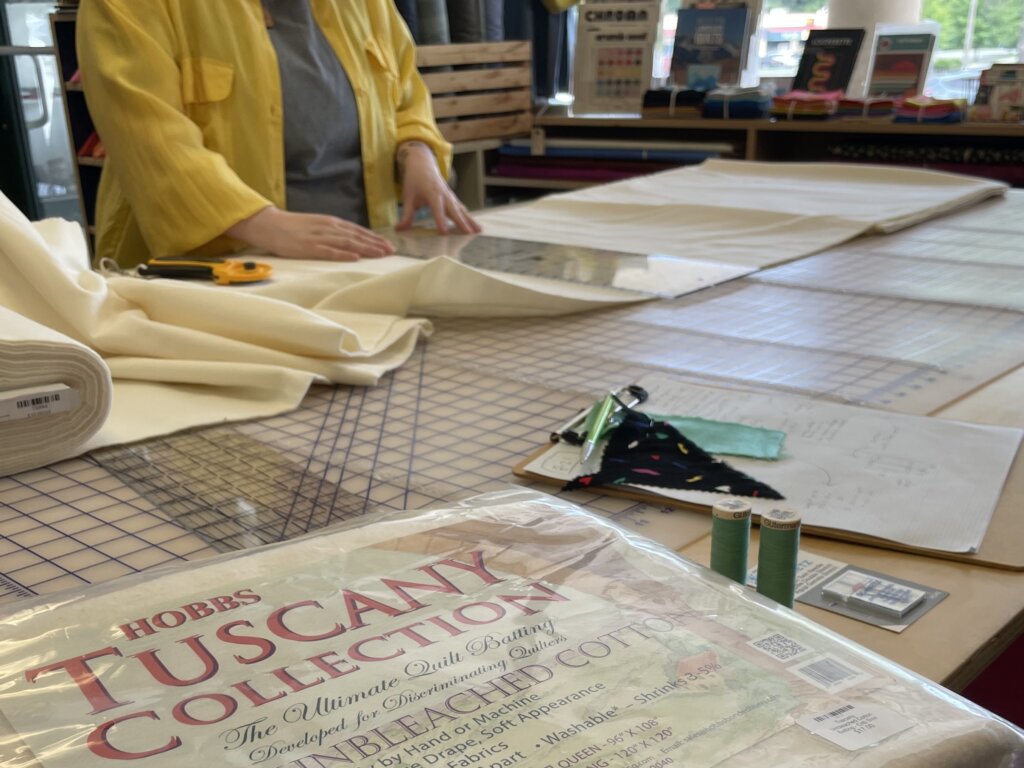
Back in the studio, I did some seam tests on swatches. I wanted to see how the satin would sew and press with (and without) the flannel underlining layer.
The answer: Success!
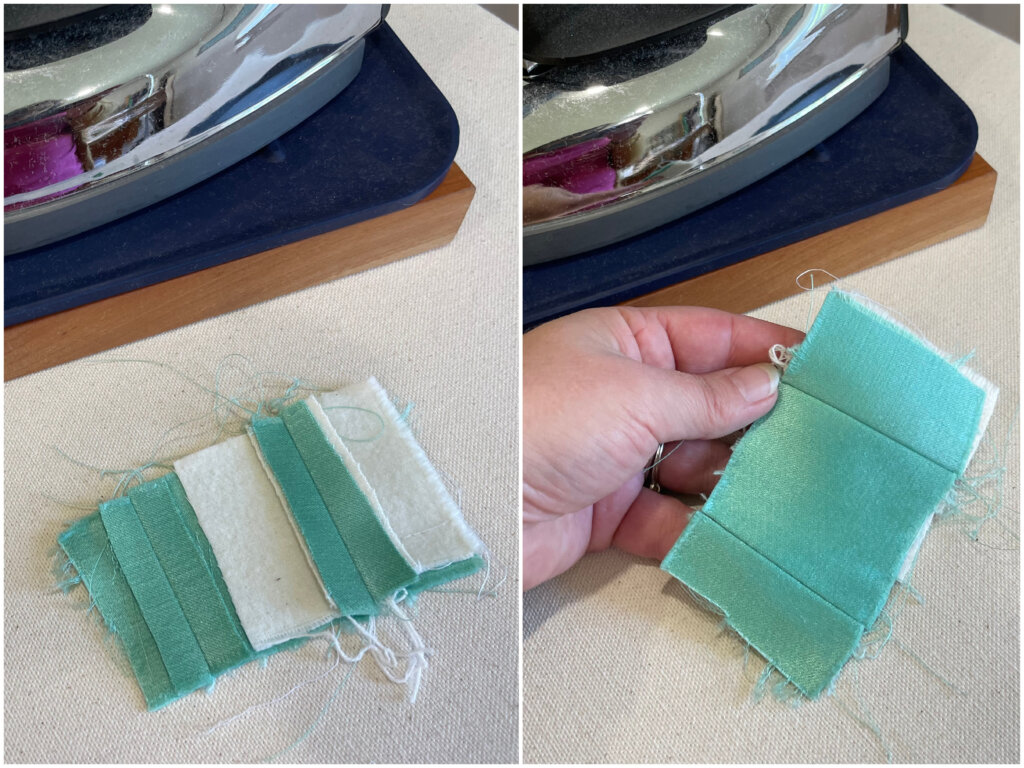
Next, I used my no-seam allowance paper patterns to mark the stitch lines, cut lines, notches, and other details- directly onto a single layer of fabric using a regular pencil and my pinnable topped table. I had already laundered and pressed my flannel yardage onto a roll.
Working one step at a time, I focused on the body of the jacket- saving the collar, sleeves, bands, etc for later.
After a little break, I cut out the pieces that I marked.
I love that sewing from stitch lines (instead of a certain distance from the cut edge) means that cutting can be really quick and fun. No precision necessary.
Next up, a little threadmarking! Important edges or markings that I wanted to see during the fitting were quickly traced with lines of purple thread.
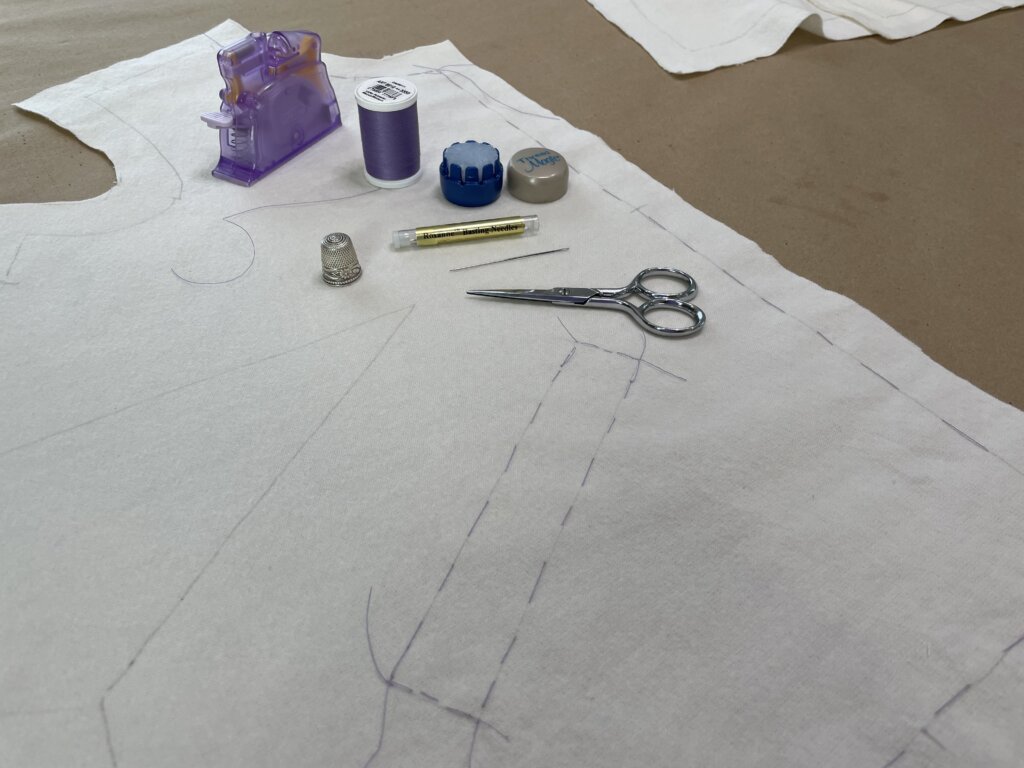
Then, I pinned and stitched the bust darts…
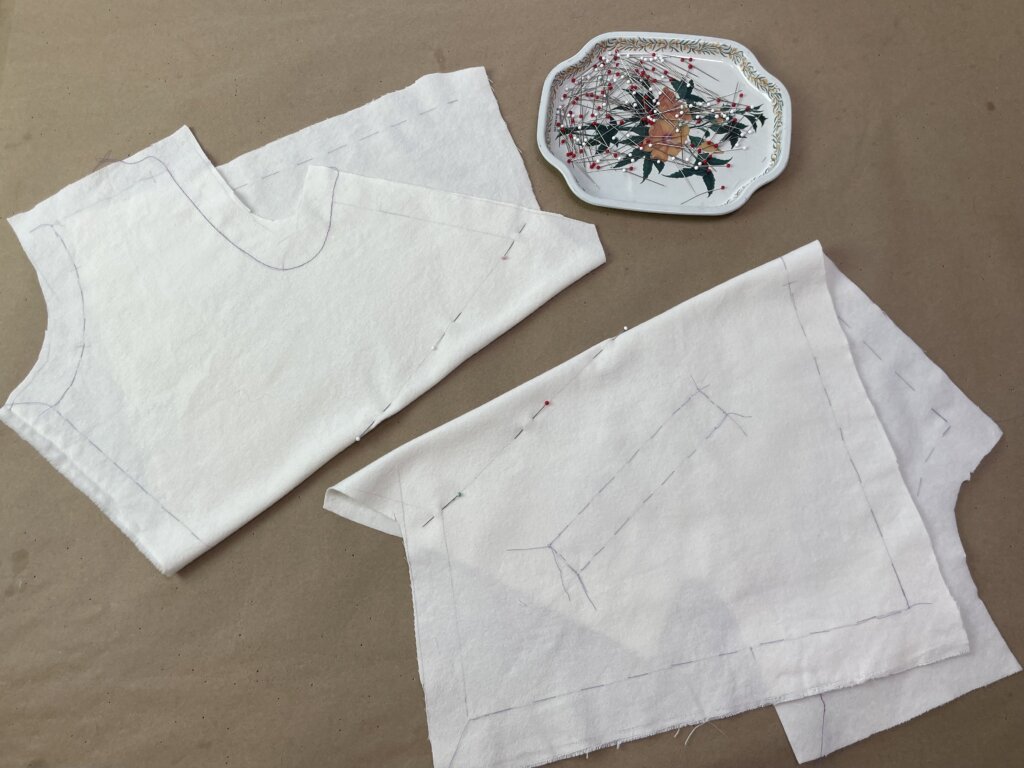
… before draping them on my tailor’s ham, and checking how they press. Success!
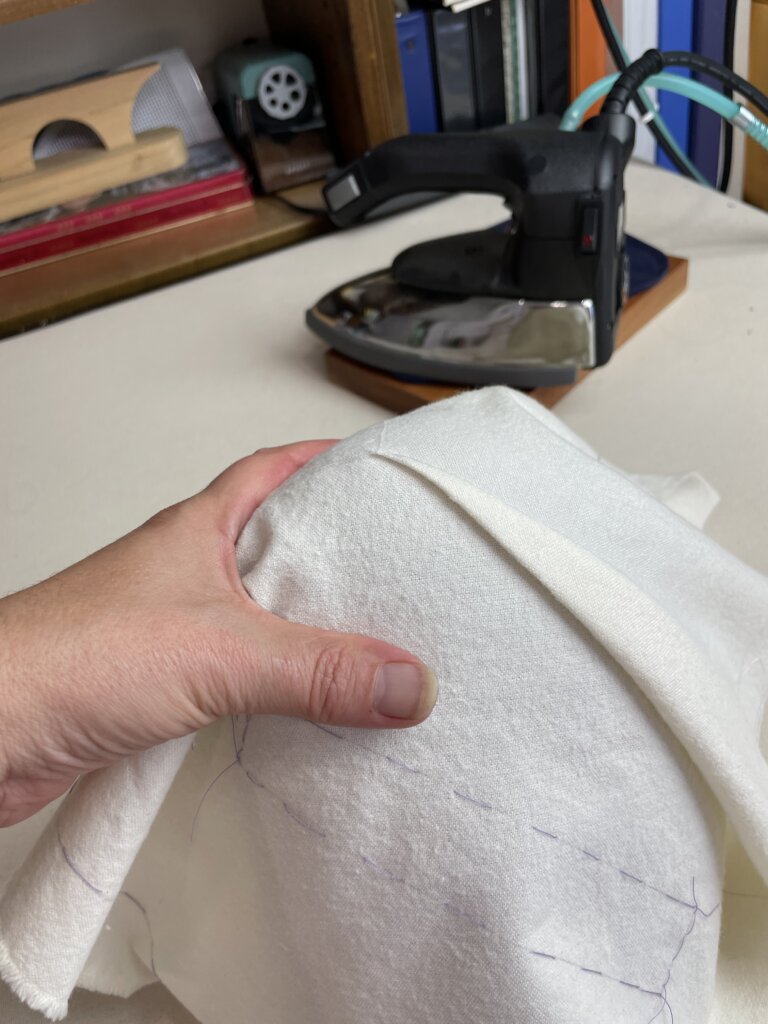
Next, I added pins, as if they were stitches, along all of the seams,…
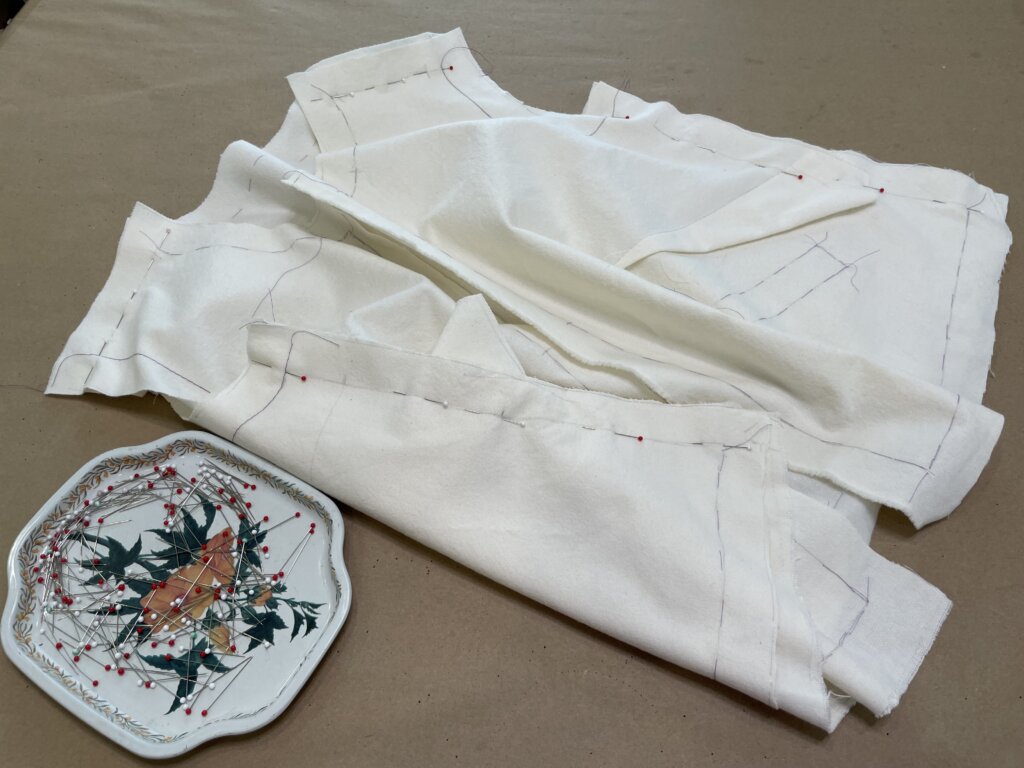
…which were pulled out while machine basting.
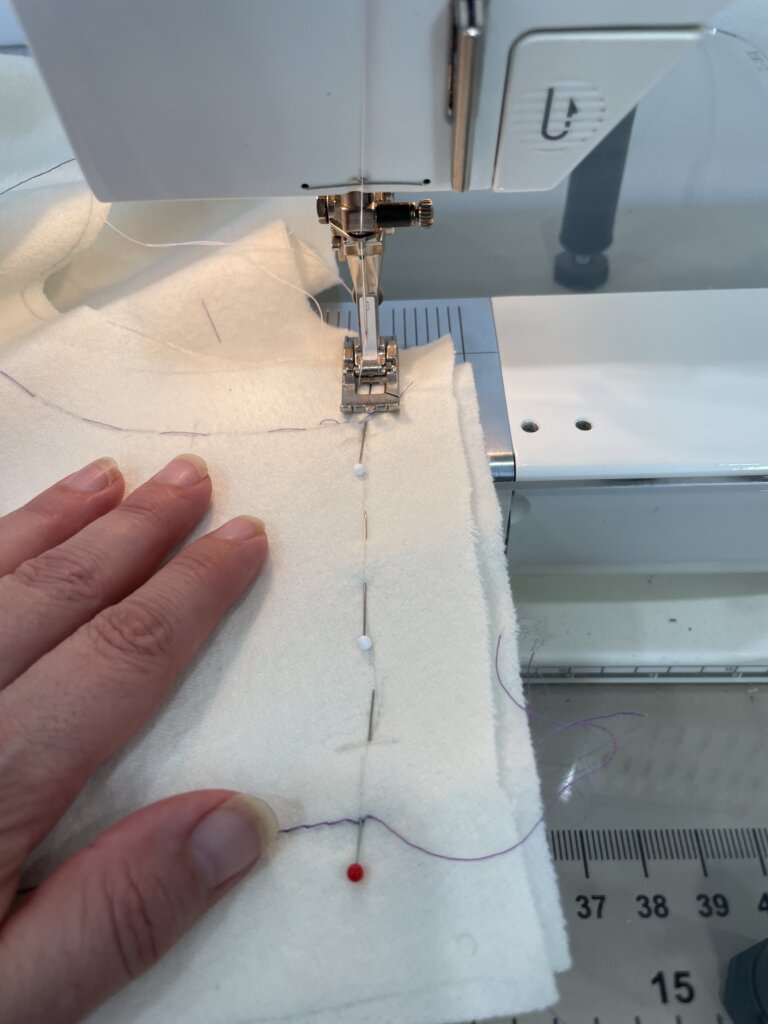
Next, I pressed each seam open. And…
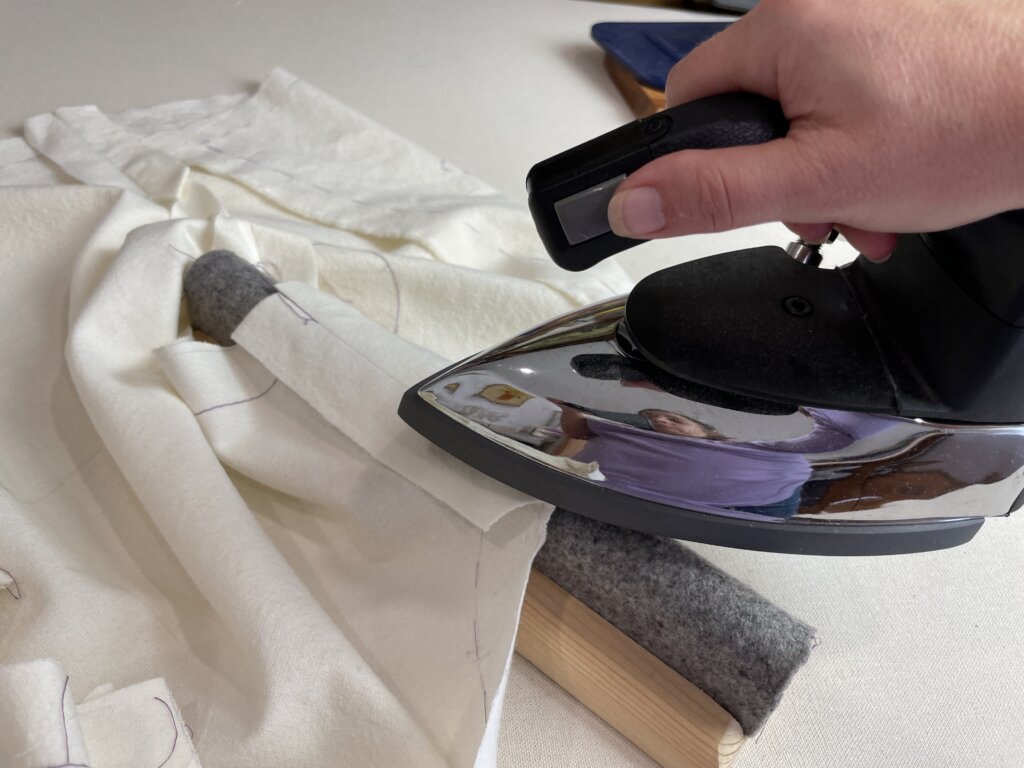
…Yay! I love how using a custom block takes the fitting out of fittings.
The fit seemed great after a quick (unclipped) try-on – so I knew I could happily focus on my design ideas.
The Sleeves
As I mentioned in Part One, this jacket will be my first time testing an actual garment with the new custom sleeve draft that I invented (and plan to teach to my Top Class graduates in 2025).
My latest Mad Scientist sleeve experiment was transferred to white paper…
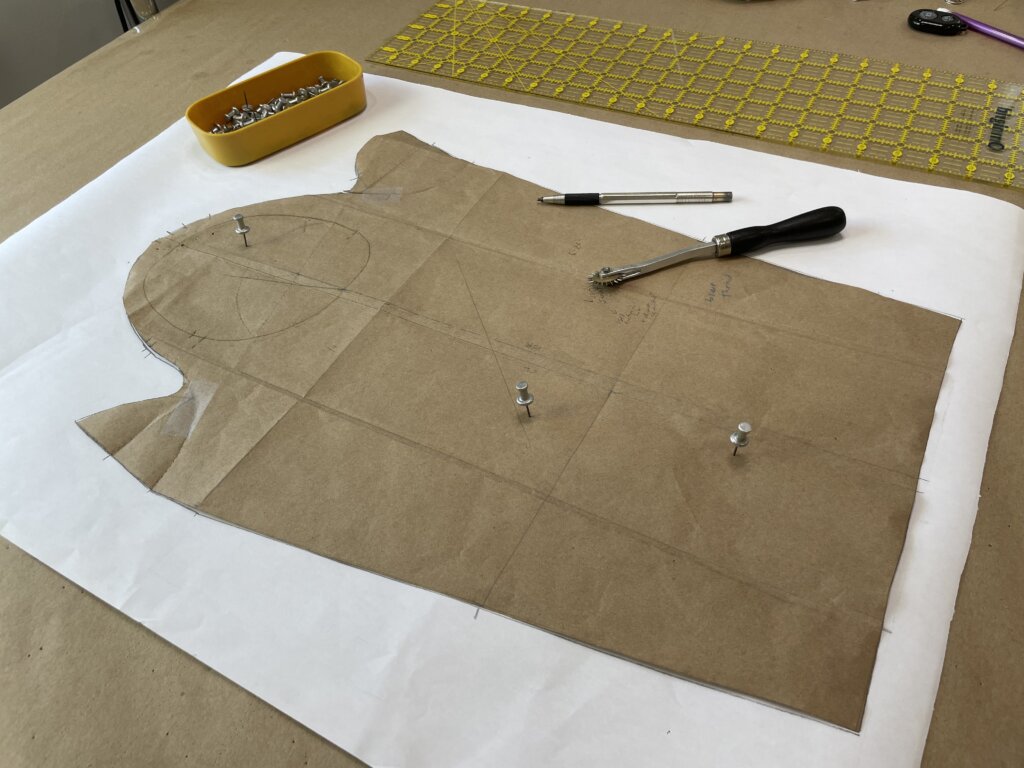
…then I cut along the edges, and notched my notches, to create my beautiful new pattern piece. I made no changes to my custom “gusset sleeve block” for my jacket design.
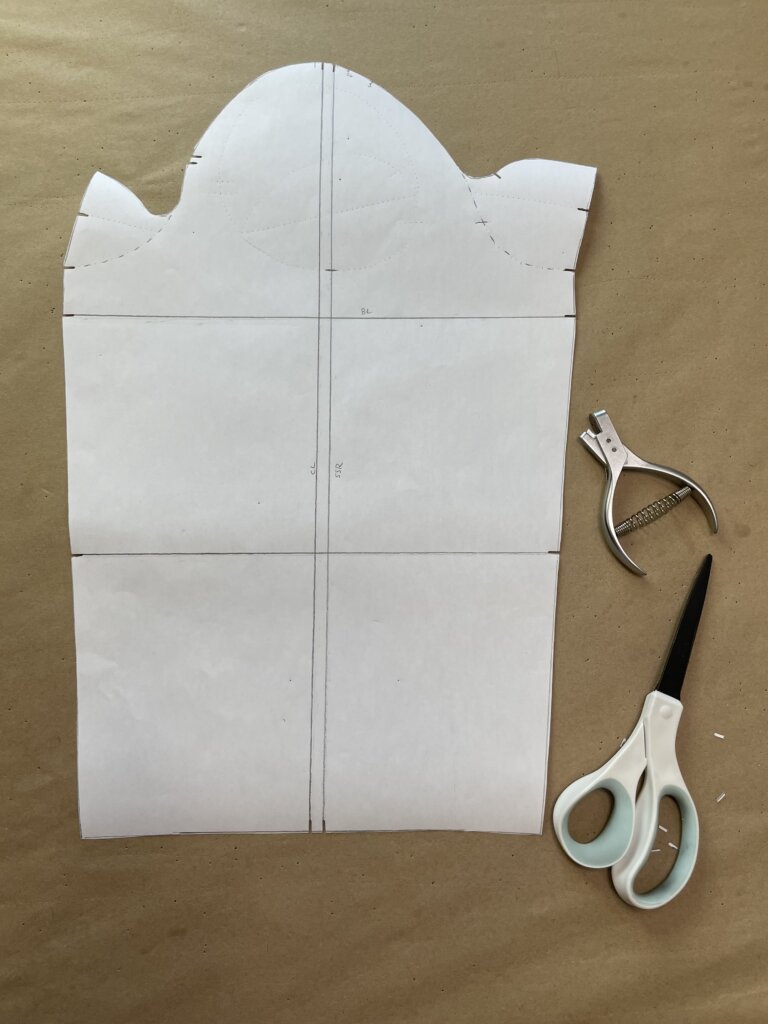
I used my new pattern piece to mark and cut one sleeve from my flannel, before threadmarking its guidelines, …
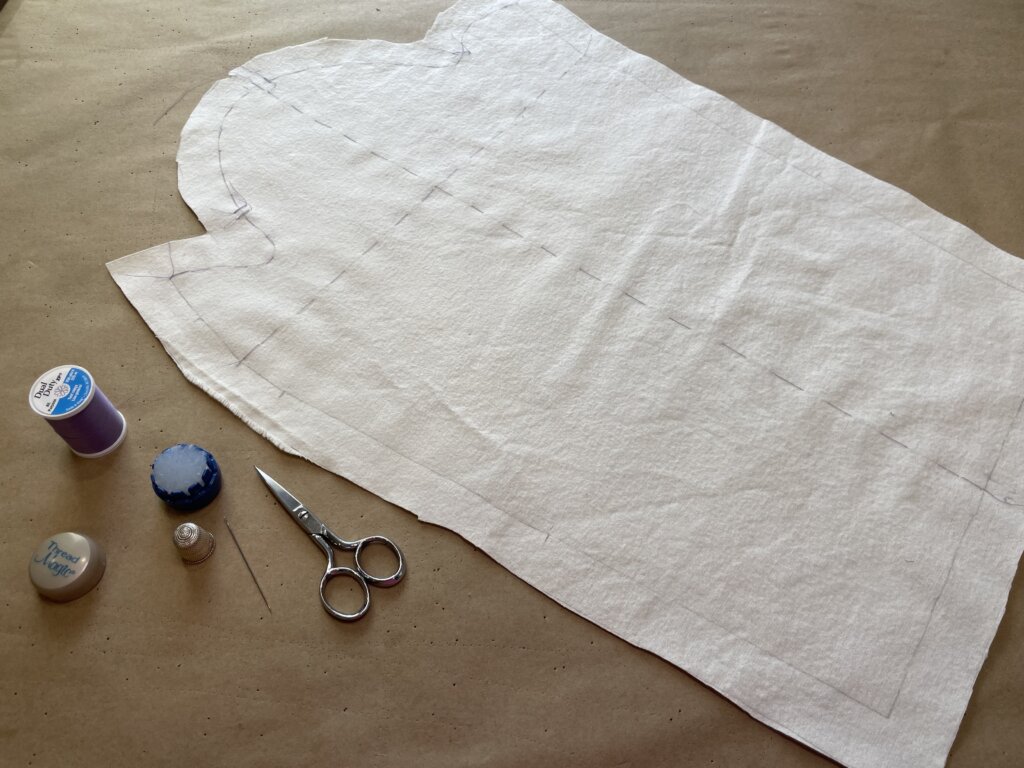
…adding gathering stitches along the sleeve head, …
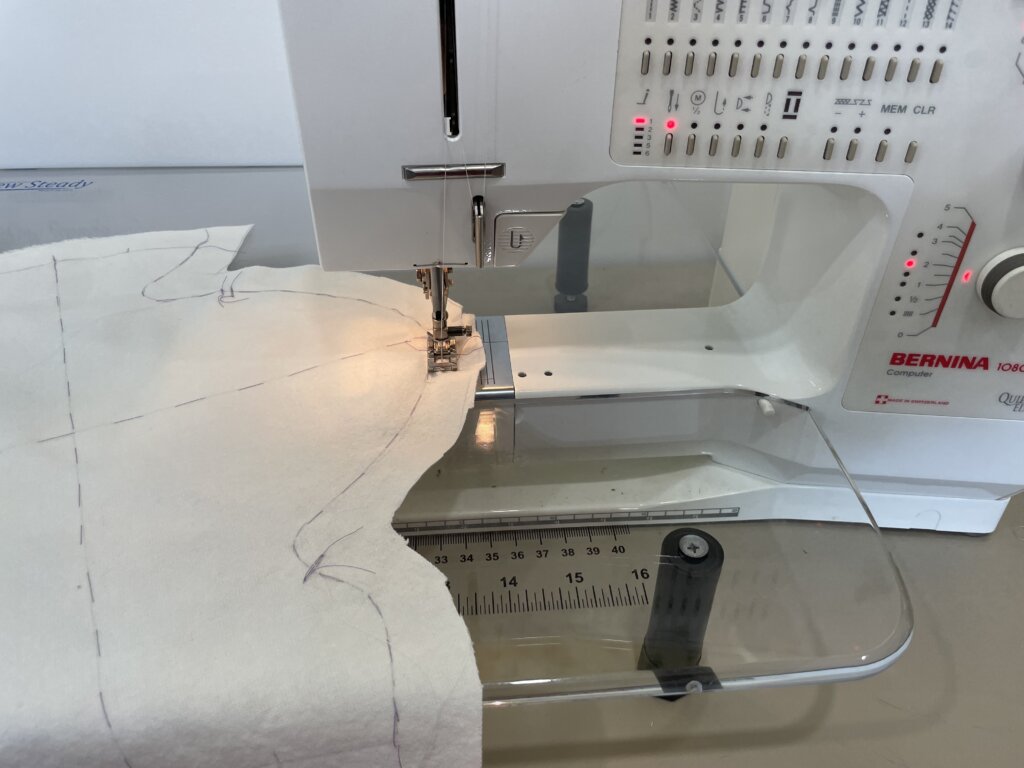
…and pinning and stitching up the underarm seam.
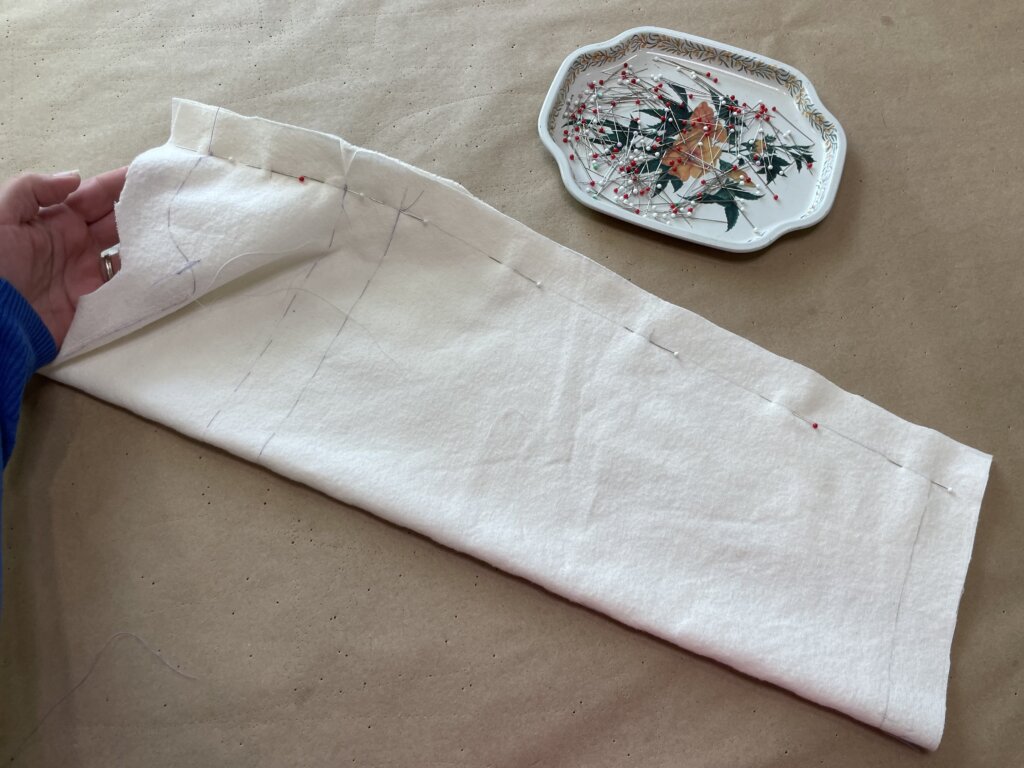
Before inserting the sleeve into the armhole (by hand), I pulled the gathering stitches to match the measurement of the top of my jacket’s armhole, then pressed the sleeve head into a curved shape using my ham. This gets the (larger) sleeve head matching the (smaller) armhole, while creating the smooth curve needed to follow the shape of my shoulder.
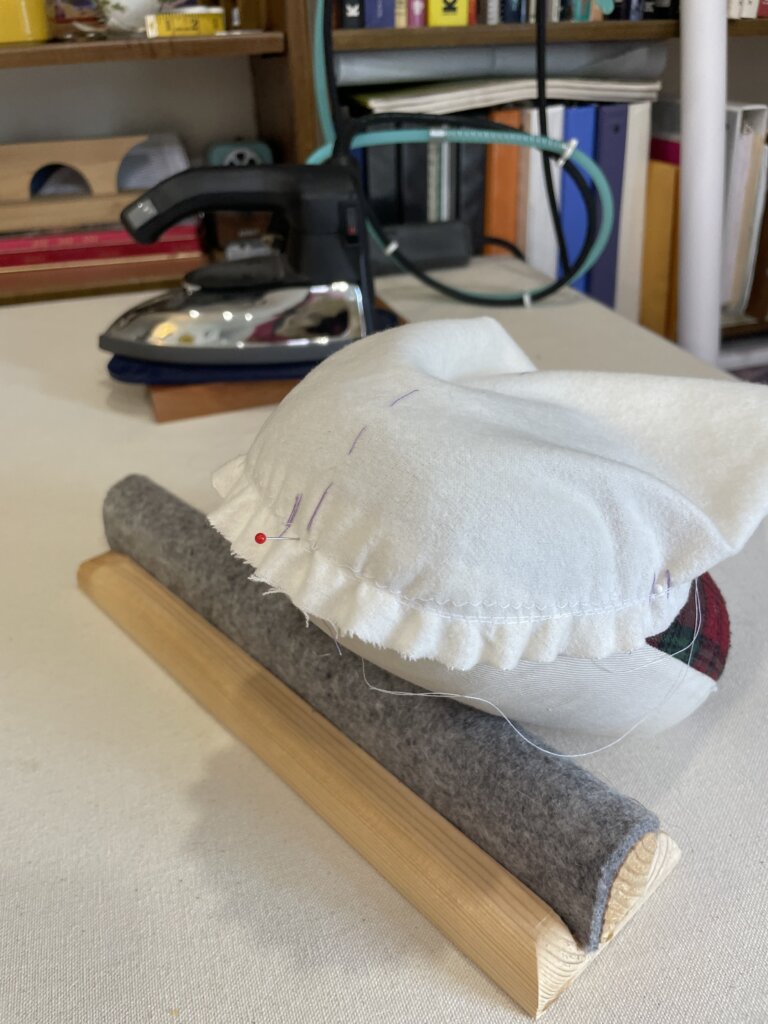
Hey hey! Not bad, is it?!
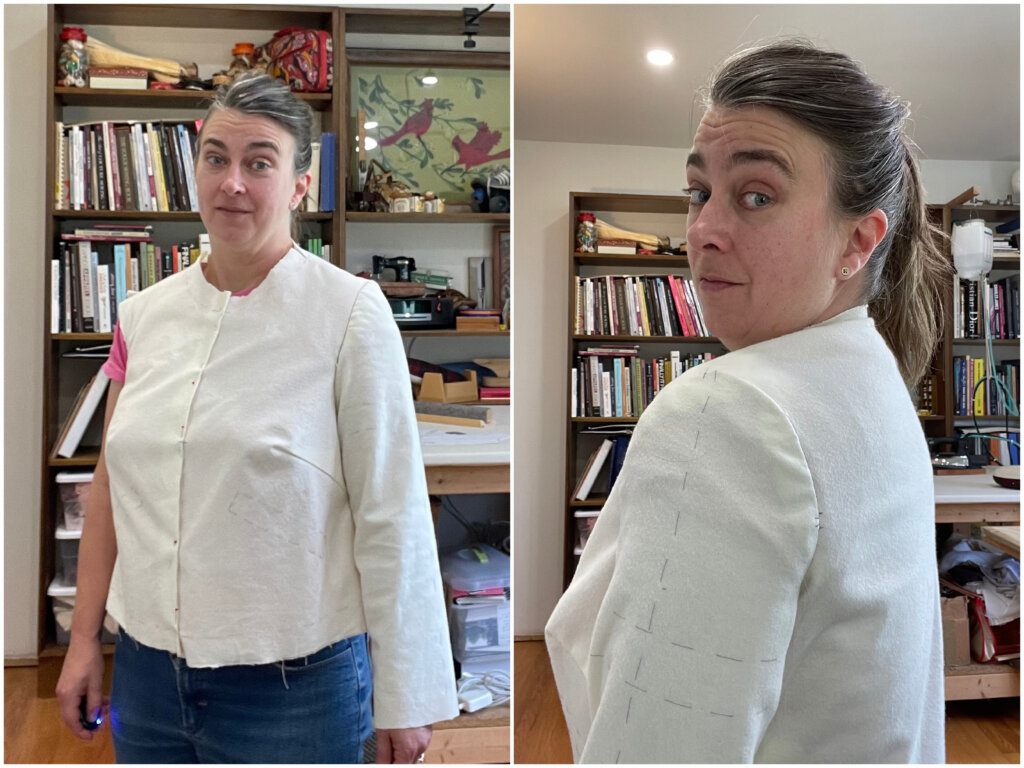
My left sleeve experiment looked and felt pretty great, so I repeated the steps to create the mockup sleeve for the opposite side.
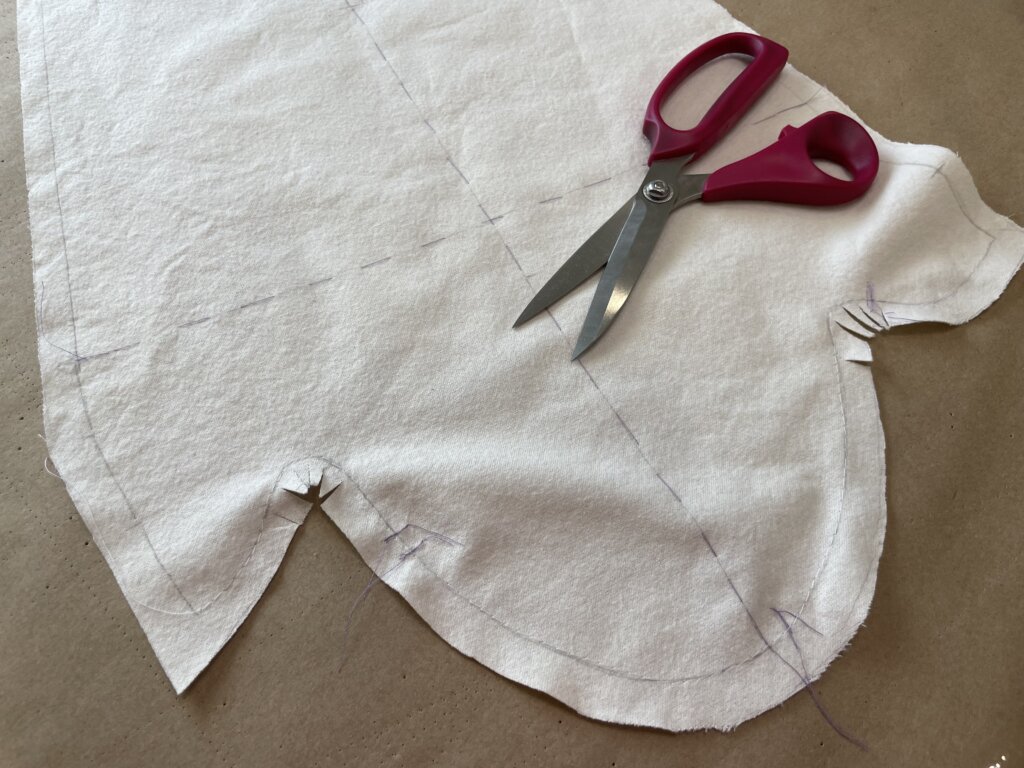
With a sigh of relief, I felt like I had completed my quest for the best fitting set-in sleeves I had worn in years, (maybe decades), while using only info from my body and my preferences (no standardized starting points)!
At this point in my process, I was feeling great about the progress of my mockup- and my years of set-in-sleeve experimentation!
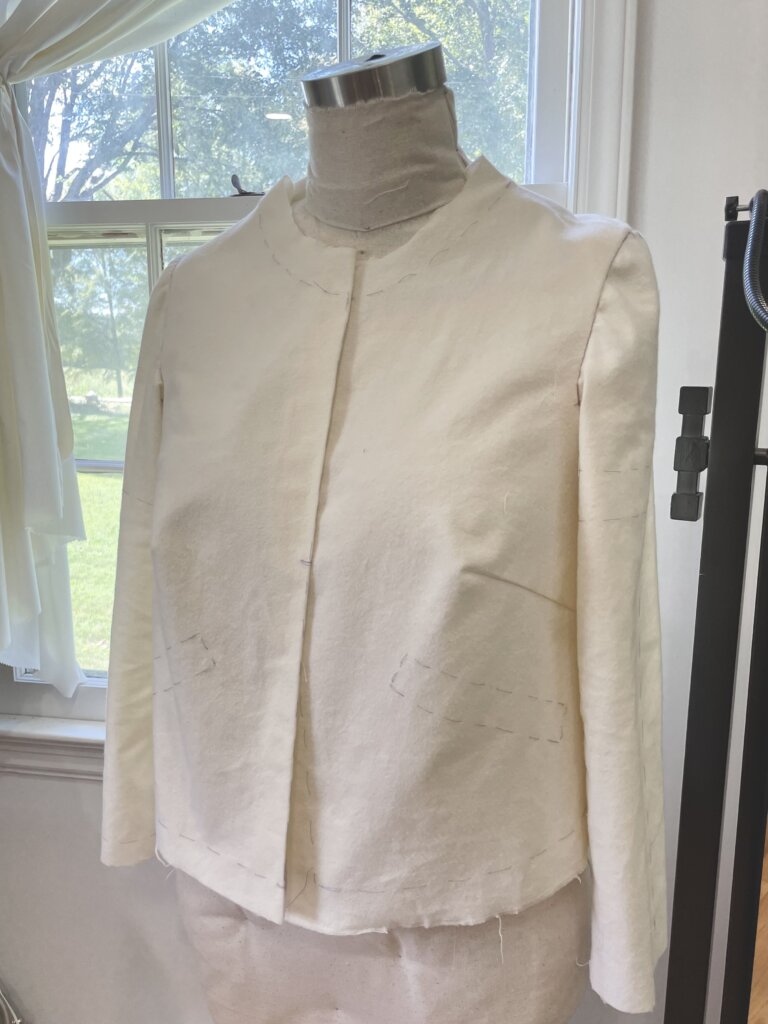
Intermission / Part 2
This is where the story (unexpectedly) took a break. Feel free to do so too! You’ll find the link to jump right back here at the beginning of this post.
The Setback
At the end of August, the morning after celebrating my successful set-in sleeves, I woke up and immediately painfully twisted my back in a way that had me mostly in bed and unable to use my right/dominant arm for over 2 weeks. And I still haven’t fully recovered the use of two of my fingers…
Getting old is wild, ya’ll!
This unexpected physical setback is one of the main reasons why I am sharing this blog post nearly 6-weeks after I finished the jacket, rather than blogging bit-by-bit as I had originally intended. Once I was able to sew again, it was a mad-dash to complete the jacket before Raleigh Frocktails.
I took hundreds of photos, but writing about it would have to wait (especially since I couldn’t really type).
During those weeks off, I did take the time to clean up the studio. I added new paper to the top of my pinnable topped table. (Sorry about all of those Cheez-it stains you may have noticed in the previous photos and videos. I like snacks!)
I also realized that it was especially painful to look downward- and practically everything I was doing in my studio (sewing and using a laptop) involved looking down. I ordered an ergonomic mouse and keyboard, then put together a standing desk. A couple of currently unused pieces, custom-built by my husband for my previous studio, made for a stylish new setup.
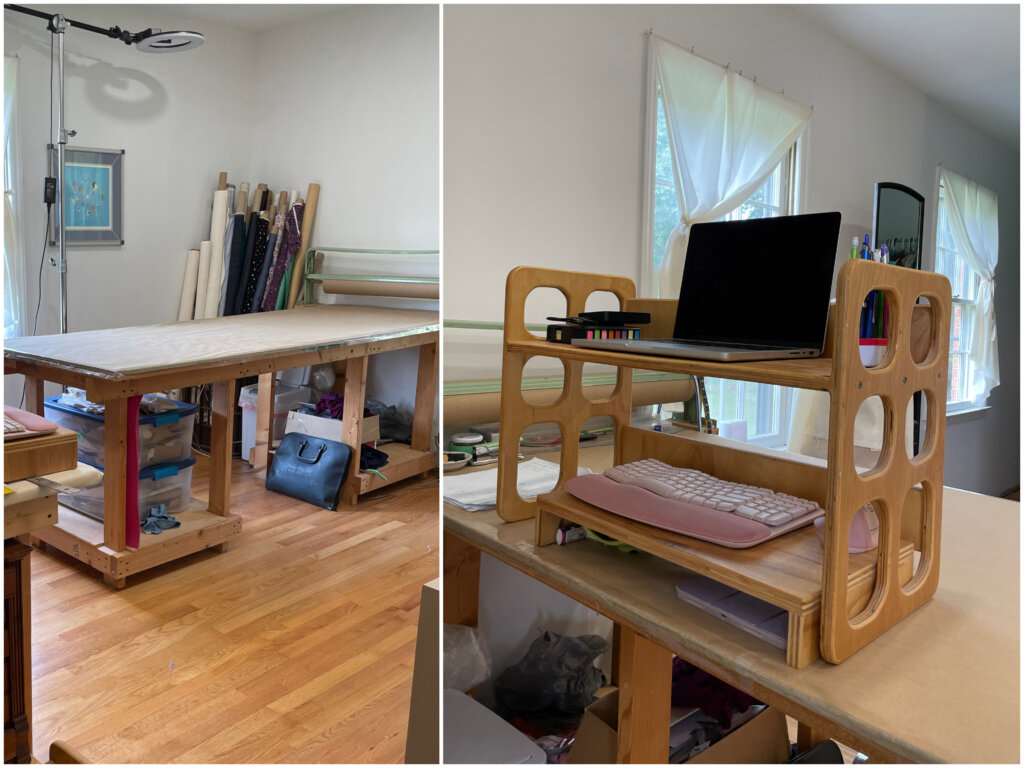
During those weeks down, I was able to ponder and brainstorm, but I wasn’t able to perform any experiments. Since my custom sewing process moves forward one step at a time, I couldn’t work on much of anything related to my jacket project.
Fine-Tuning Experiments
Figuring out the collar was next on my mind.
I had been toying with the idea to mimic a the classic stretchy knit collar band style with a draped bias strip of my stable silk/wool satin. Sometime during my down-time, I did manage to crudely cut a strip of bias flannel (with my left hand) to see if my idea had any merit.
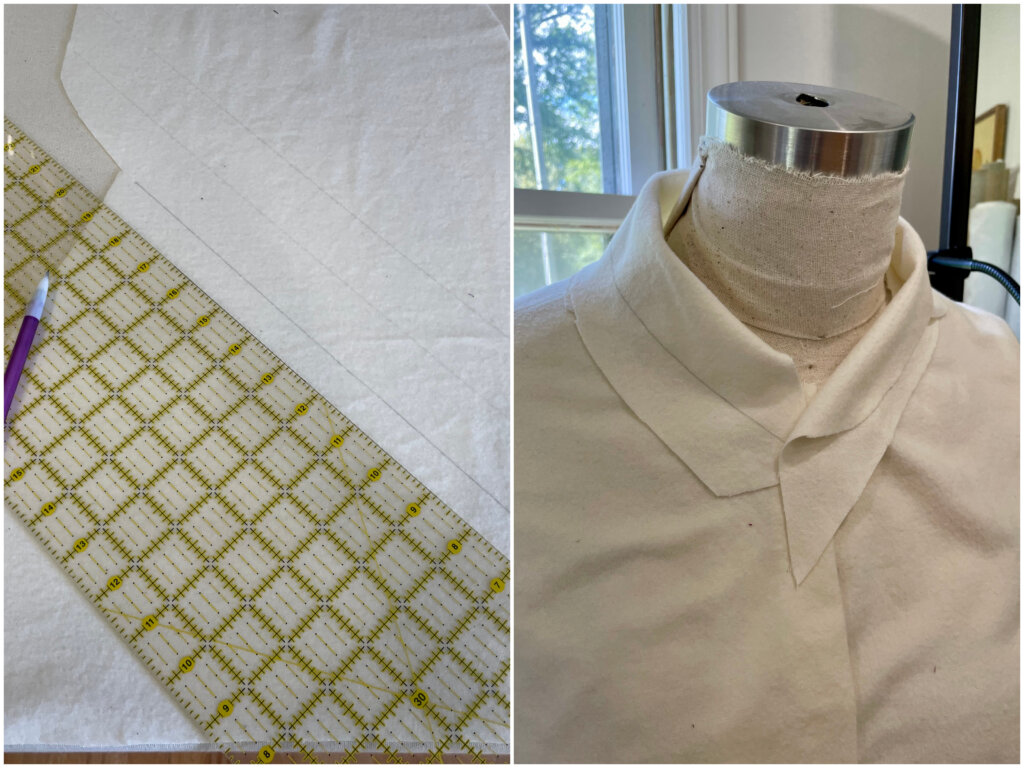
And when I was feeling able to pin myself into my mockup, I crudely tried it on. I think it could work!
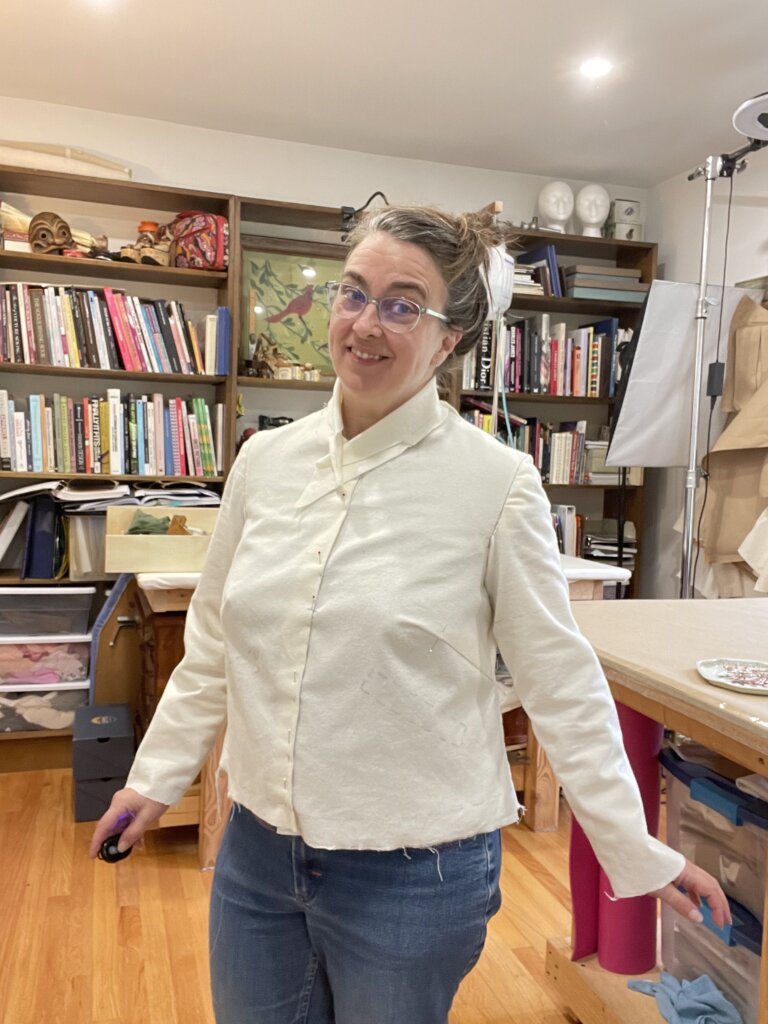
During this try-on, after my weeks of thinking but not sewing, I also investigated whether I might want to back-off the bust dart further. Maybe add a little curve to it?
And when I started feeling a little better, I updated my pattern and marked my mockup to give my idea for a new bust dart shape a try.
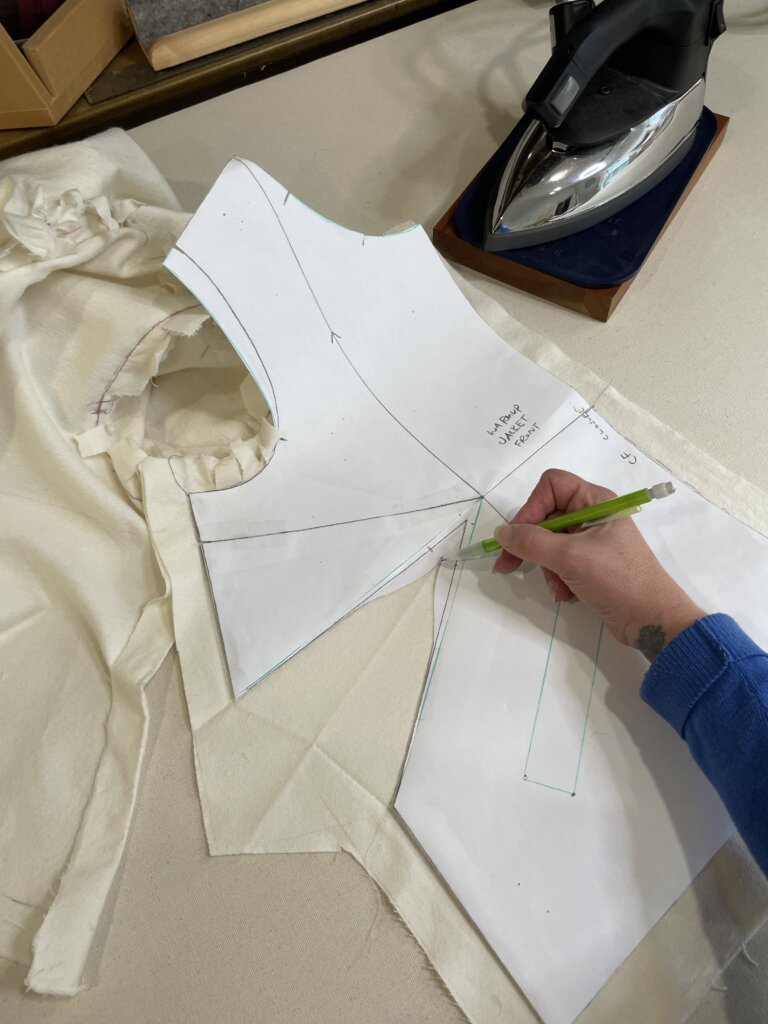
I also wondered if my fabulous new sleeves might look and fit even better without the extra length I originally added to the shoulder…
Below, I’ve folded the first draft’s shoulder extensions back to match my original armhole from my block, to trace it onto my mockup.
I only added these bust and shoulder edits to one side of the mockup, so that I could compare the results of my experiments, right and left.
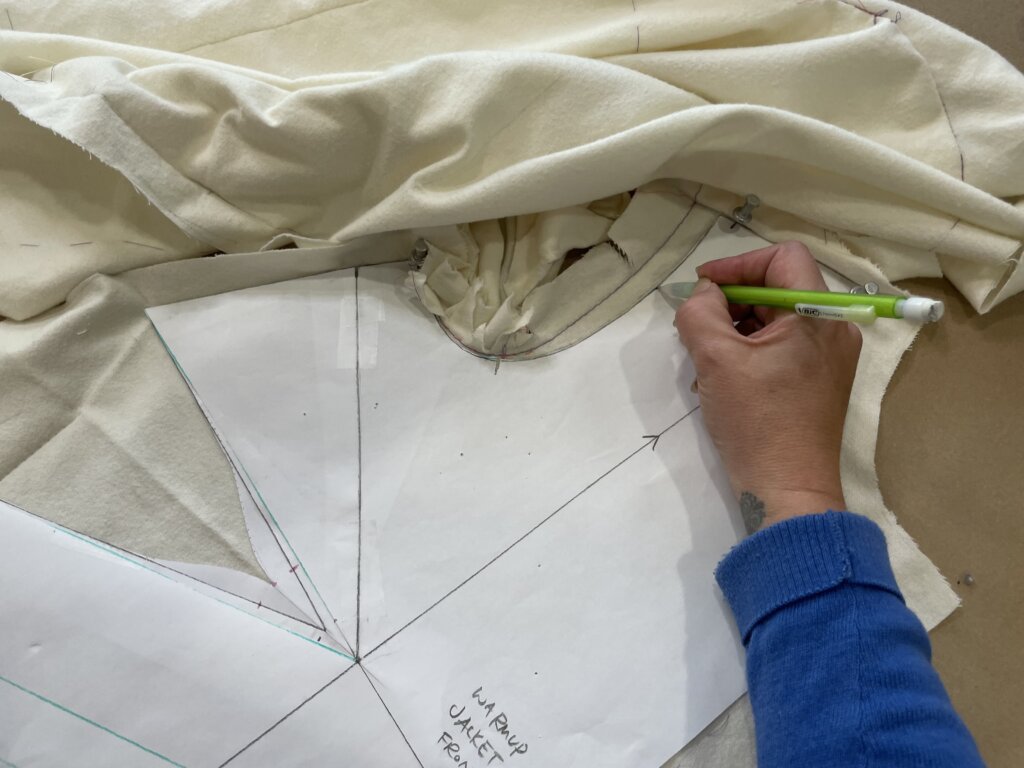
And here’s the results!
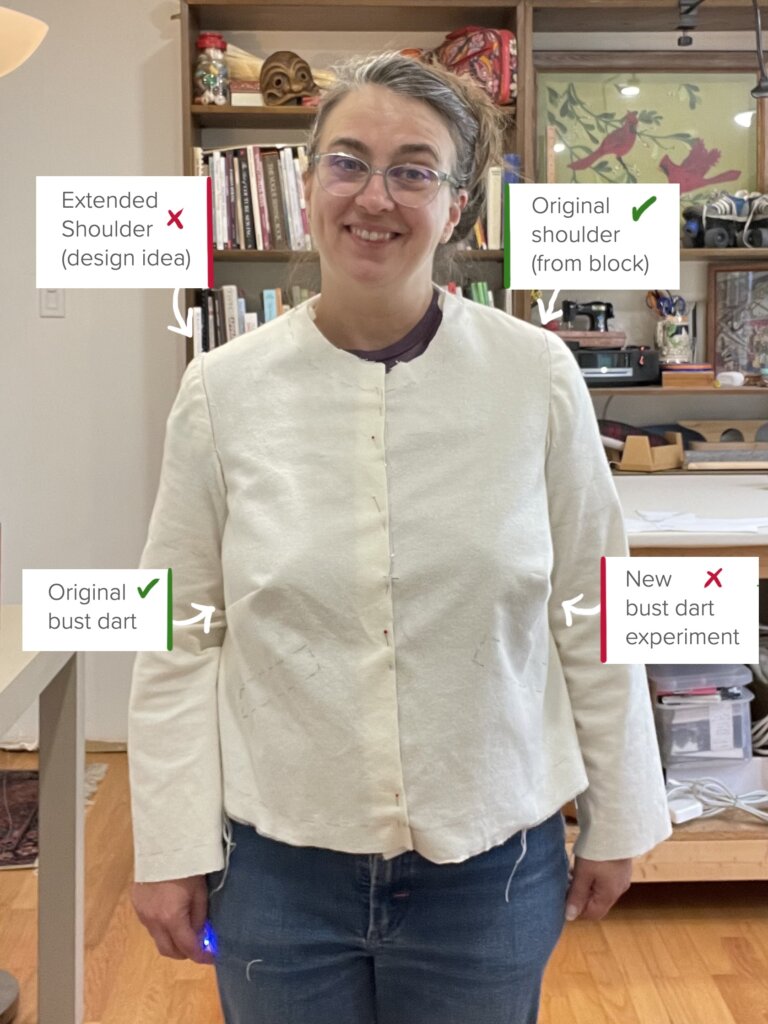
My conclusion: Though the differences were very subtle, in both cases, I decided to go back to the original tried-and-true lines from the block. No to the extended shoulder, and No to the new shorter curvier bust dart.
Though it was fun to experiment, I eventually ended up with very few changes to the original block. I sometimes forget that designing can often be pretty straight-forward when you already understand how something fits. Hooray for custom sewing!
More Collar (and other) Experiments
Happy with the base fit, I edited my paper pattern, and each side of my mockup, to match my preferred bust dart and shoulder width. I was ready to move on to the collar.
I started testing my ideas by pinning and basting a folded bias strip onto the first draft of my collar opening.
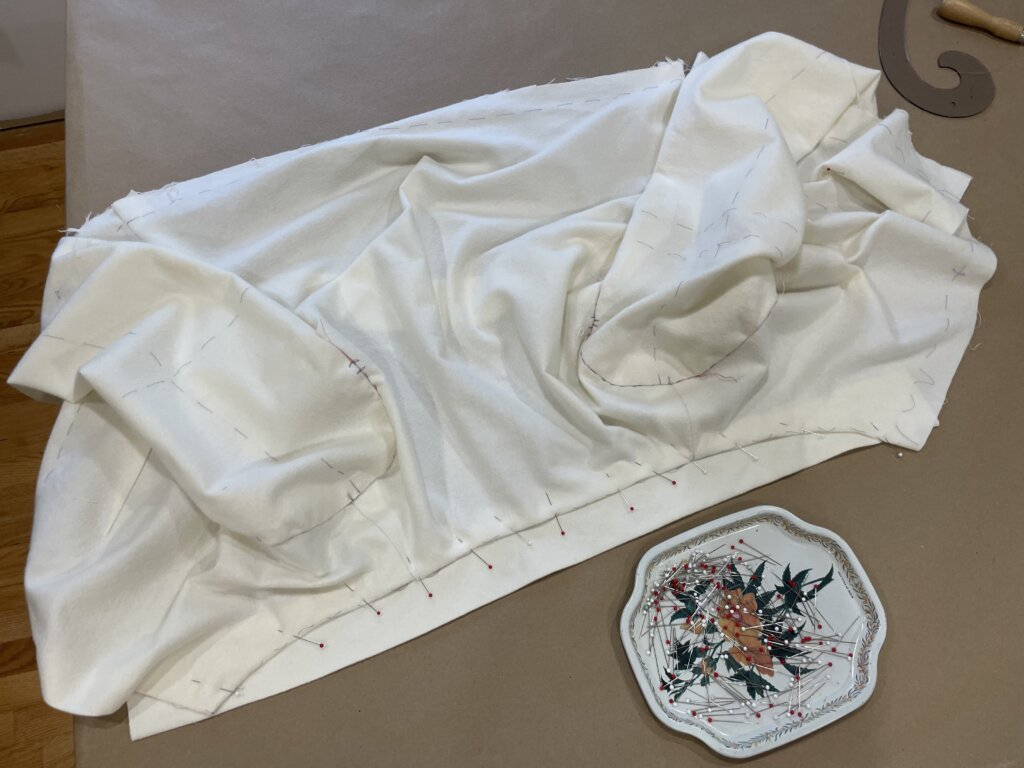
Not bad! Kinda cute!
I think this is going to work…
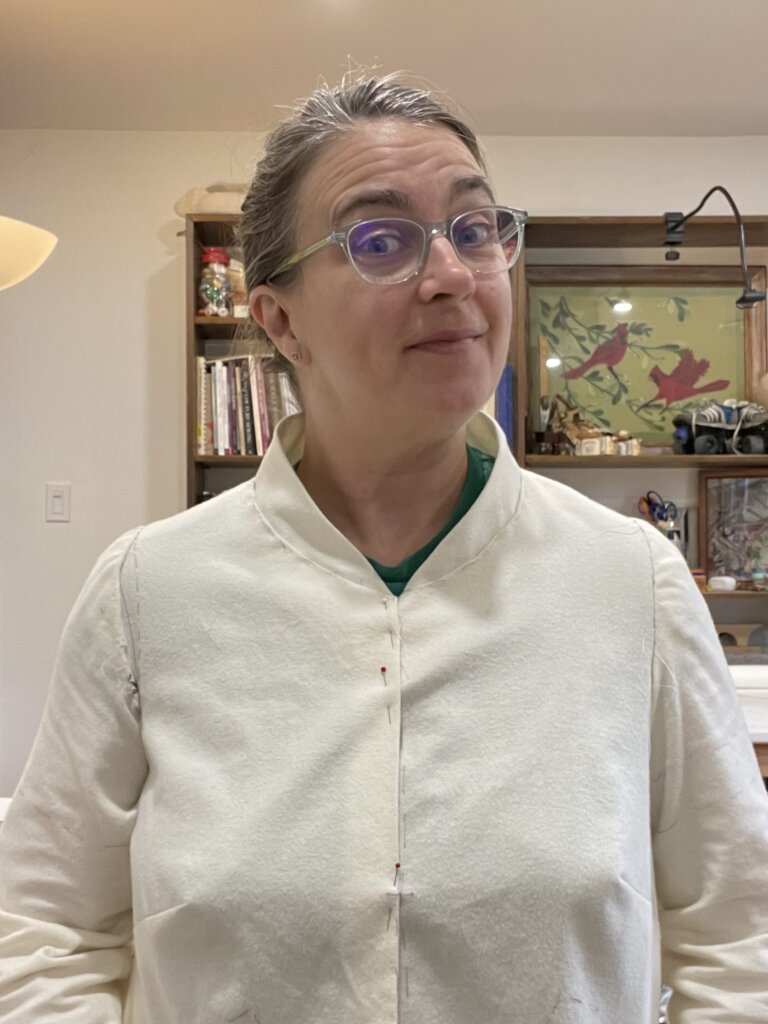
But also…
During this try-on, I noticed that my newly basted shorter shoulder seemed to be a little tight – only on my right side, only on the front. In the photo above, you can see the front sleeve head seam opened up a little, which felt a little more comfortable. My shoulder seems to be telling me it needs a little more room- only in that spot, only on that side.
So I added that asymmetrical correction to the upper armhole of my pattern…
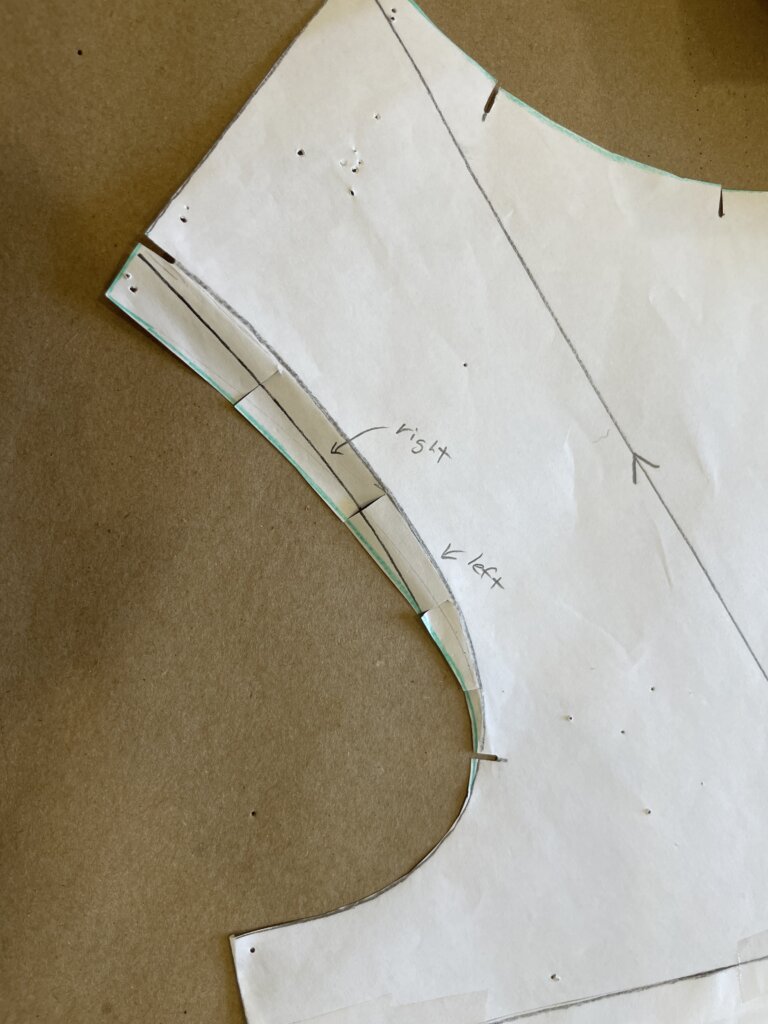
…while still thinking about the collar.
As I played around in front of the mirror, I pulled the front neckline a little lower, making the band a little straighter. Would a slightly different shape make the collar hug the neck a little better?
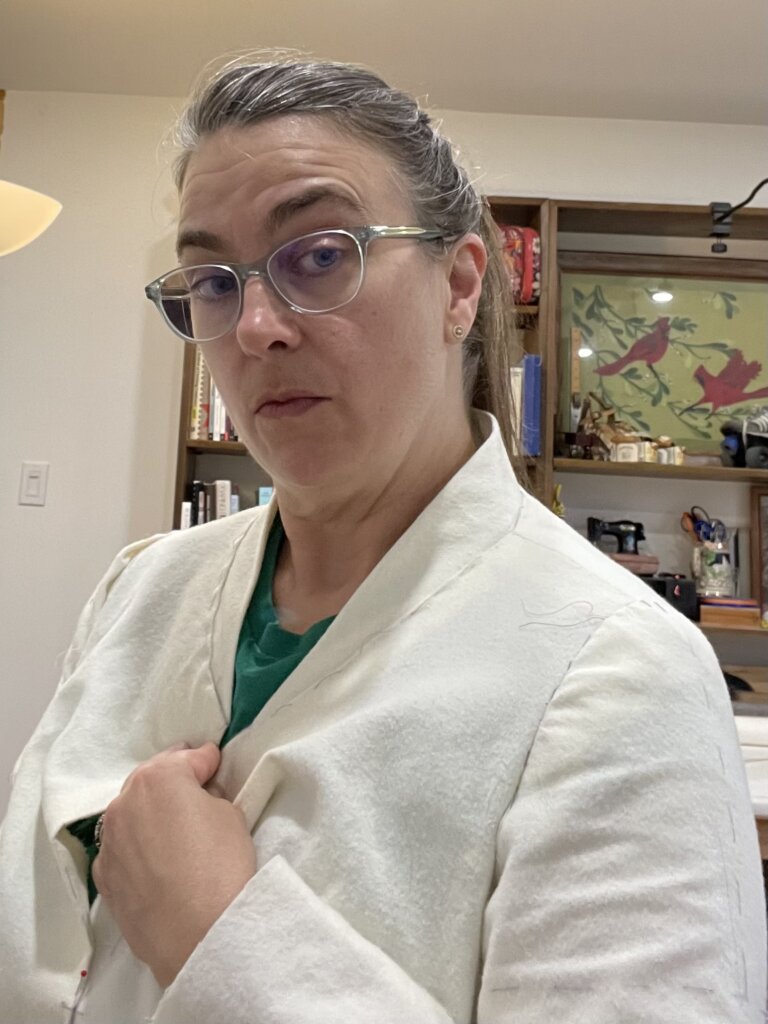
To test this theory, I quickly removed the basting from one side of the front collar and folded back a slightly different neckline shape near the center front,…
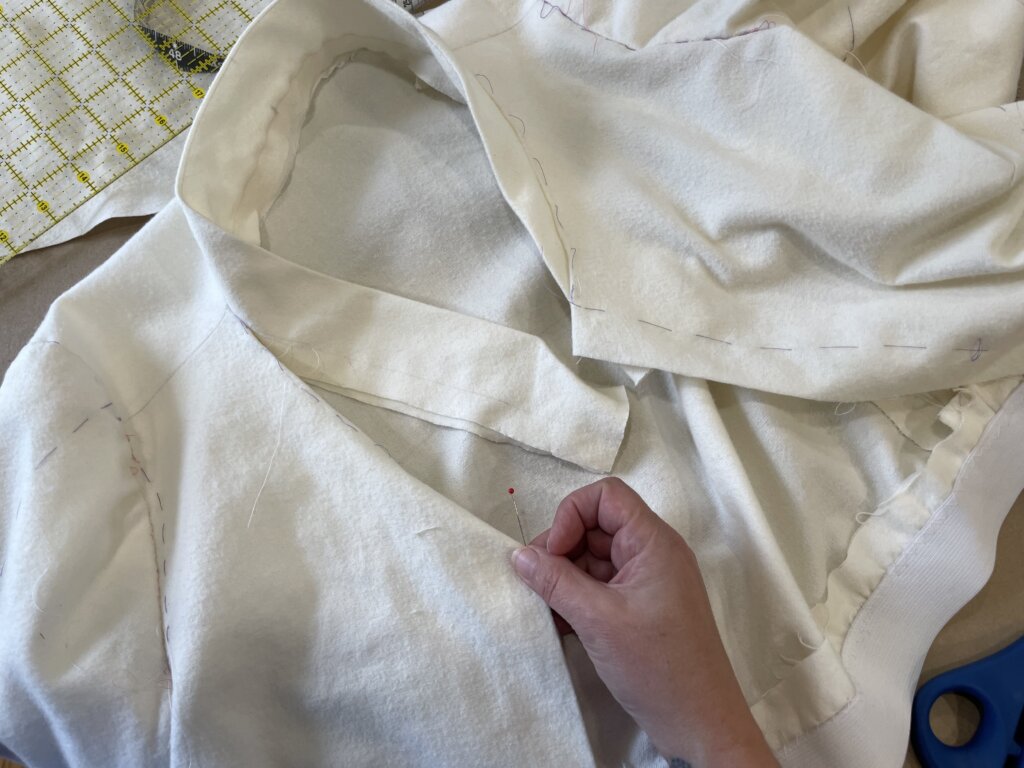
…then, pinned and stitched the same strip into the new hole.
I also basted the right sleeve securely into the new armhole, to test my asymmetrical front shoulder experiment.
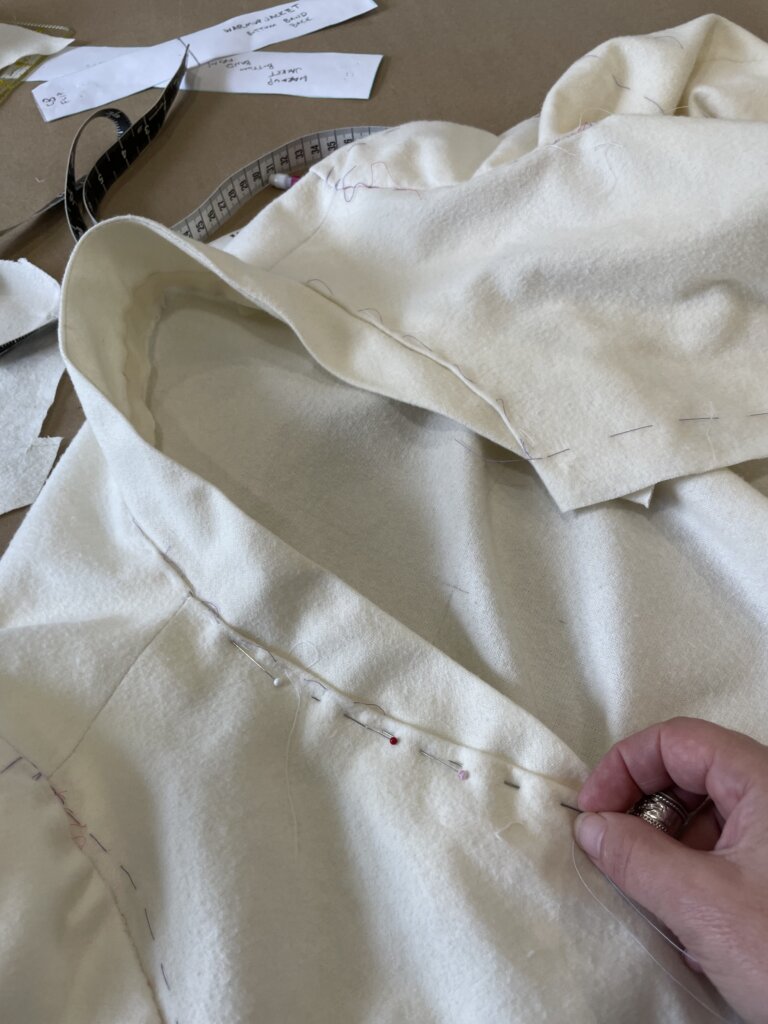
Better on the new side!
But I felt inspired to keep playing around with the collar…
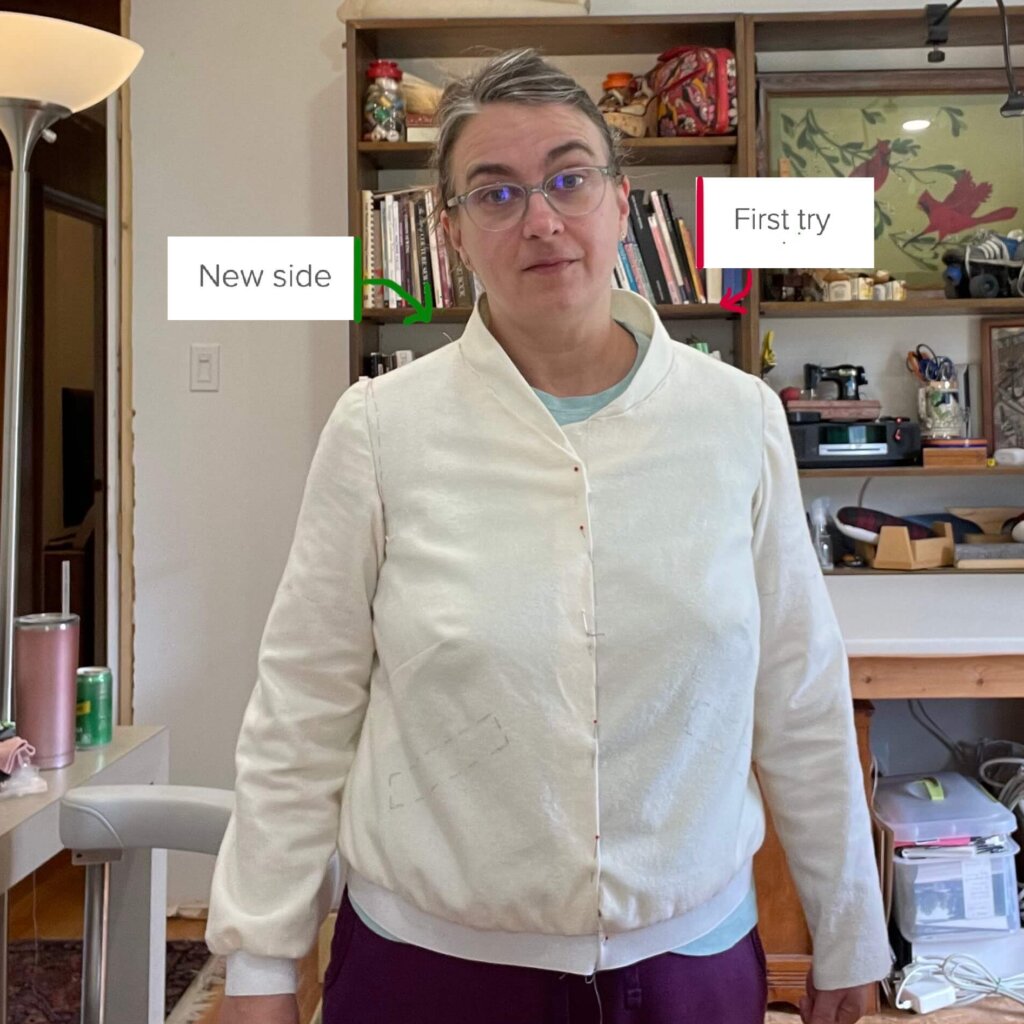
After giving it some thought, I wondered if my original idea to widen the neckline was the problem. I had the idea to widen it because that seemed to be how the neckline was shaped in my knit band collared inspiration examples. But since I’m not using a knit band in the collar of my jacket, I wondered if moving the seam back closer to the neck would give me more of the look I was looking for while using the materials I wanted to use.
To experiment with this idea, I taped that little extra faux collar piece back onto my working pattern, reconnecting the teal lines of my original first draft. Then, I drew a new (pink) line representing the new curve that I wanted to try, before trimming along my line to reveal my new edge.
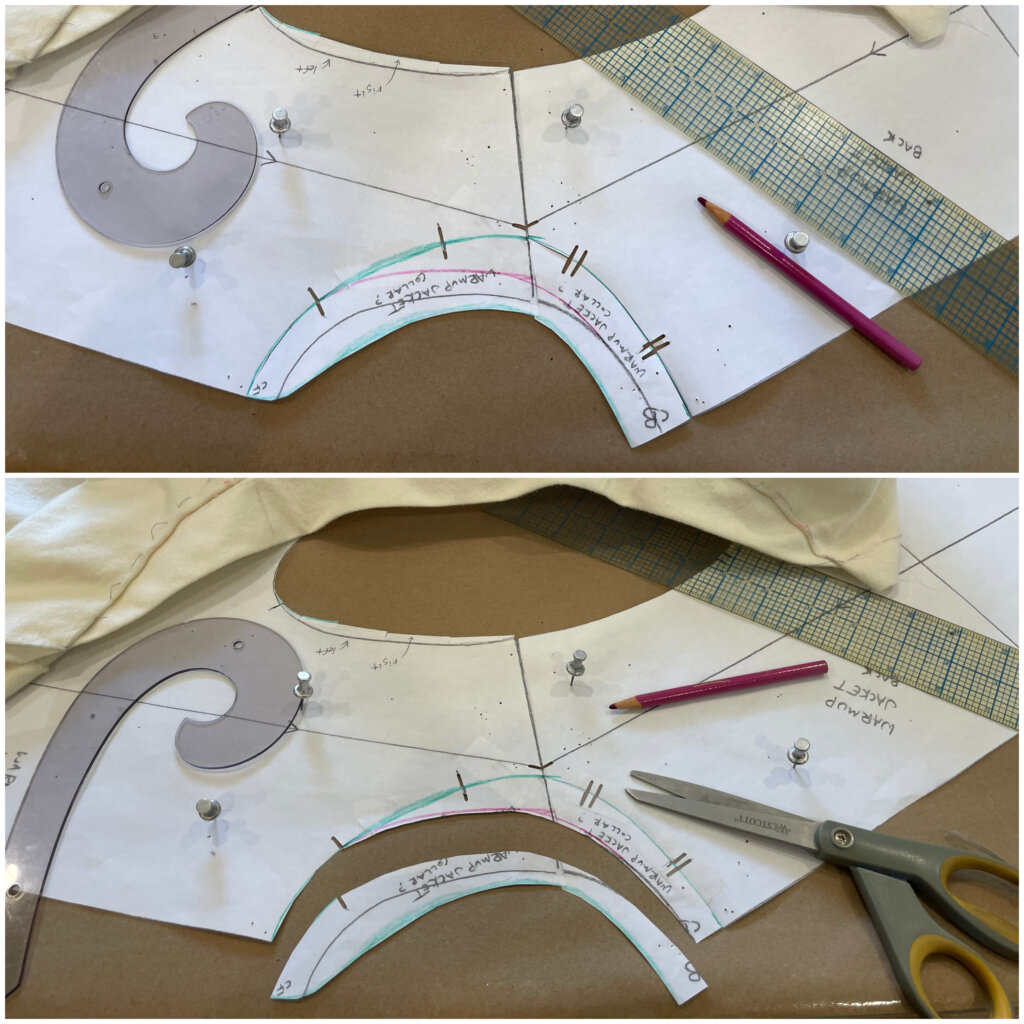
Then I used the new pink edge of my paper draft to draw the new line onto the mockup. This moved into the neckline allowance, some of which had been clipped (which is not ideal), but I made it work. I then, threadmarked the new neckline opening with pink thread, before re-basting the collar strip onto my new line.
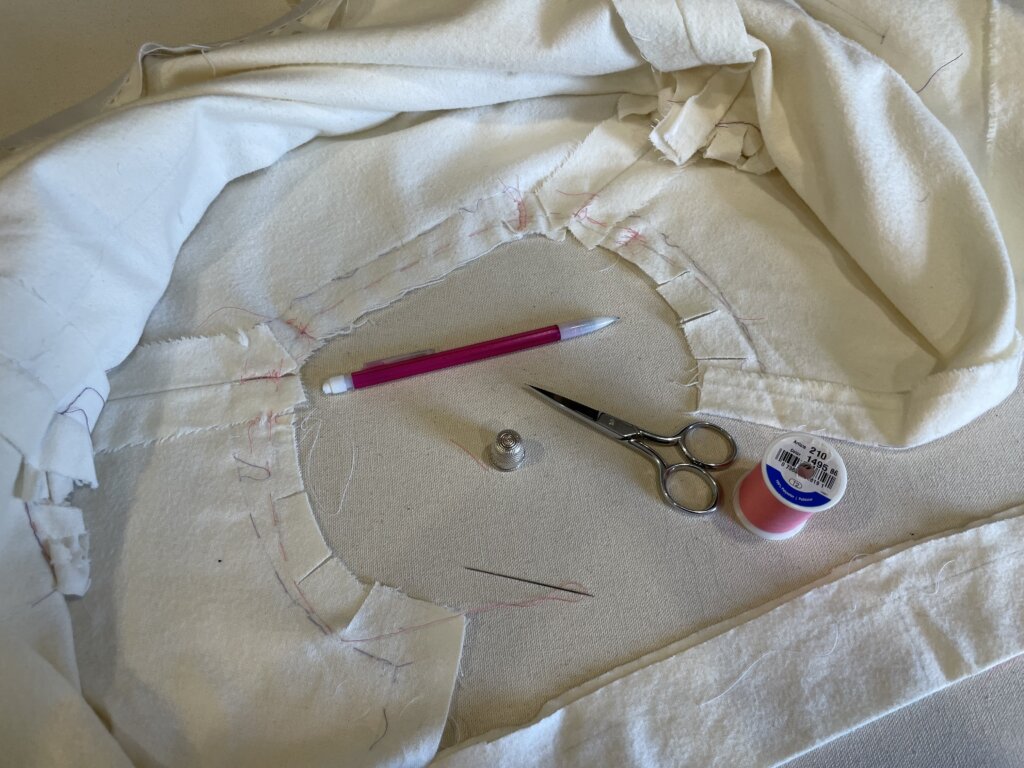
Yep. The narrower neckline (and extra fabric on the right armhole) seemed to offer success!
Love it.
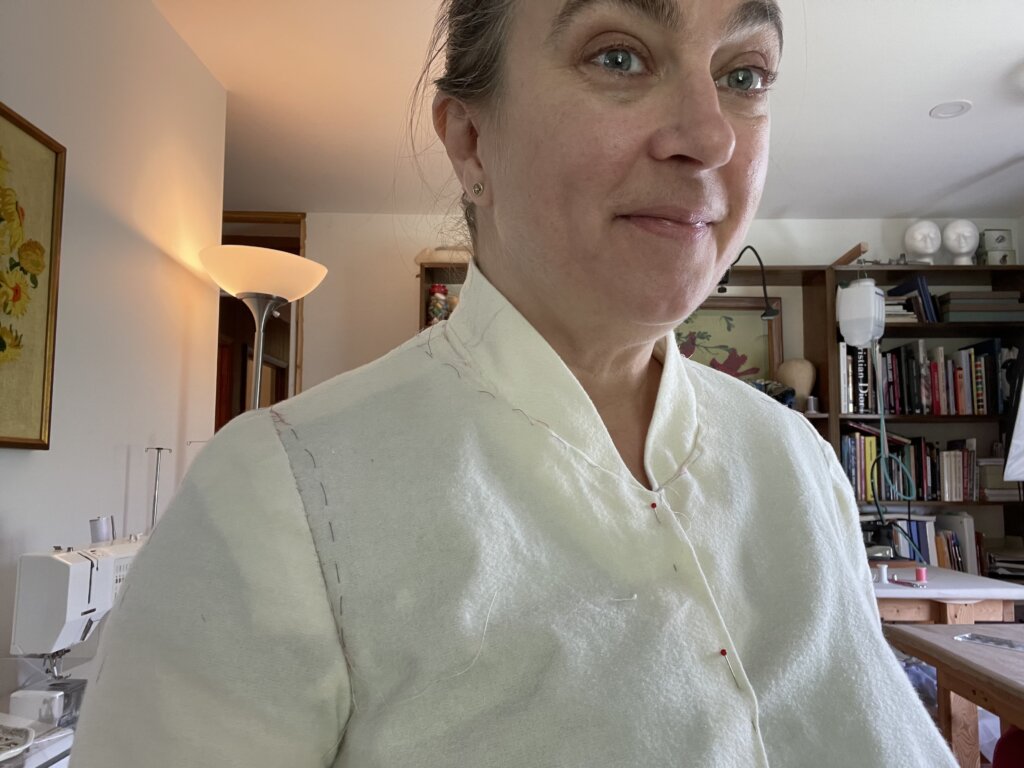
The Finishing Touches!
At some point off-camera, I tested the arm and hem bands with my friend Pamela’s Patterns Fantastic Elastic, with the idea that I’d cover it with bias to keep a bit of stretch. I also played around with some different pocket sizes and placements through various threadmarking…
To test out my preferences for lightning bolt size and placements, I digitally traced the exact lightning bolt icon from a photo of my Yves Saint Laurent fabric on my iPad.
After blowing up my quick drawing to match the sizes I wanted to test, I pinned some printouts onto the jacket.
Love it!
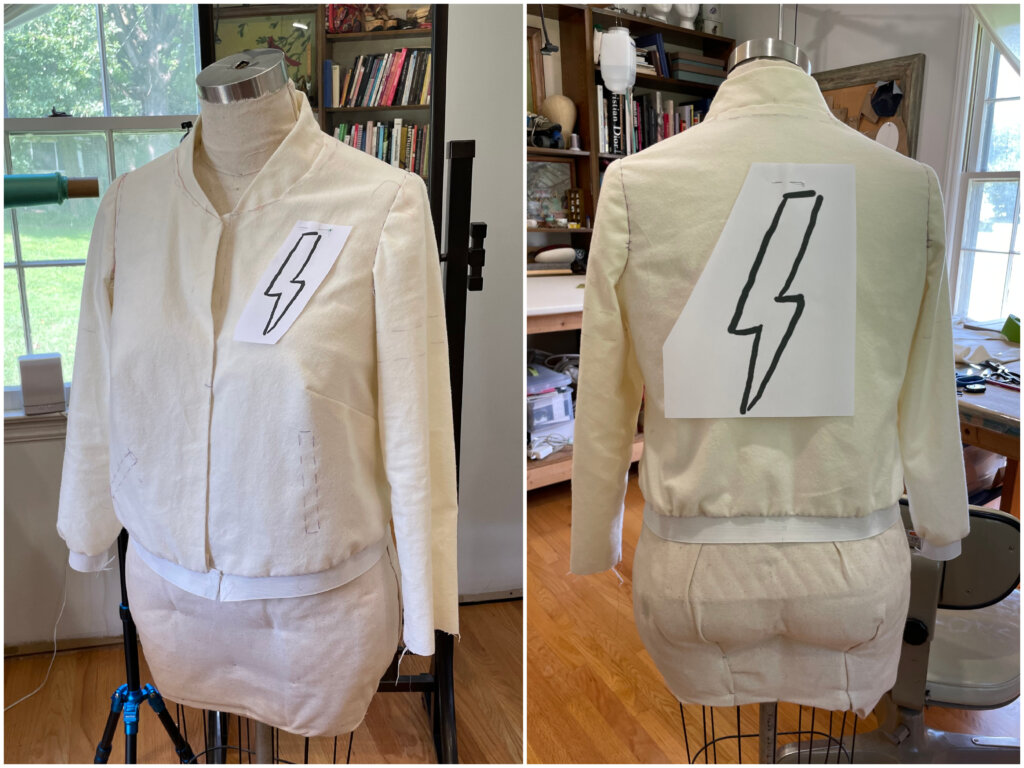
There would still be plenty more experimenting to do, but I felt like I had reached the point in my process where my pattern was ready to move out of the mockup stage. So exciting!
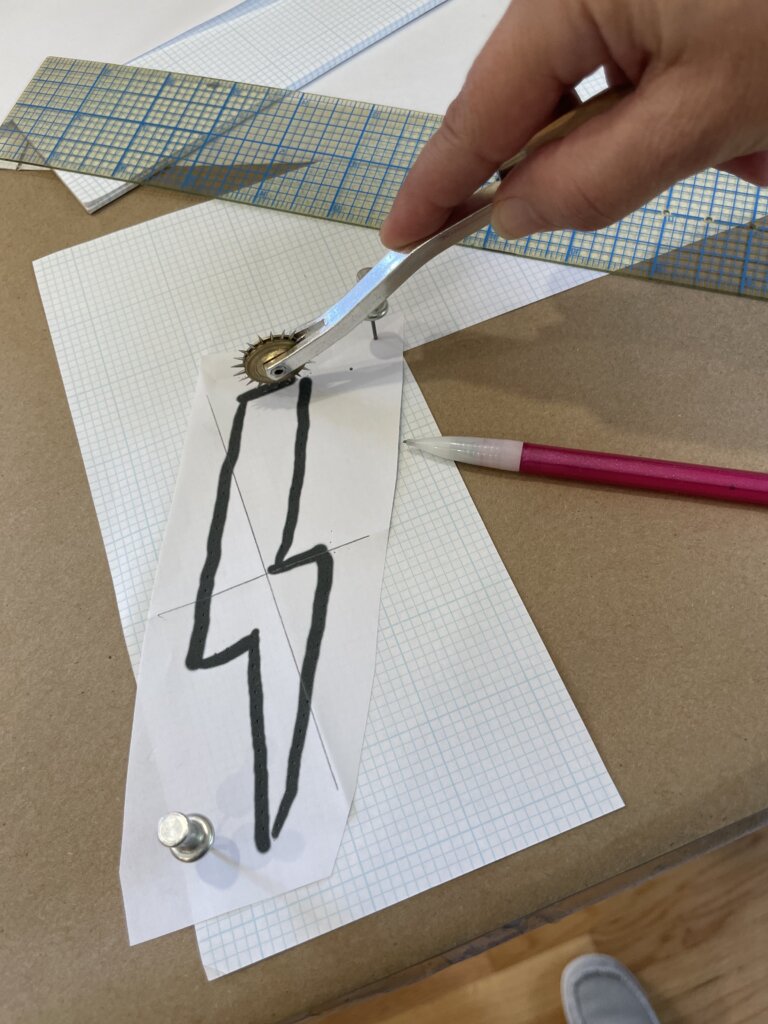
My Pattern Ready for Fabric!
After a little cleaning up, my pattern was ready for the next steps…
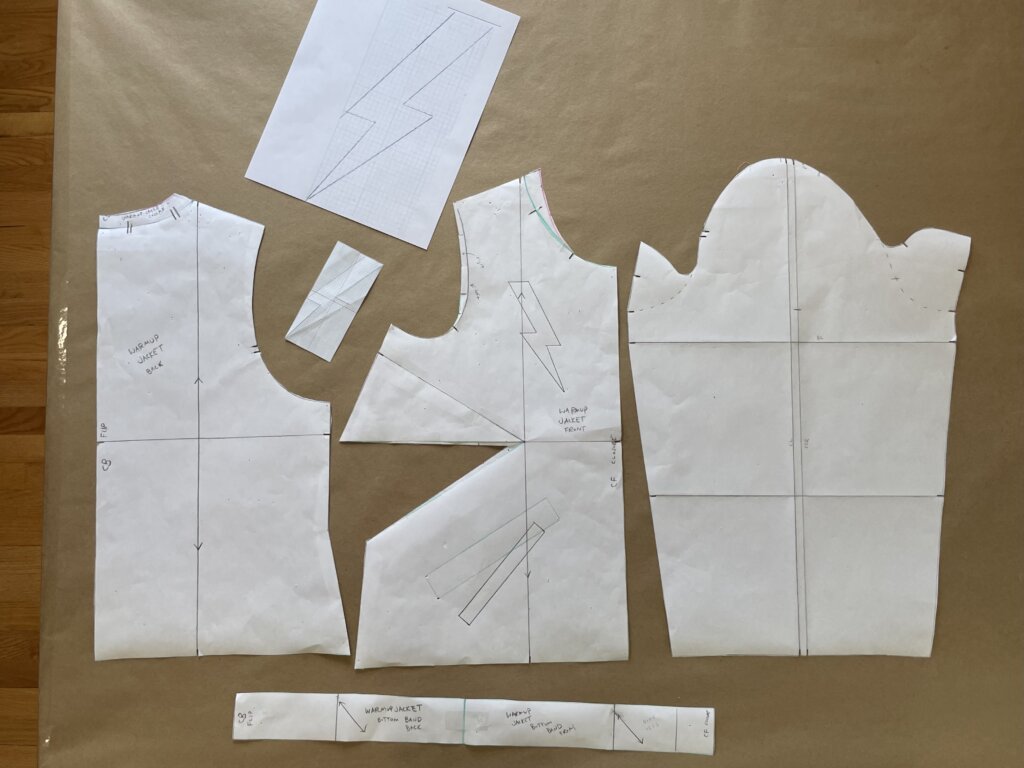
…and my mockup was ready to be disassembled and repurposed as a backing layer for my silk/wool satin, hidden inside the actual jacket. (As you may already know, I love using my mockups as my underlining!)
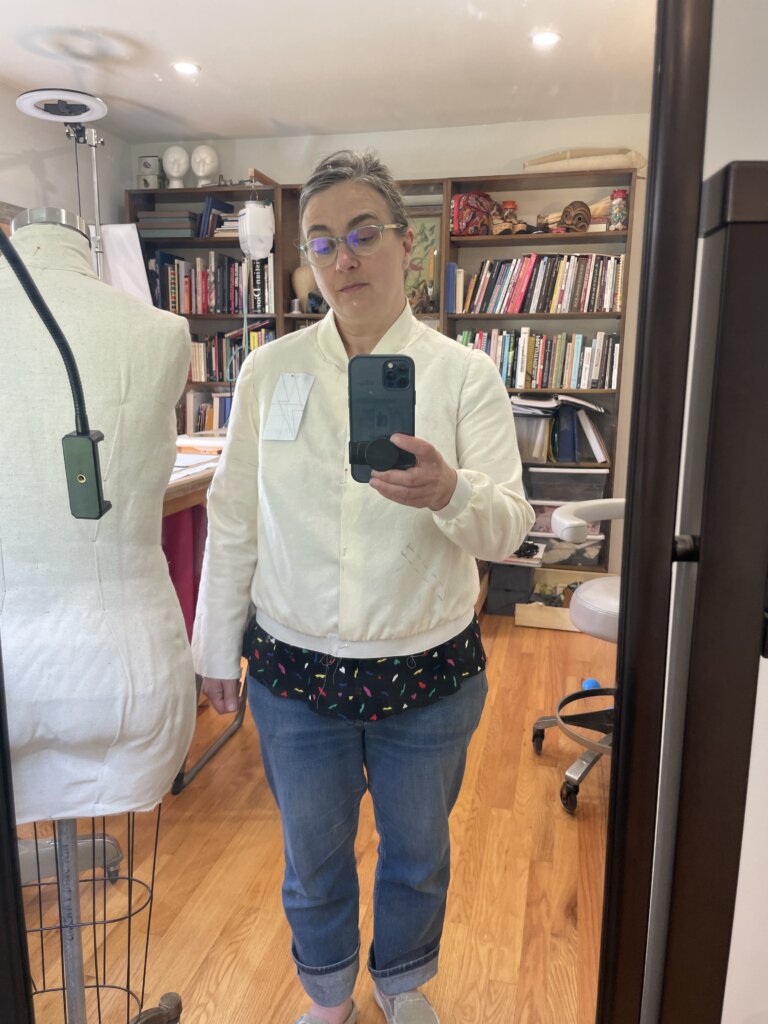
Which is where I’ll begin the third post in this series: Constructing my Warmup Jacket!
Here’s me setting up the shot for the first video in my next post- while unknowingly filming myself (and listening to the AudaSEWtea podcast.)
And…
Right about this time (the last week of September) is when the editor of Threads Magazine reached out to see if there were any photos of the finished jacket that they could print along with my sketch in the article I wrote for their upcoming Winter issue.
The answer was no…
But in theory, I’d be wearing the finished jacket to Raleigh Frocktails in like a week and a half….
She said they would wait for it…
No pressure, right?!
My unexpected injury and the looming event (and article) deadlines had me unexpectedly learning to use my body, my tools, and time in new ways. I learned what I could and couldn’t do with my hands, and what I could and couldn’t do on my To-Do list. Even when it meant publishing this (probably too long) blog post approximately two months after I originally planned.
But life is full of surprises. Good and bad. And we still get where we are going, usually at the right time.
To-do lists get to-done, even when it is not to-day.
And, despite the setbacks, I did finish My Warmup Jacket- which I will share in my next blog post (and in Threads Winter 2024 issue)!
NEXT POST: Watch me cut, stitch, and complete my lightning-bolted silky satin Warmup Jacket, sharing the behind-the-seams construction stories and the finished look! Stay tuned….
Want to learn more about the way I sew?
My Intro to Custom Sewing eCourse Skirt Skills starts January 8. Enrollment opens December 28!
“Brooks Ann is an amazing teacher with a great knack for approaching sewing/fitting concepts in a unique, naturally curious way.” -Preet


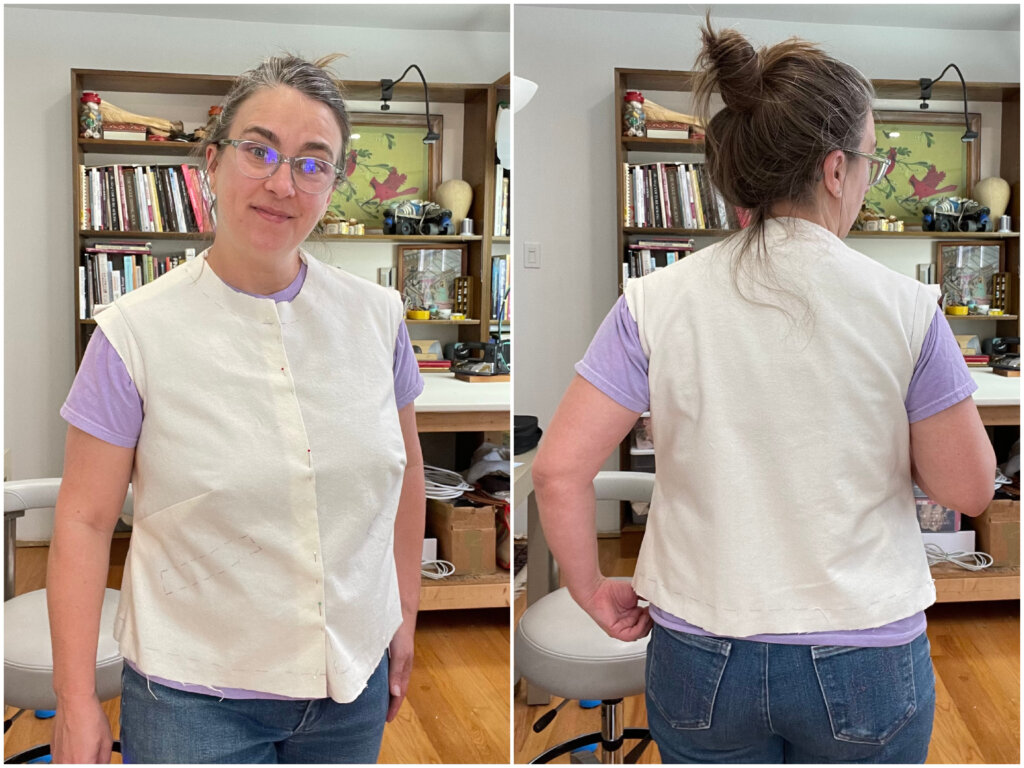
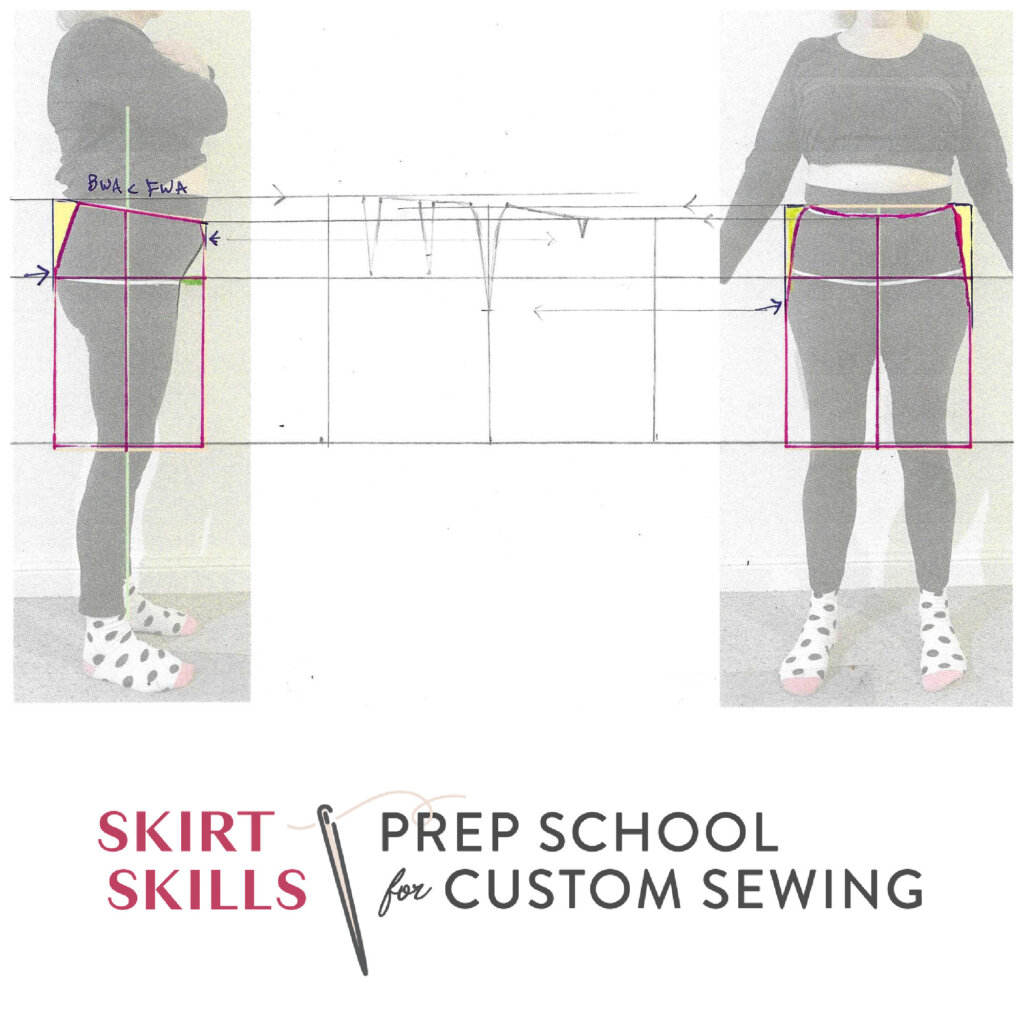
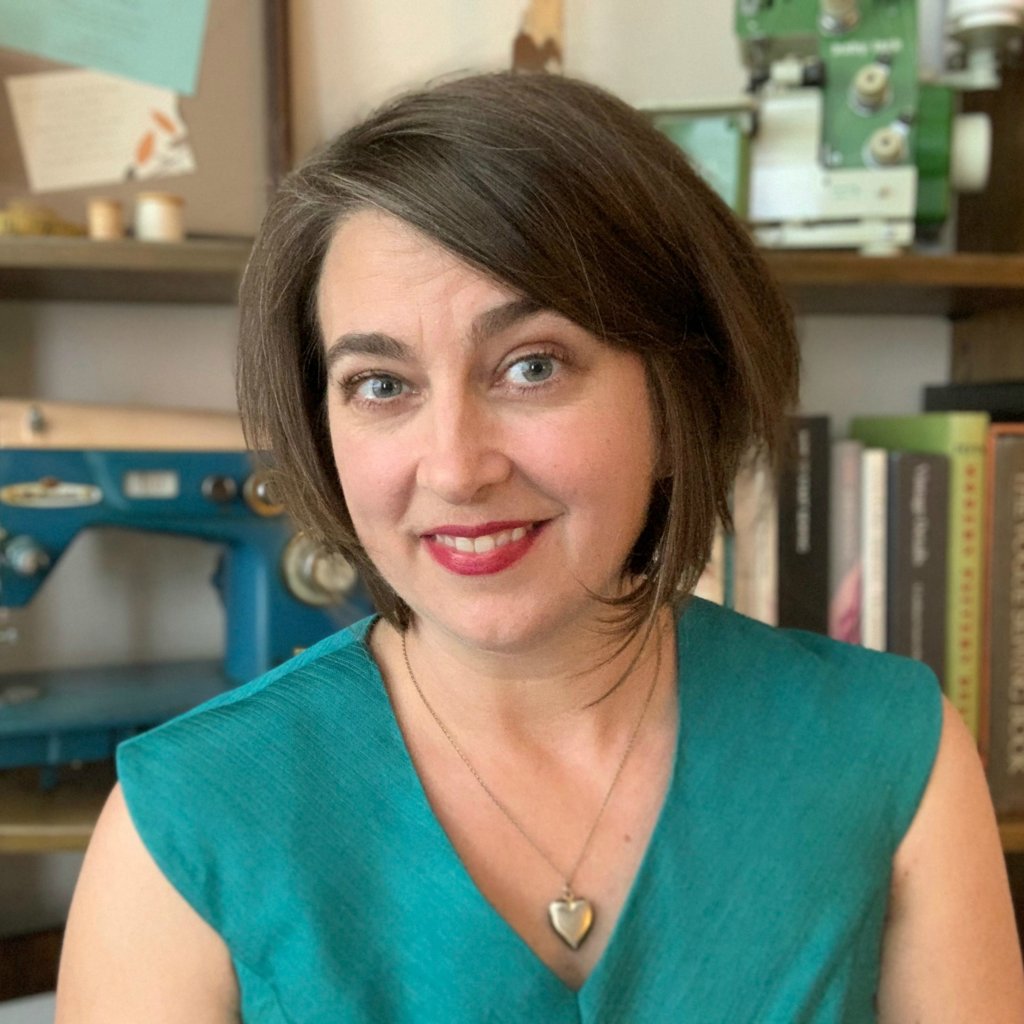
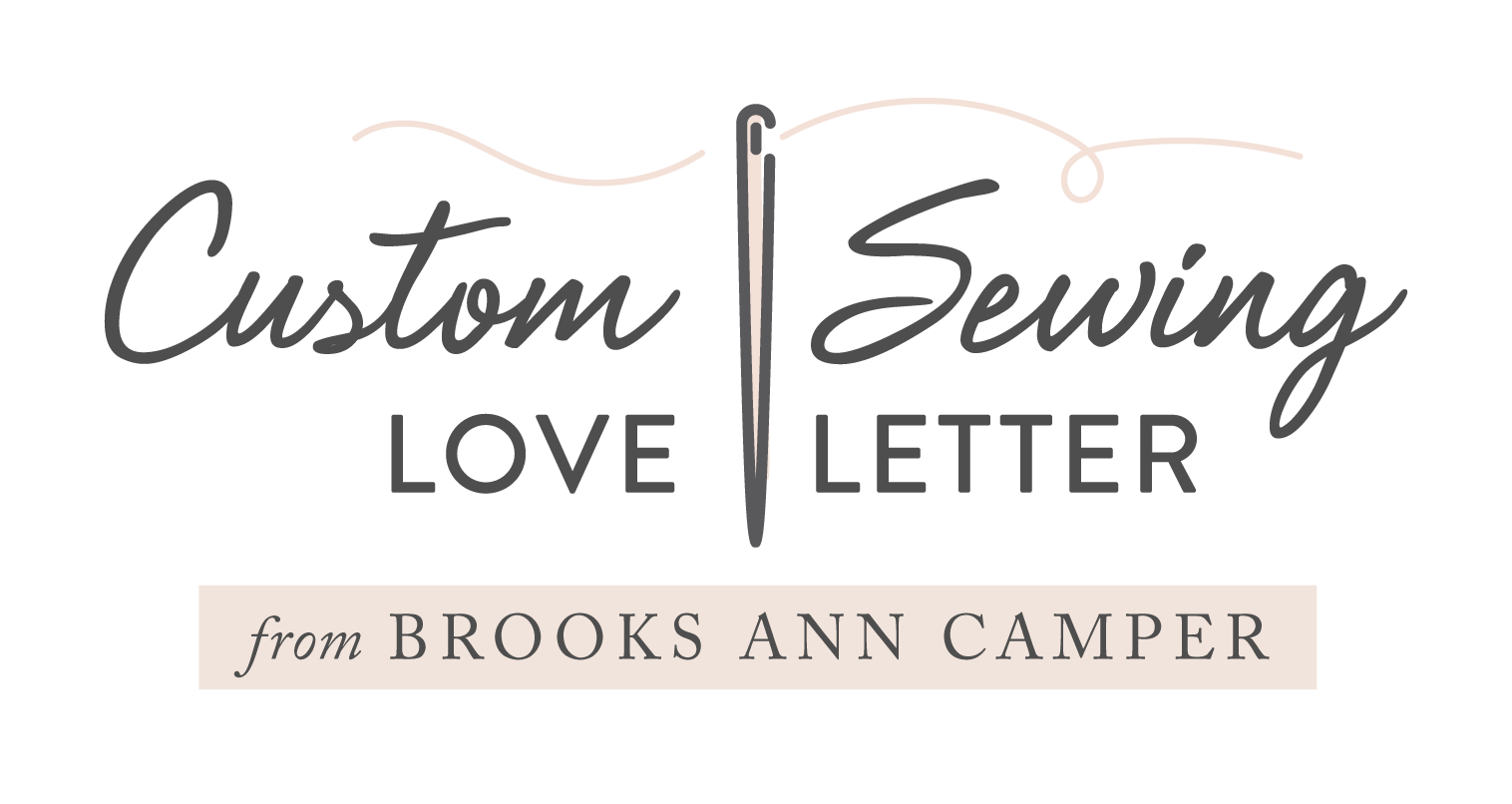
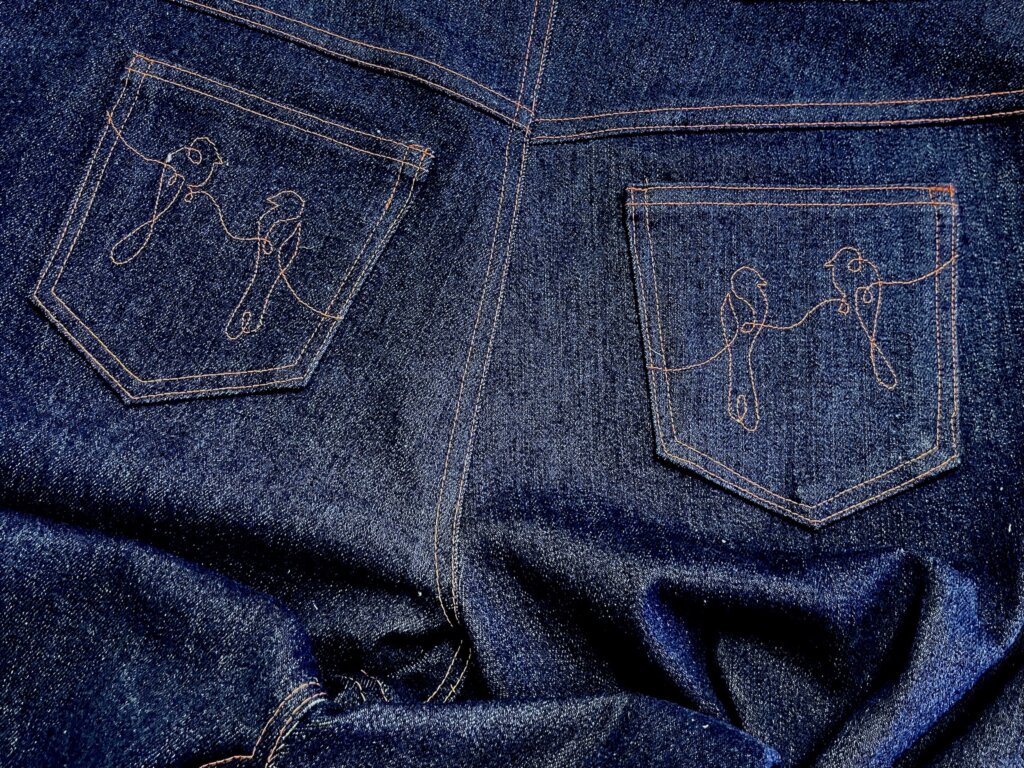

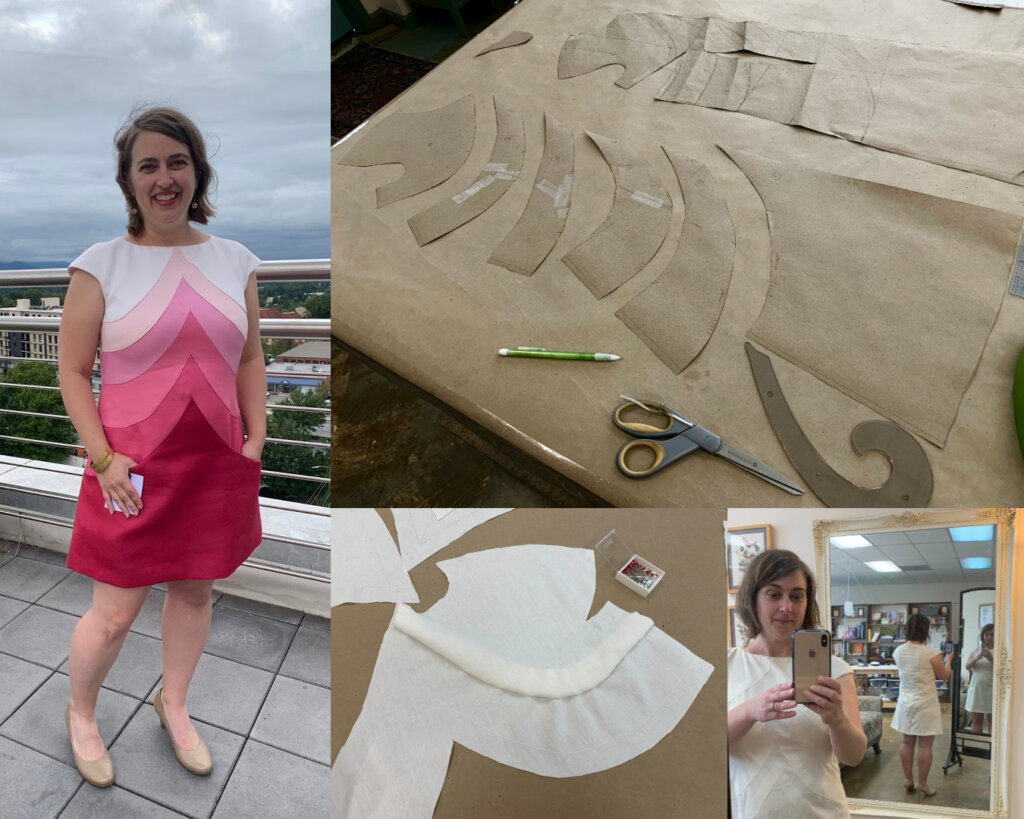
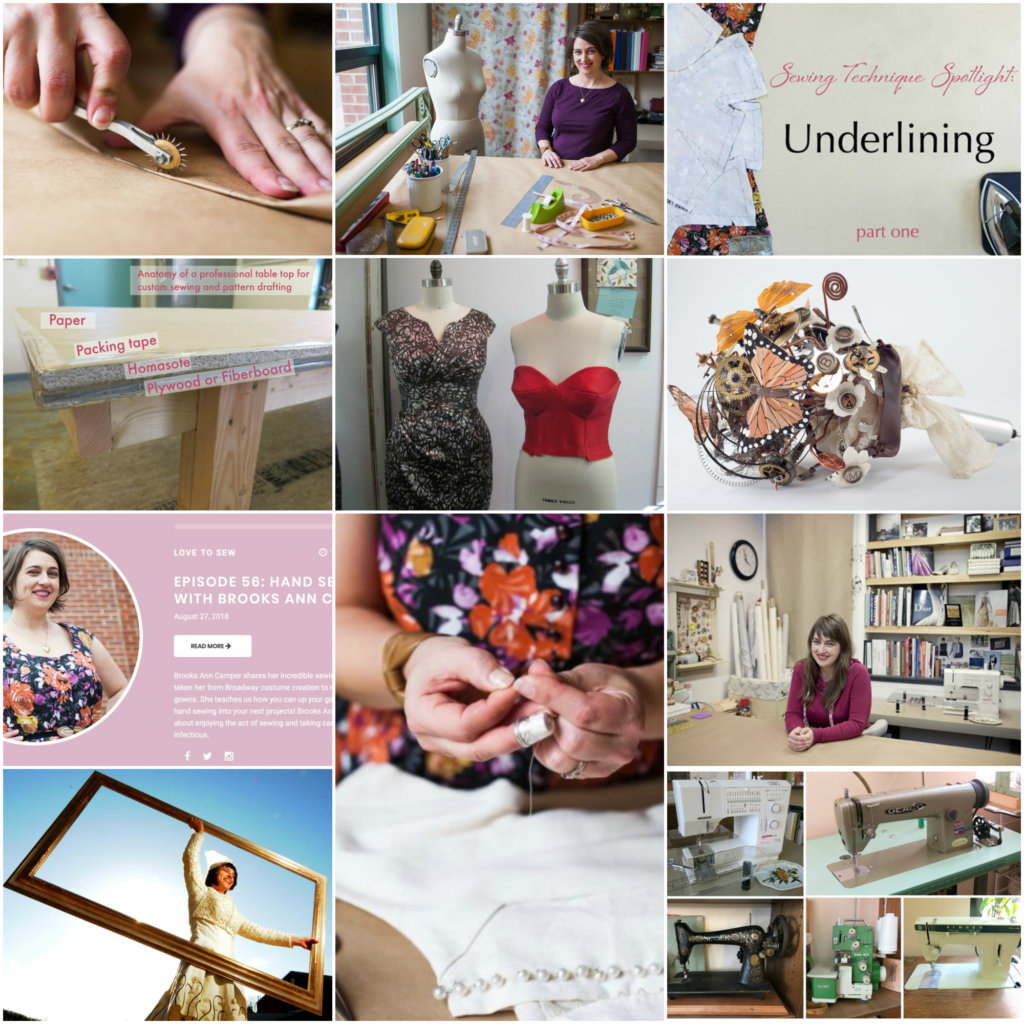
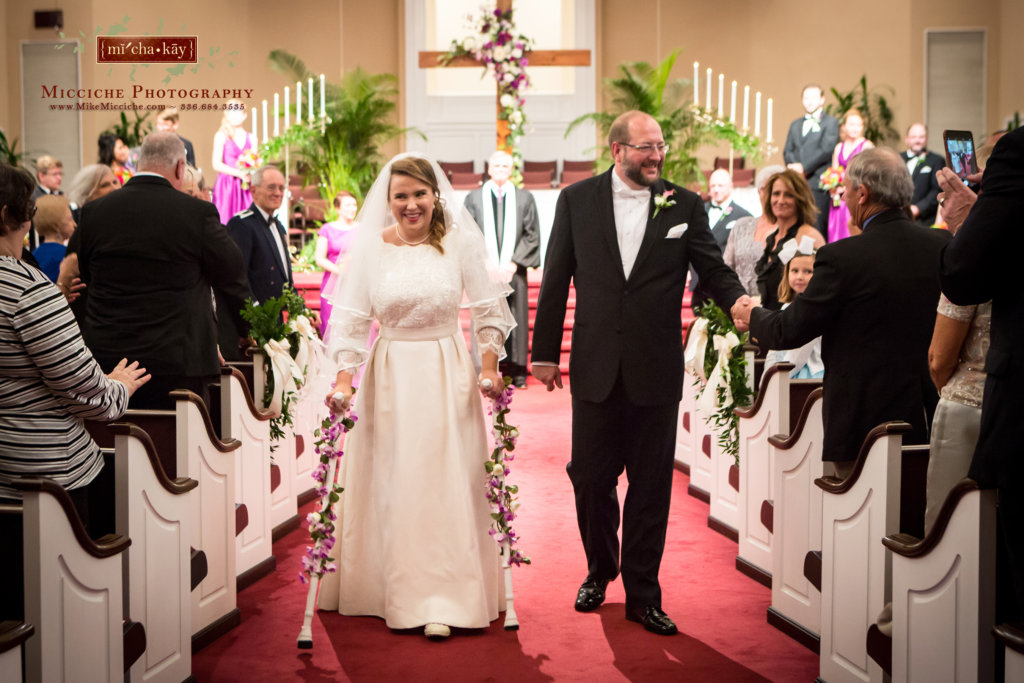
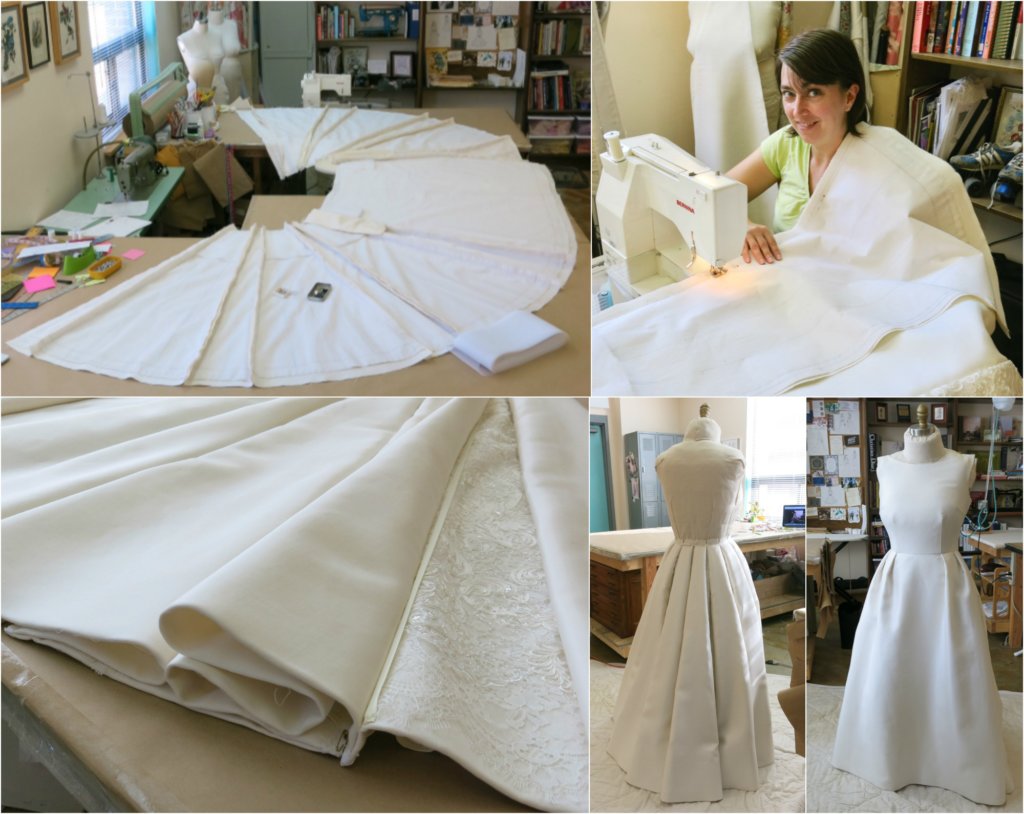
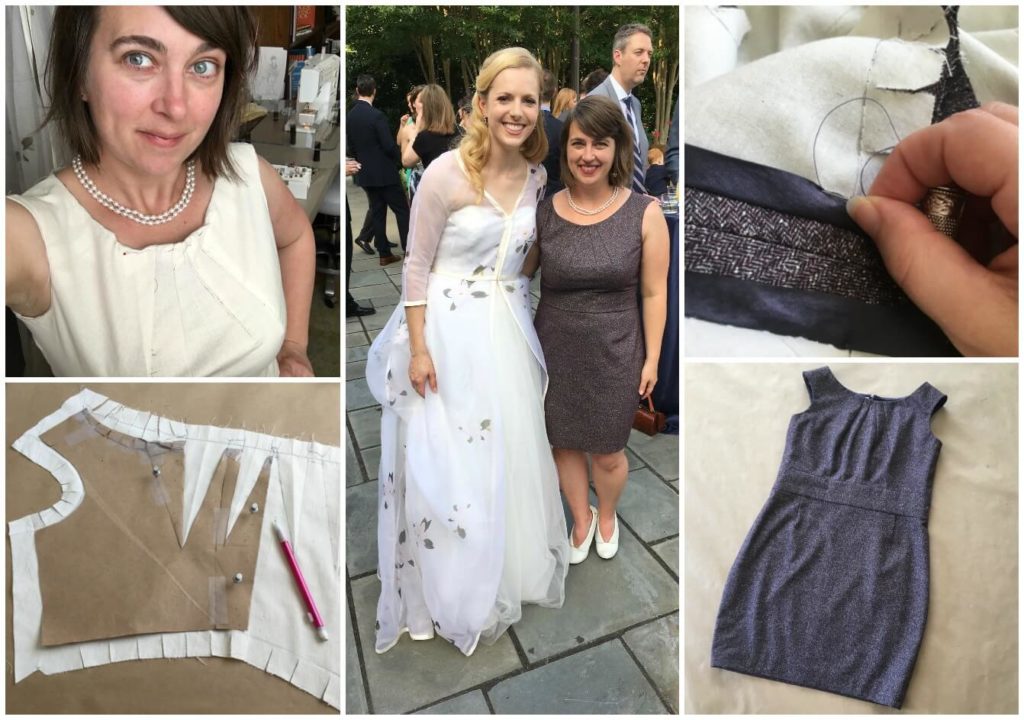
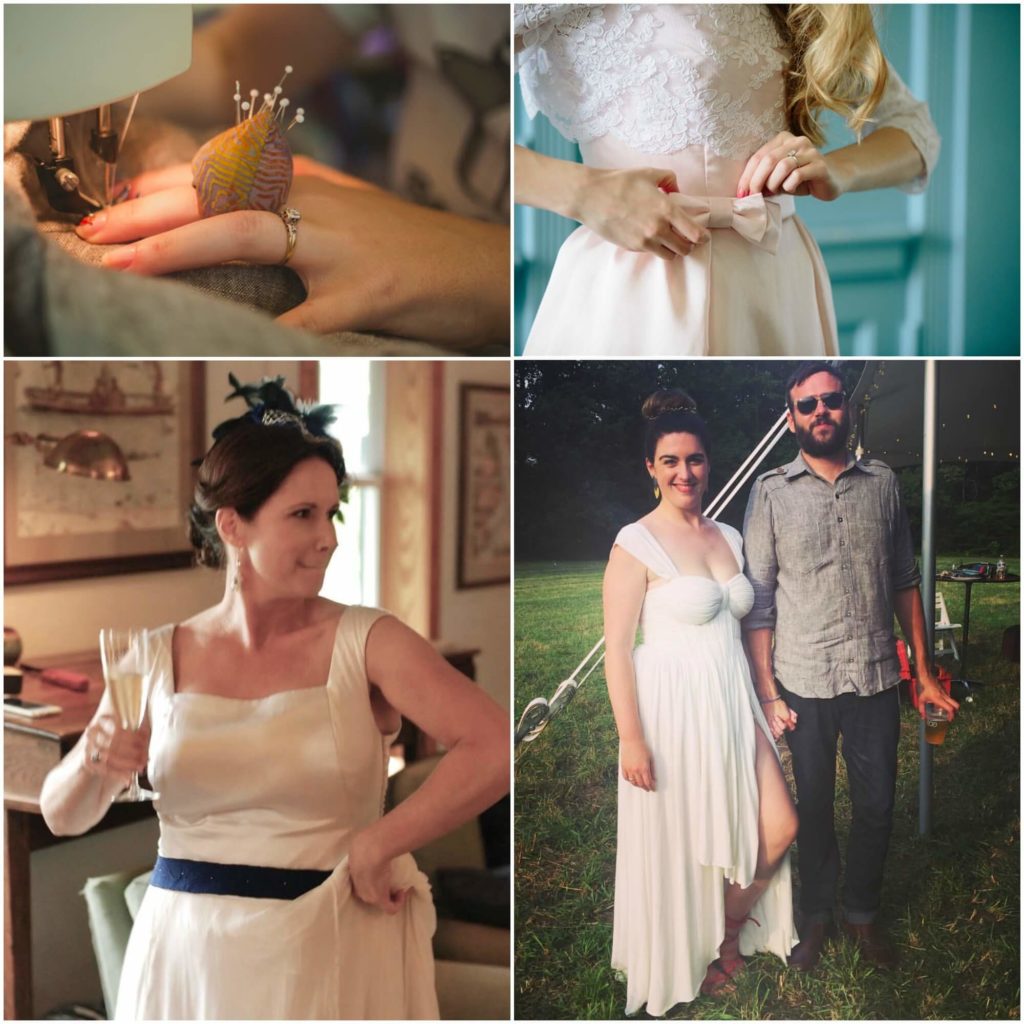
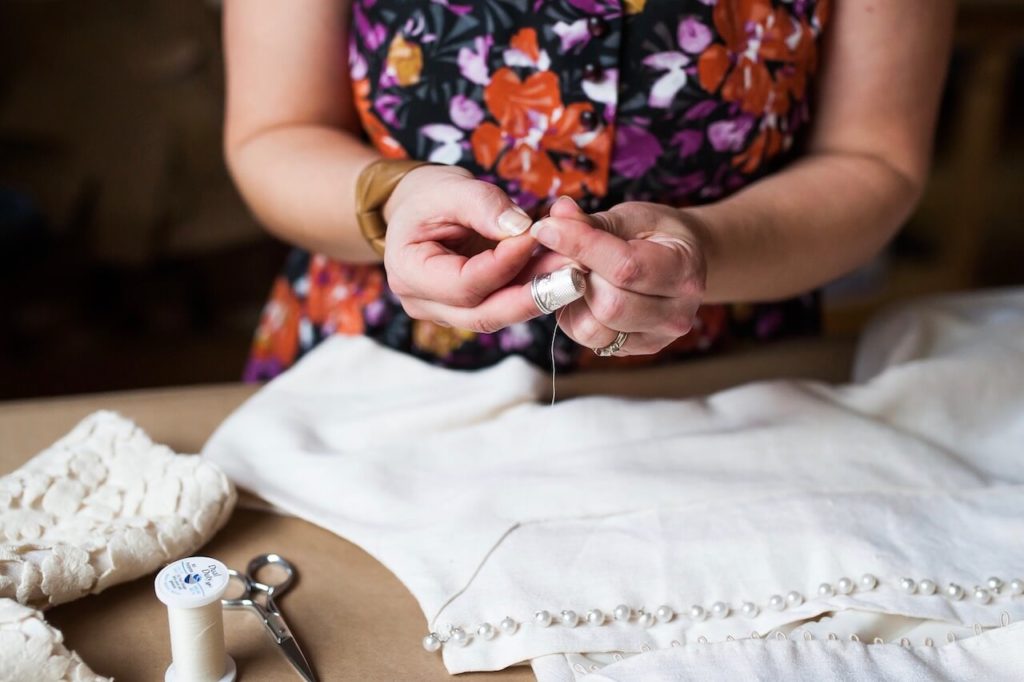
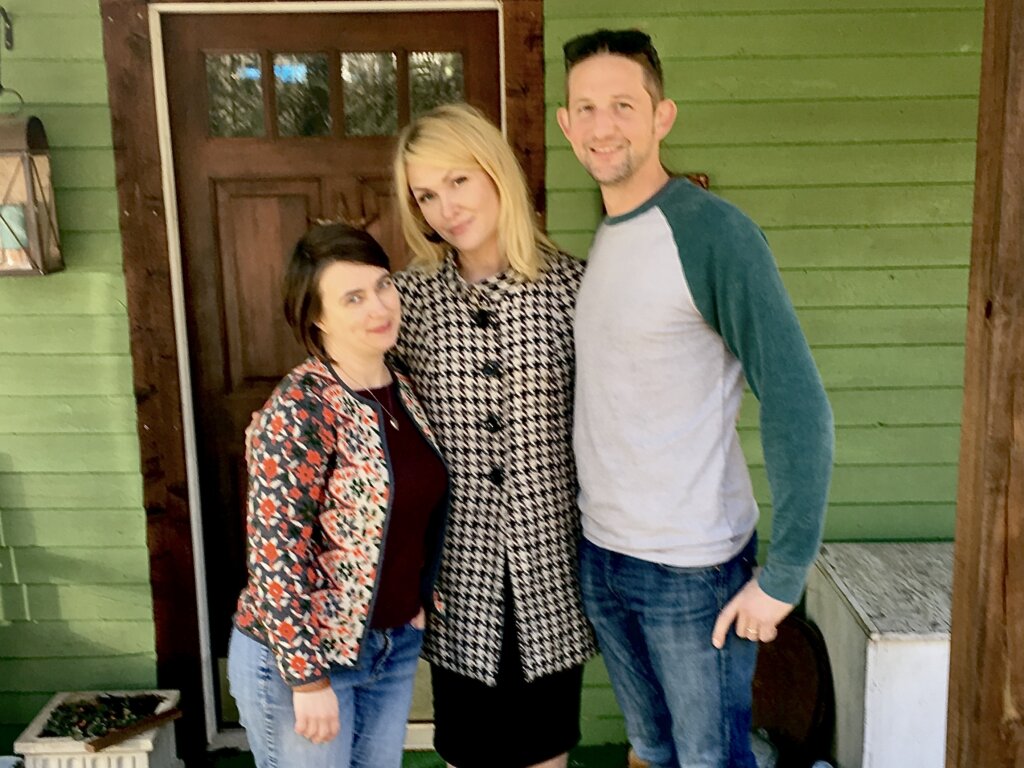
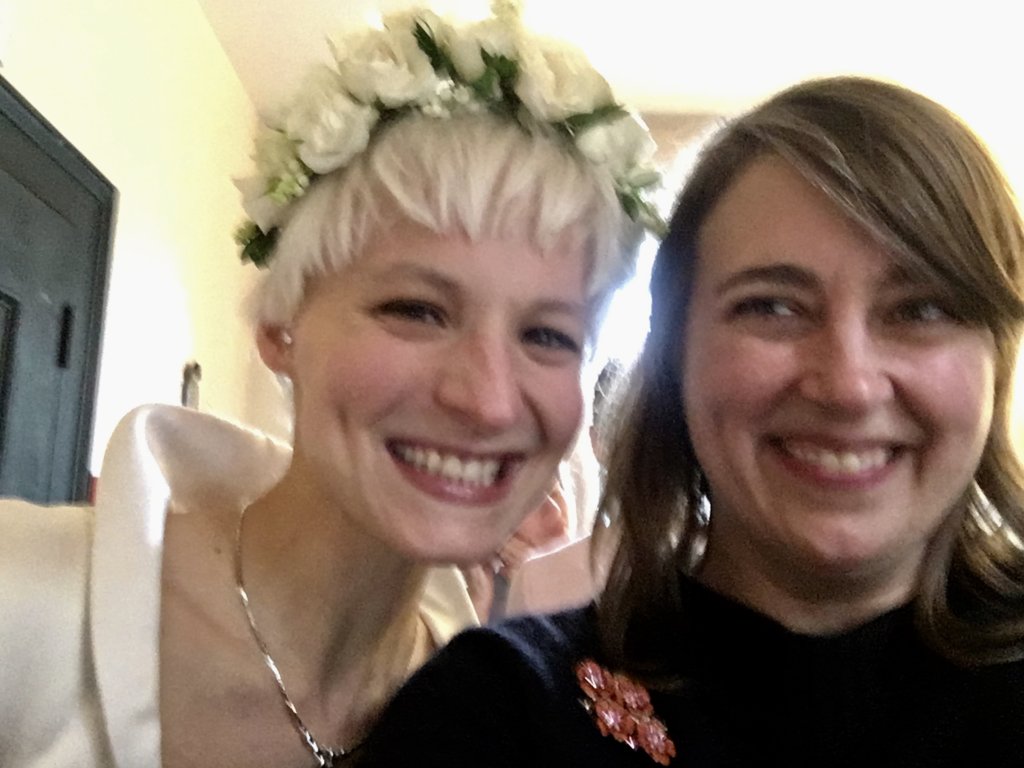
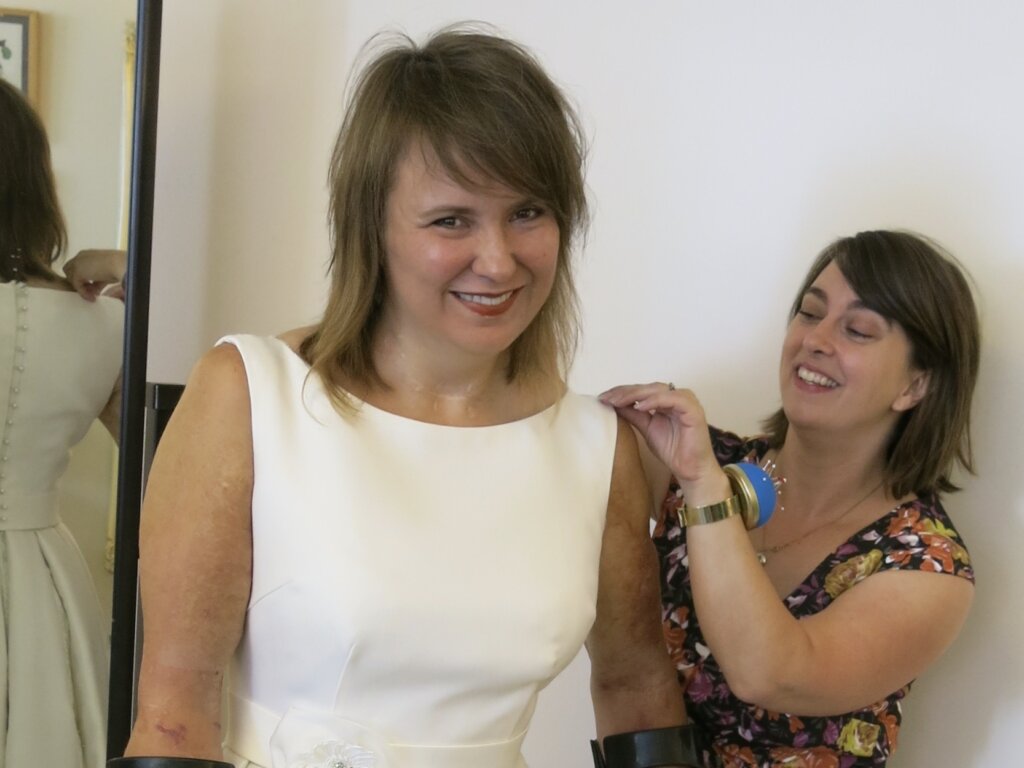


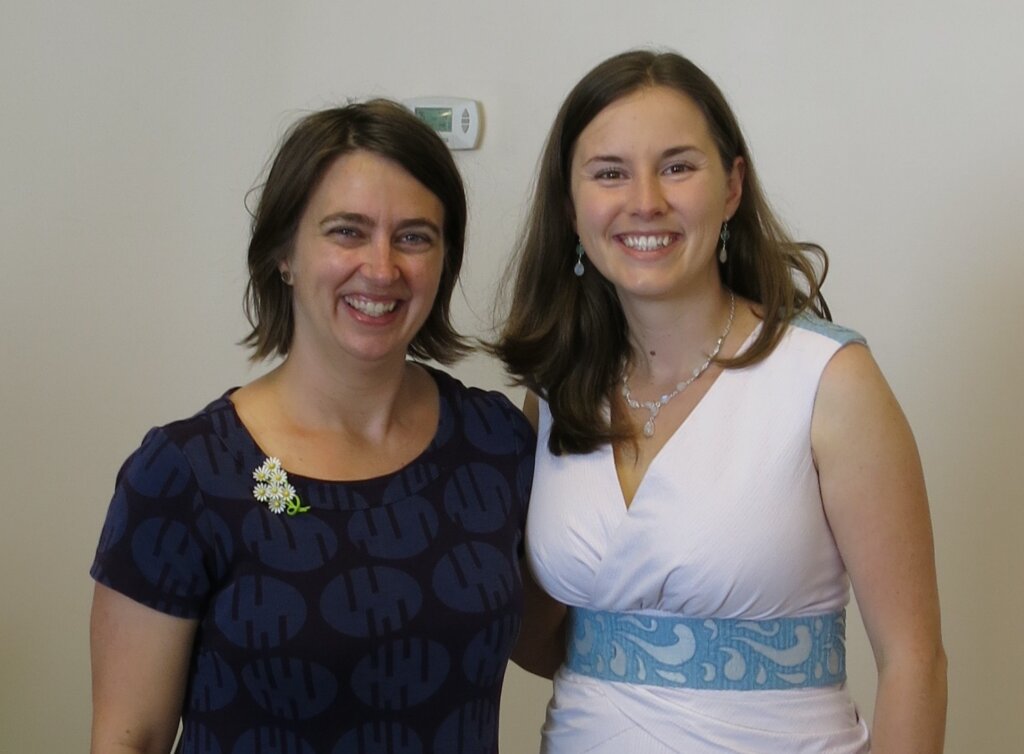
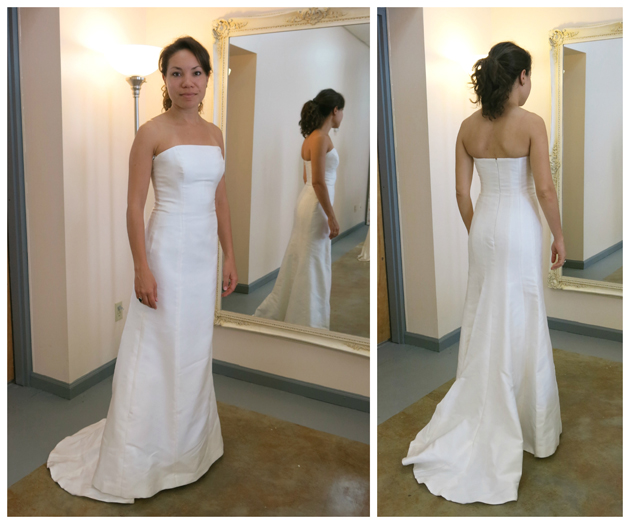
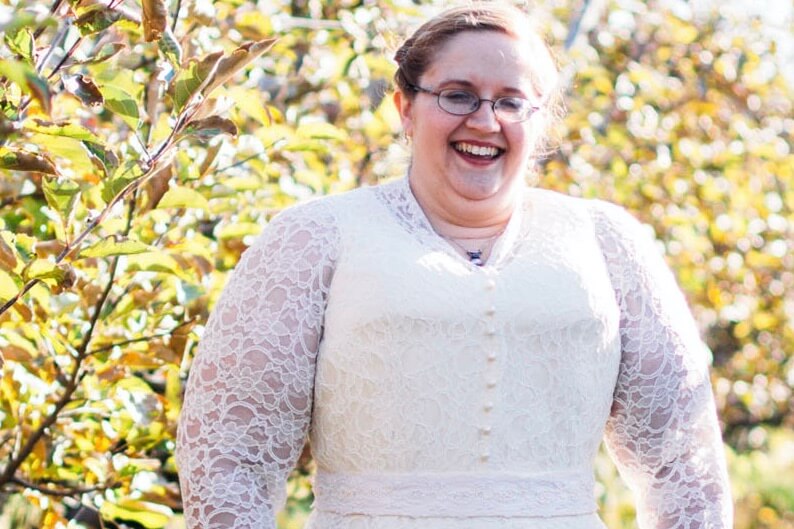
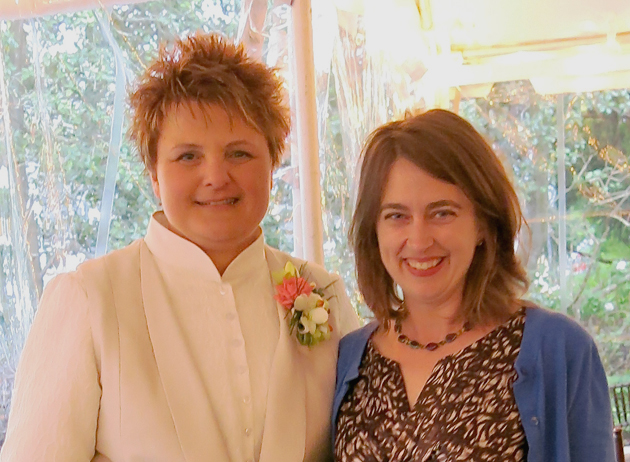
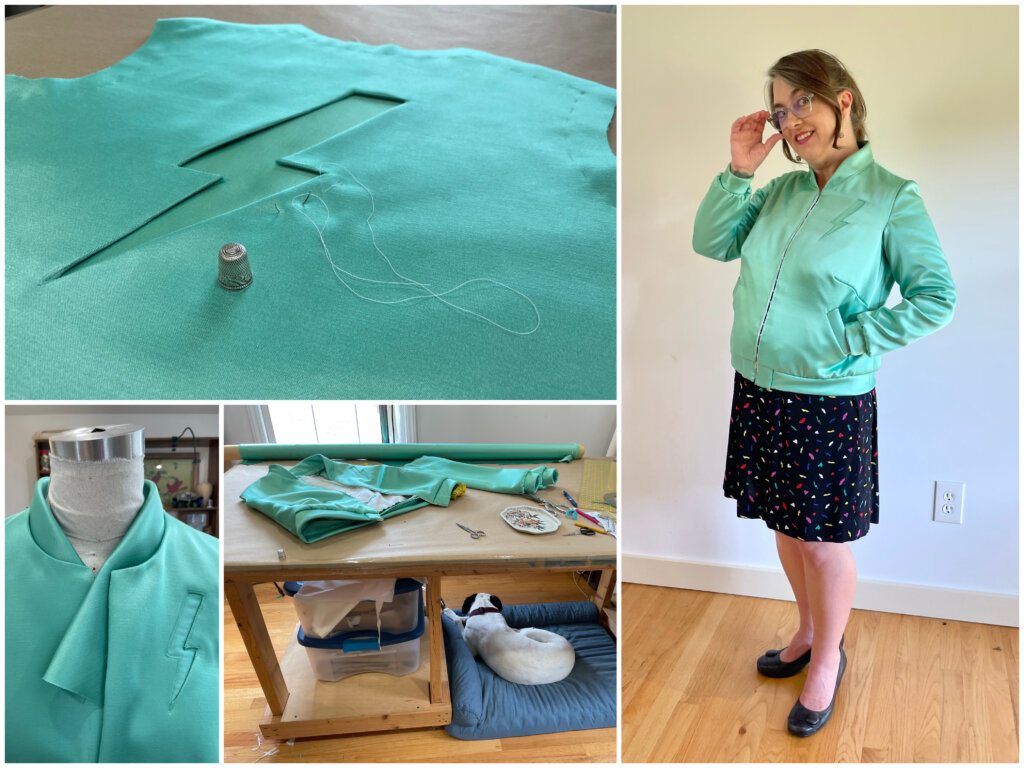
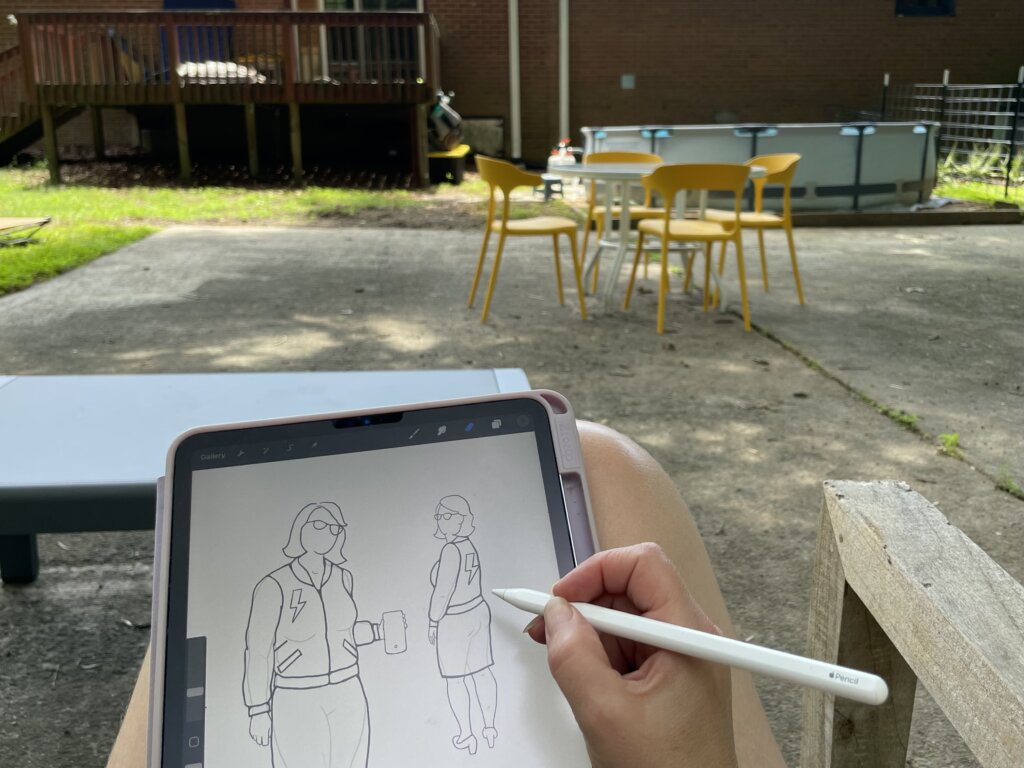
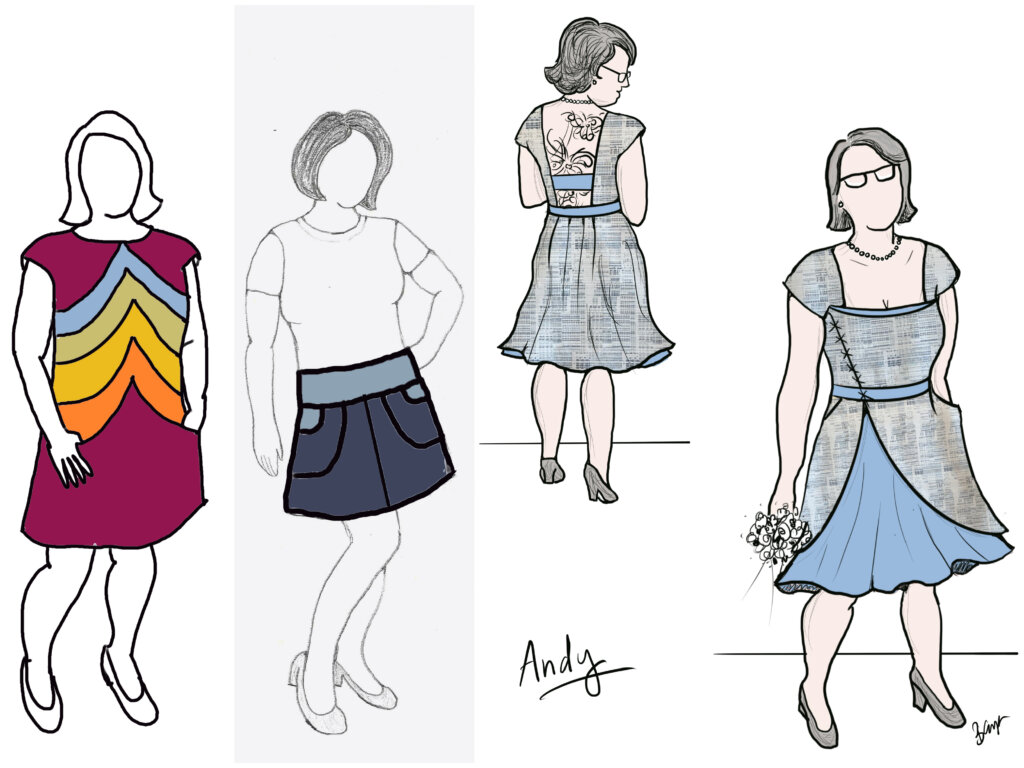
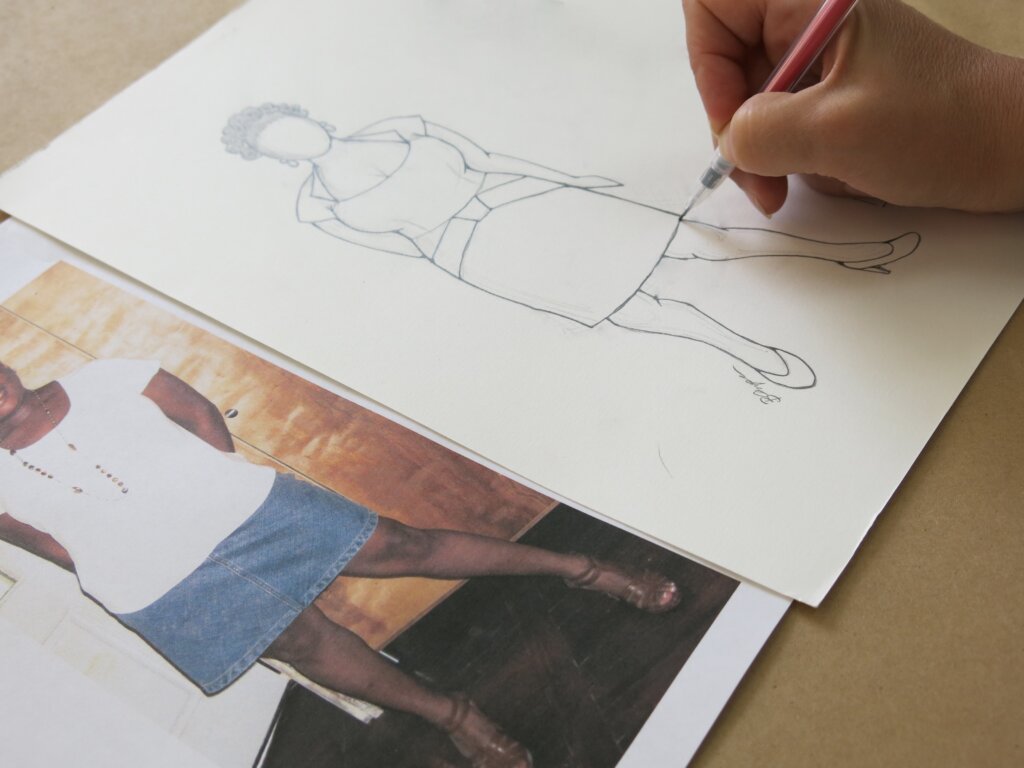
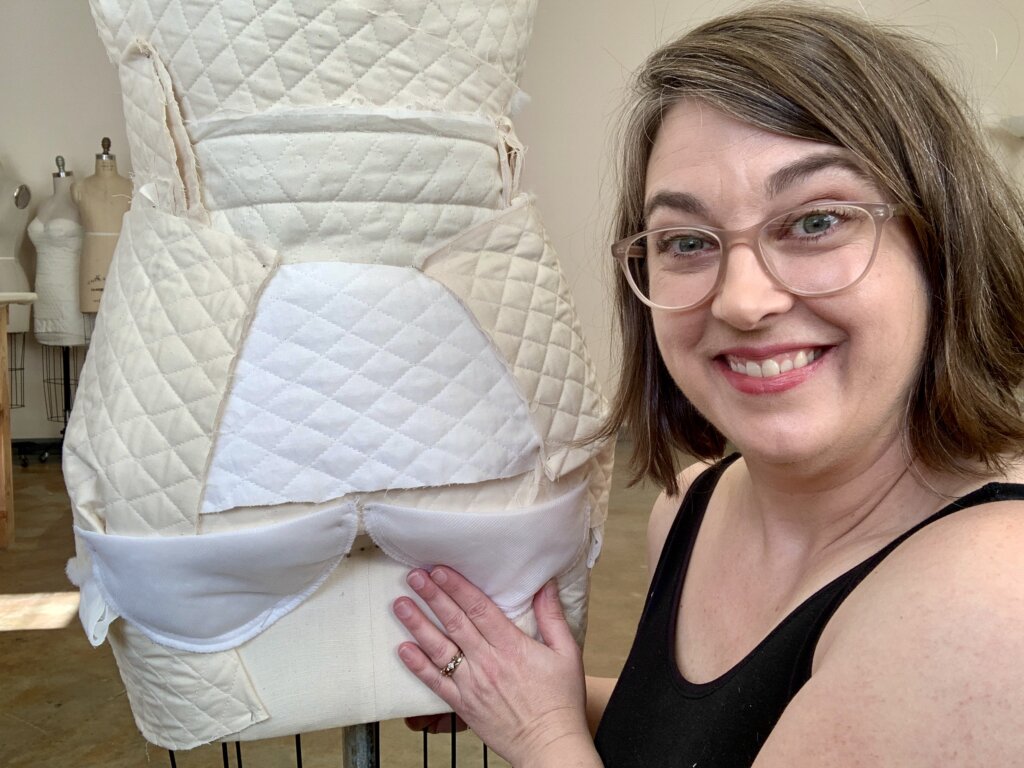
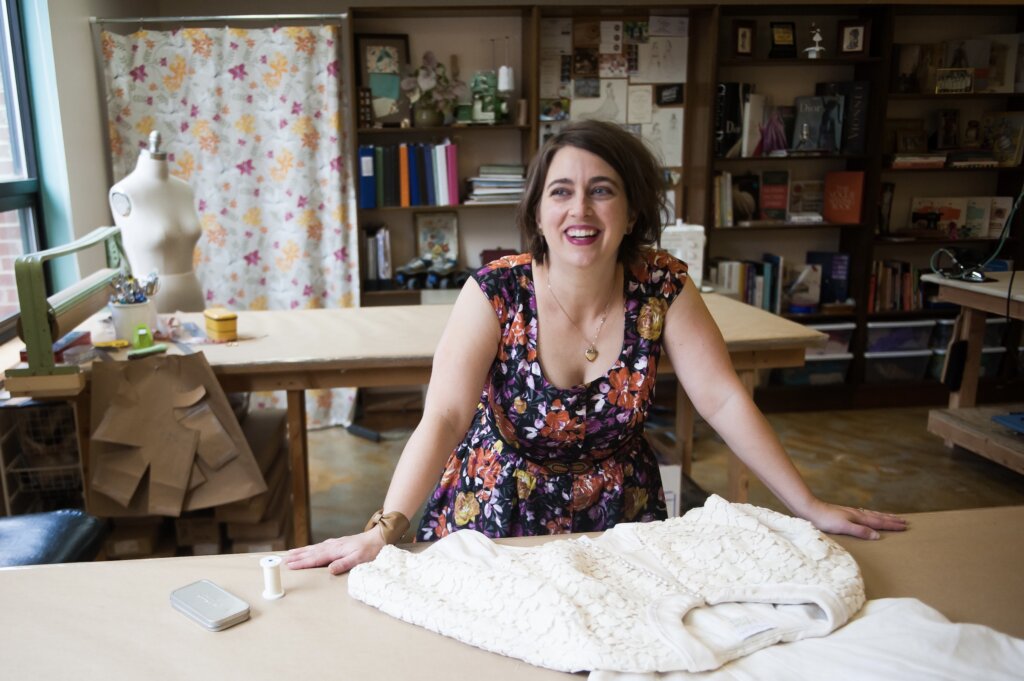
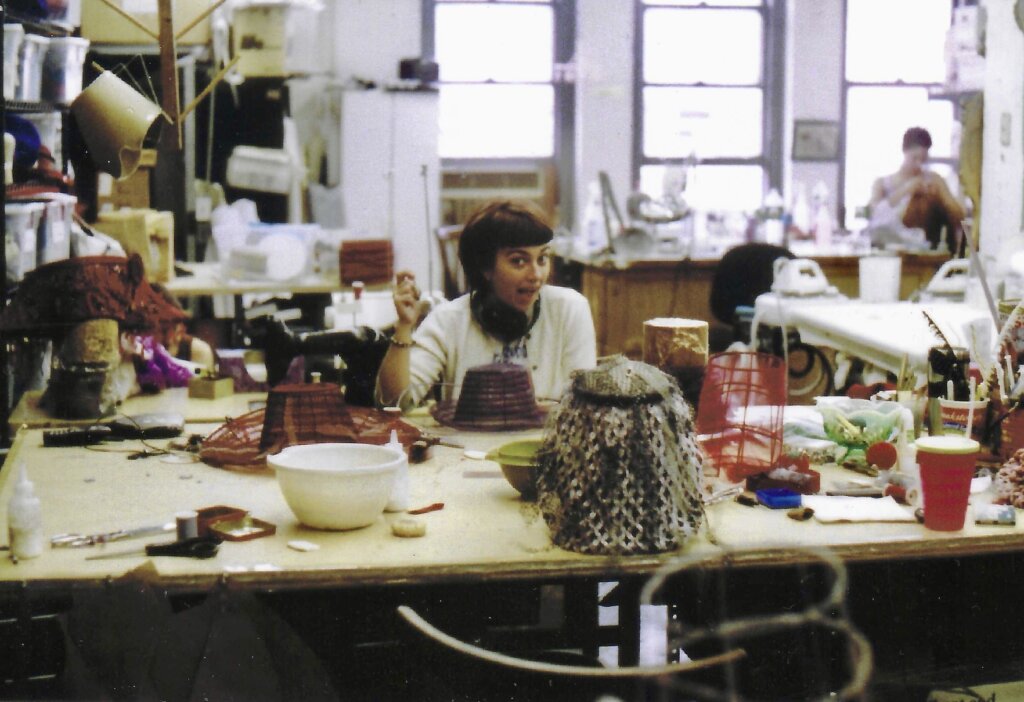
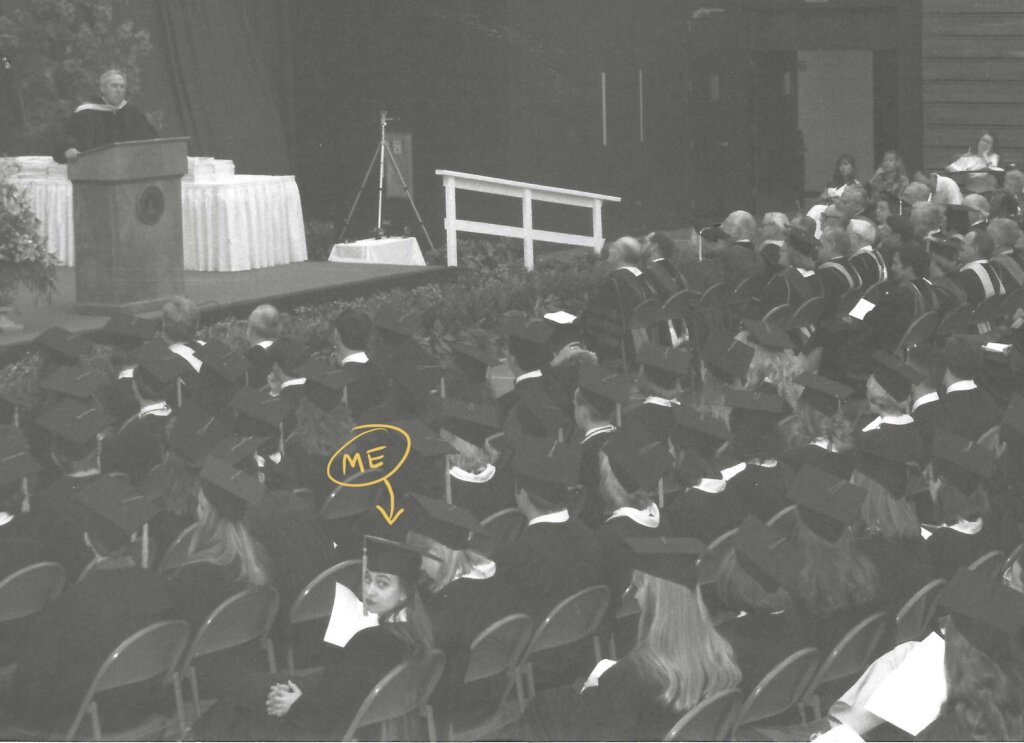
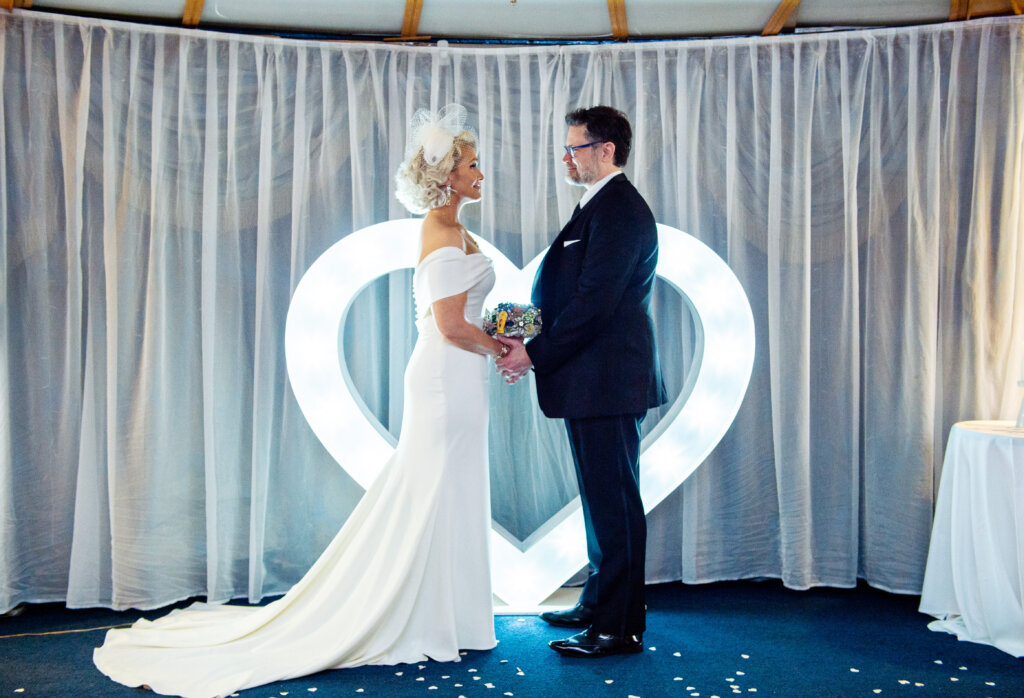
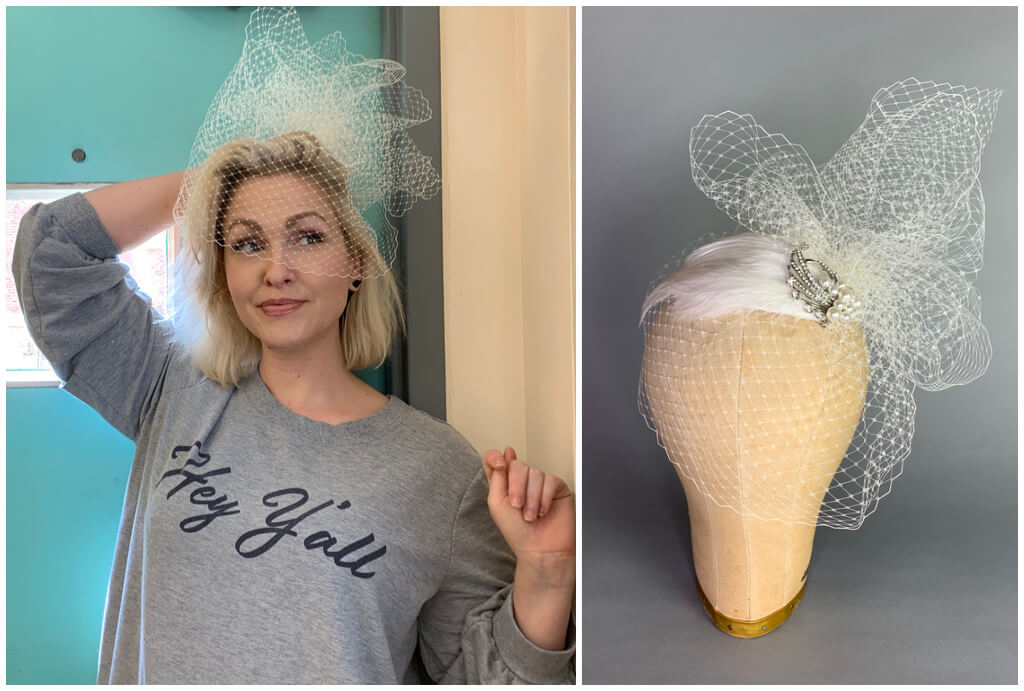
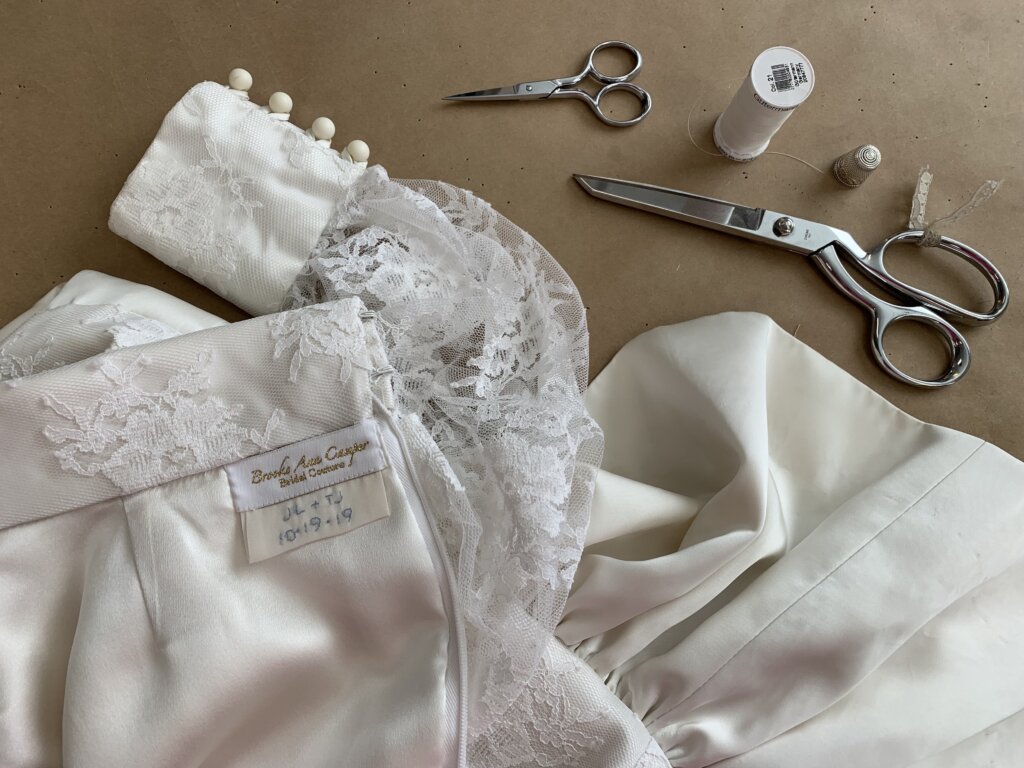
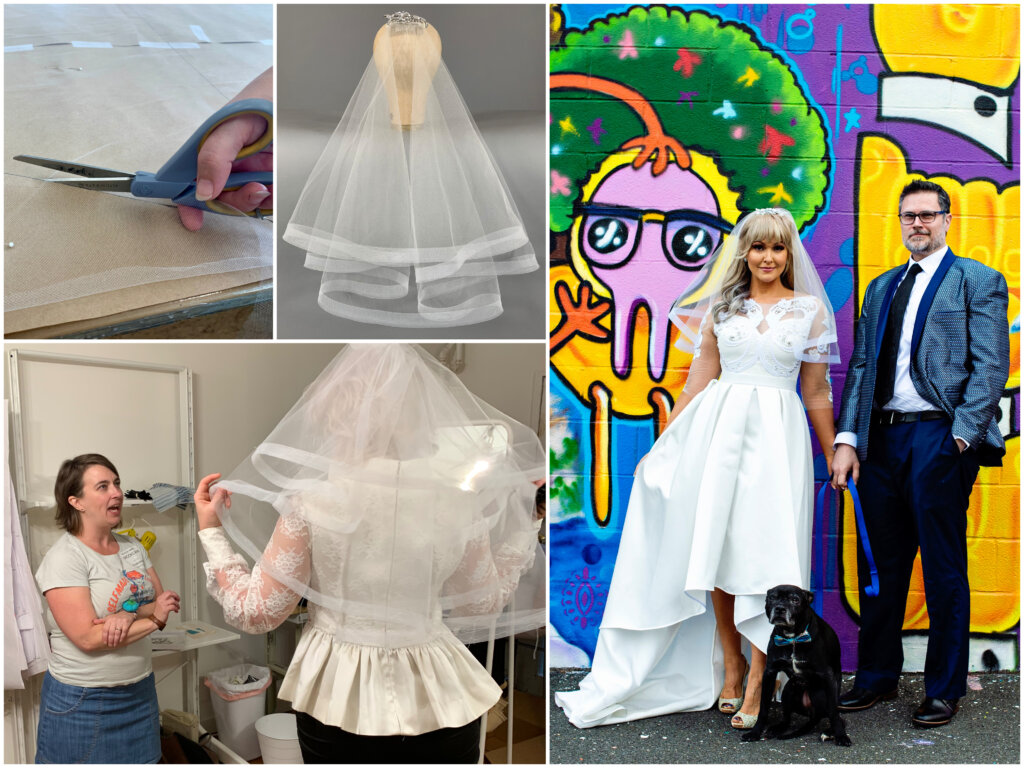
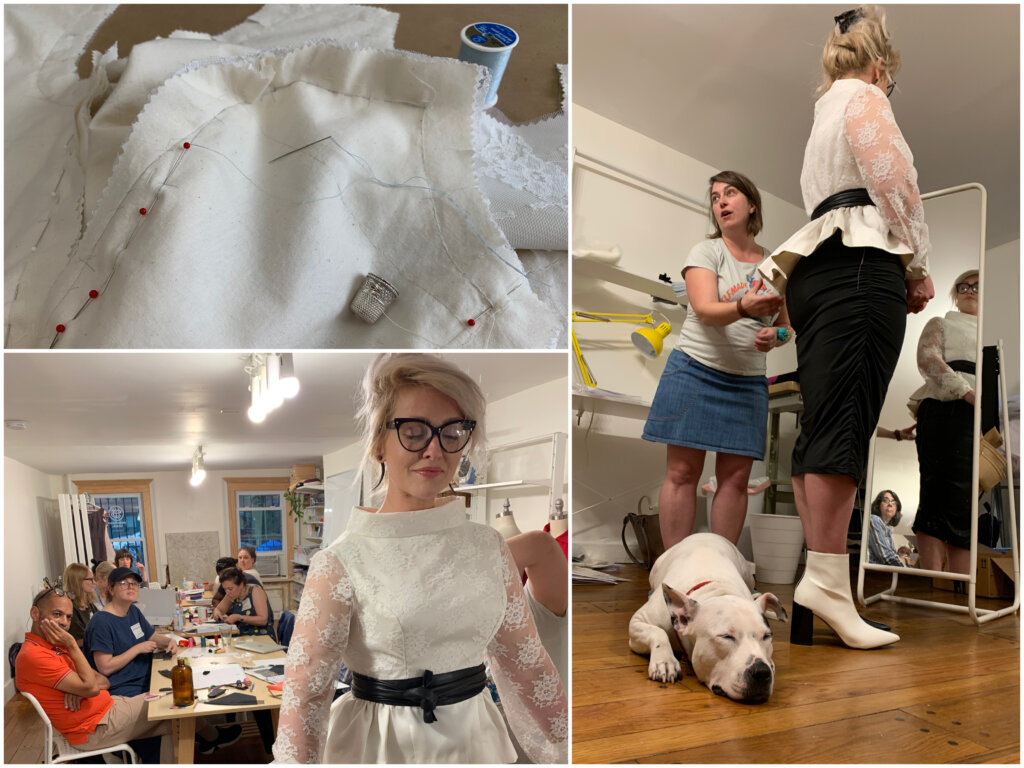
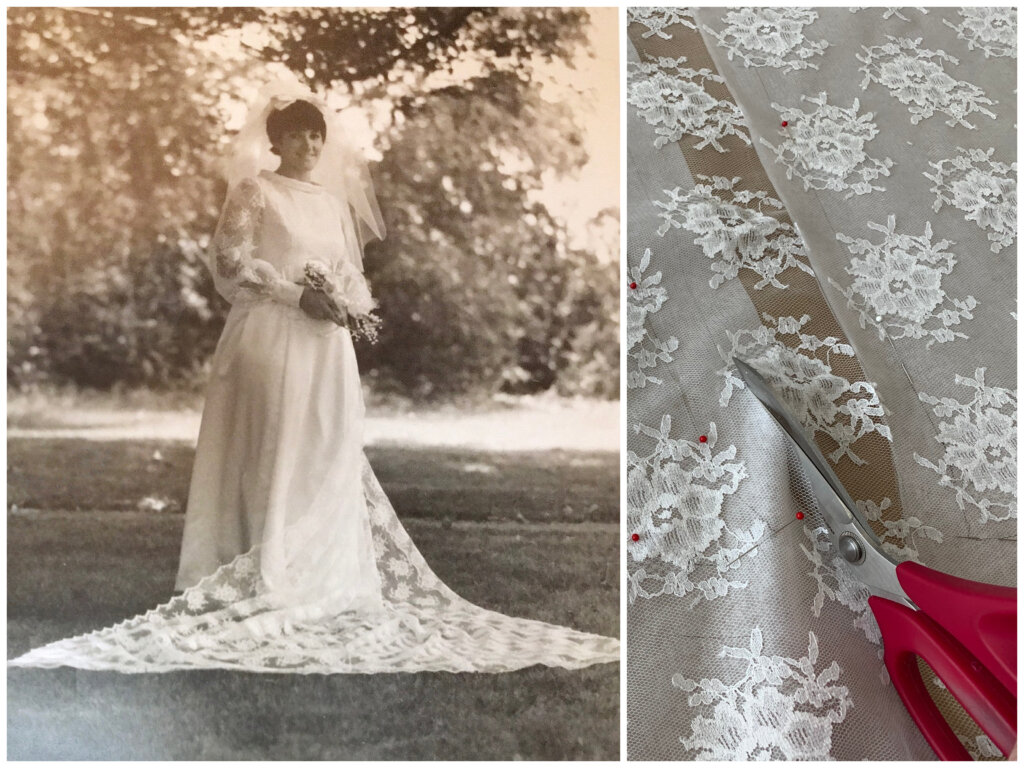
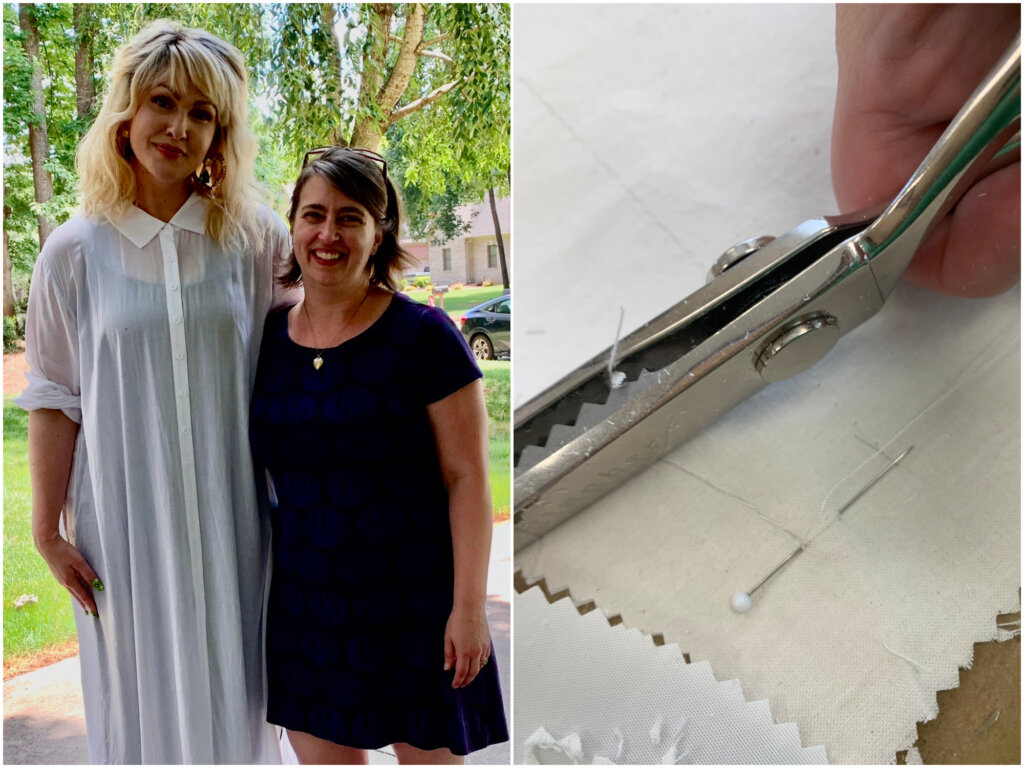
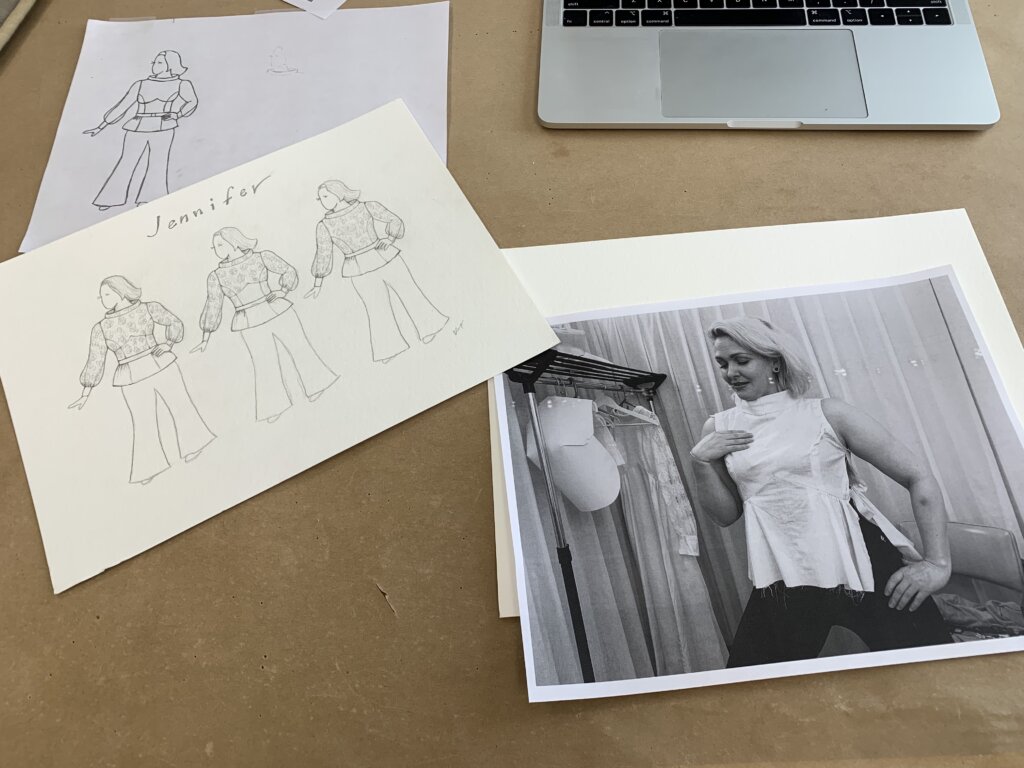
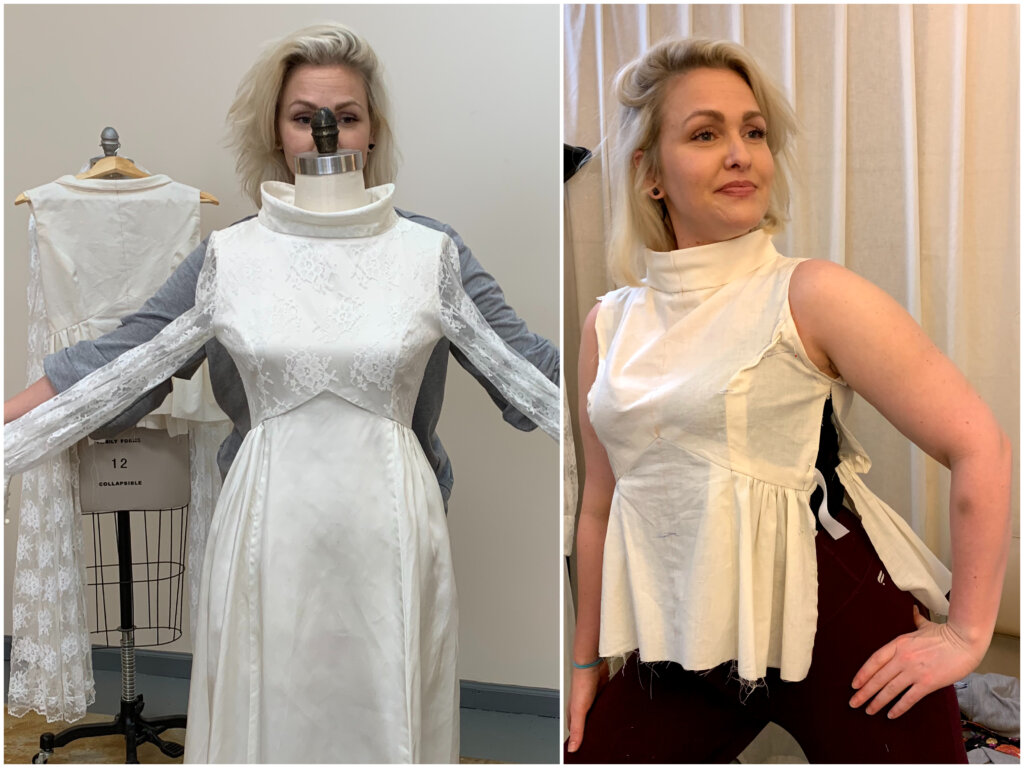
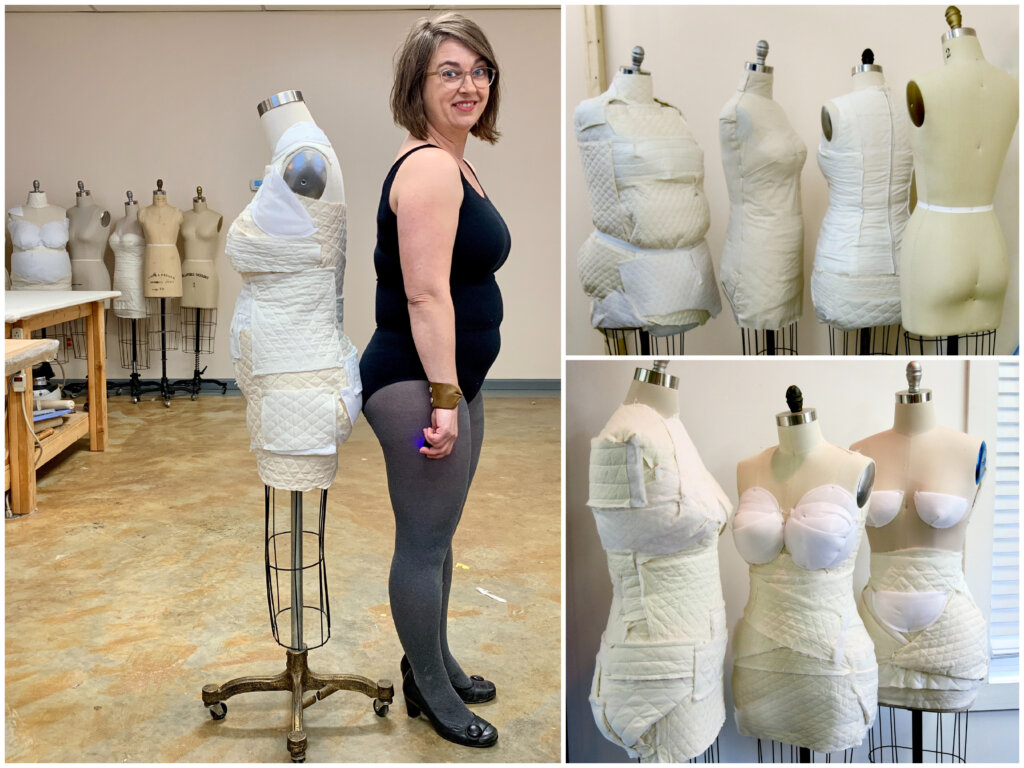
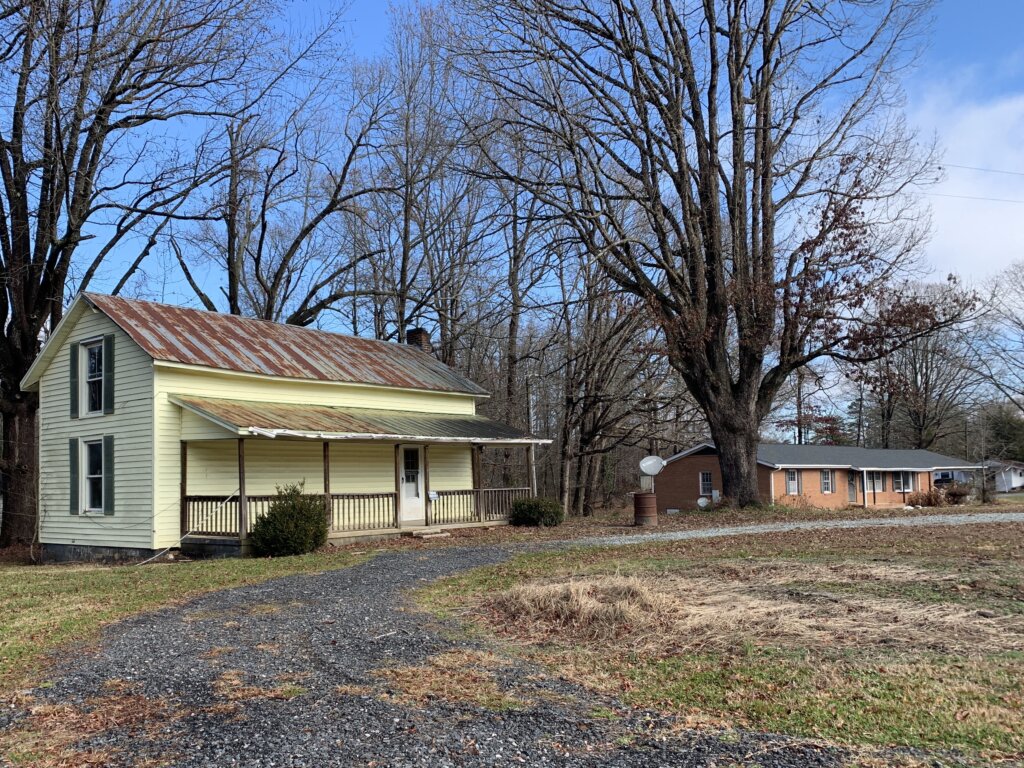
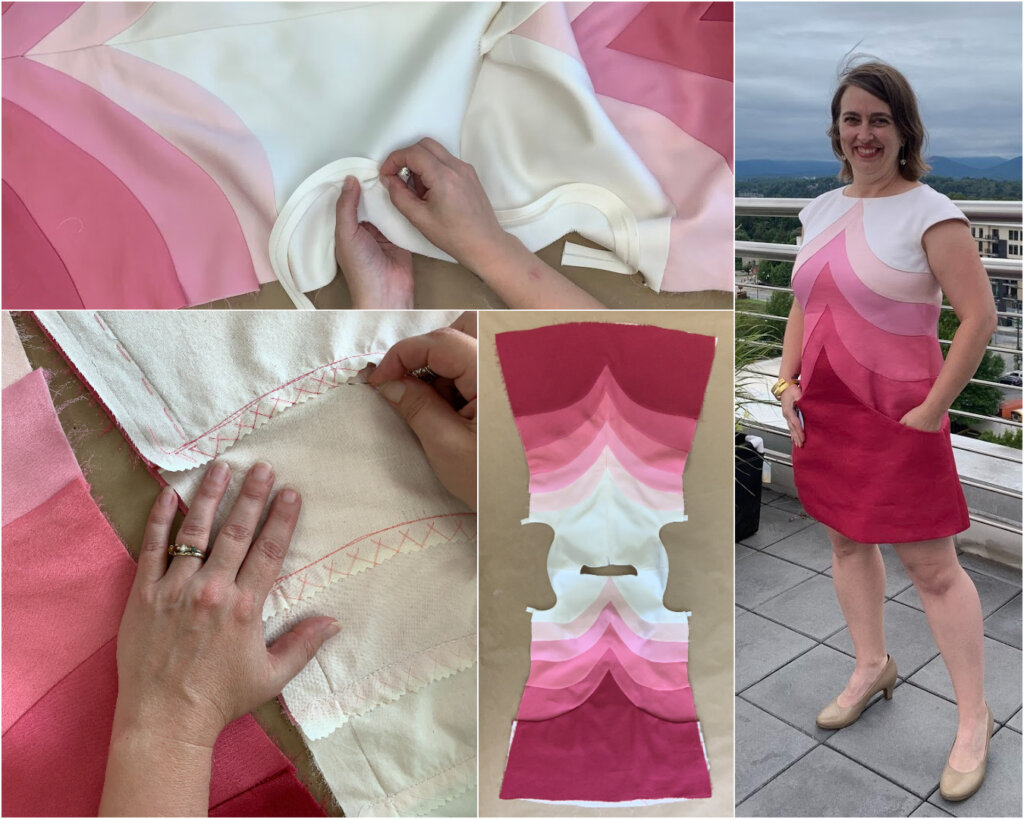
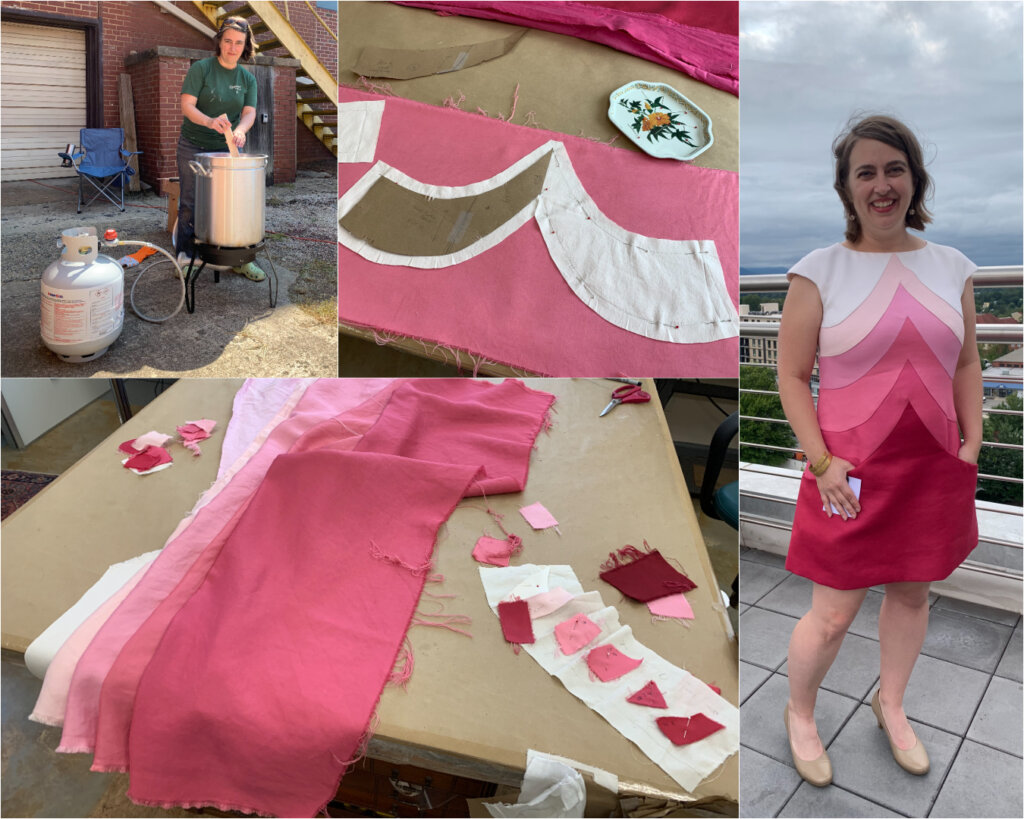
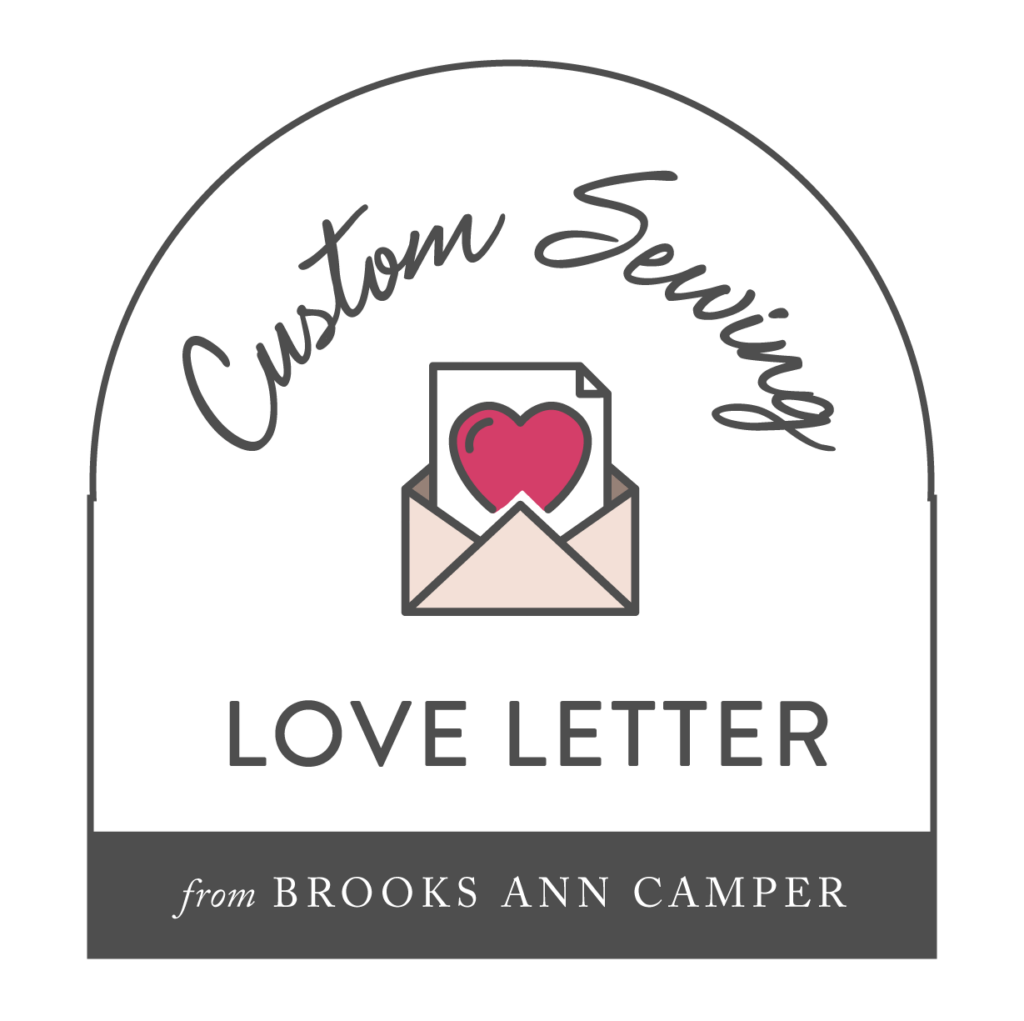
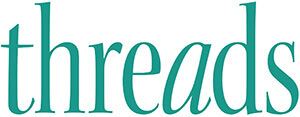



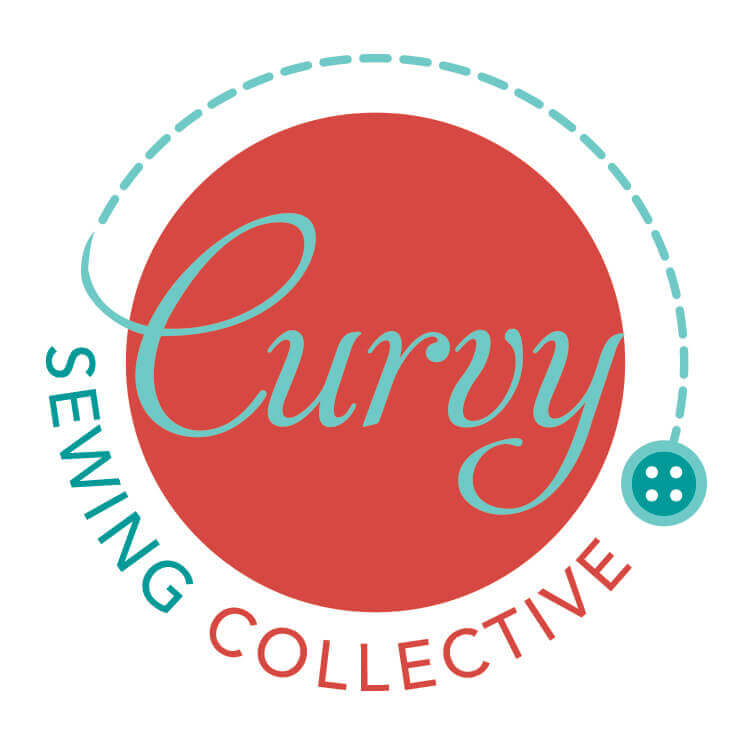

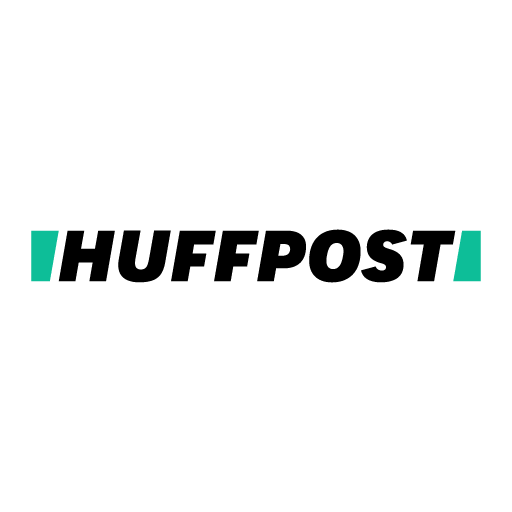
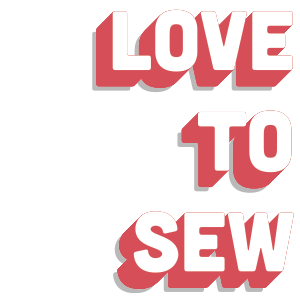
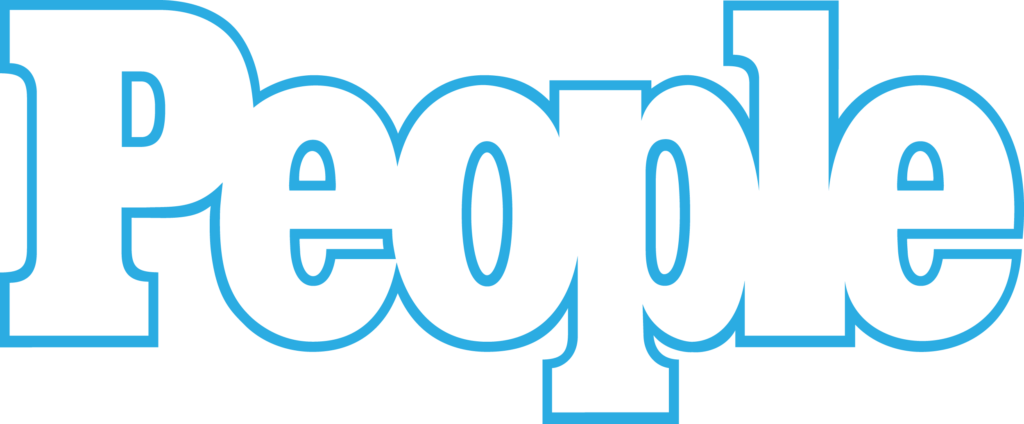
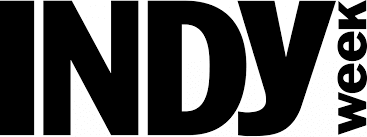

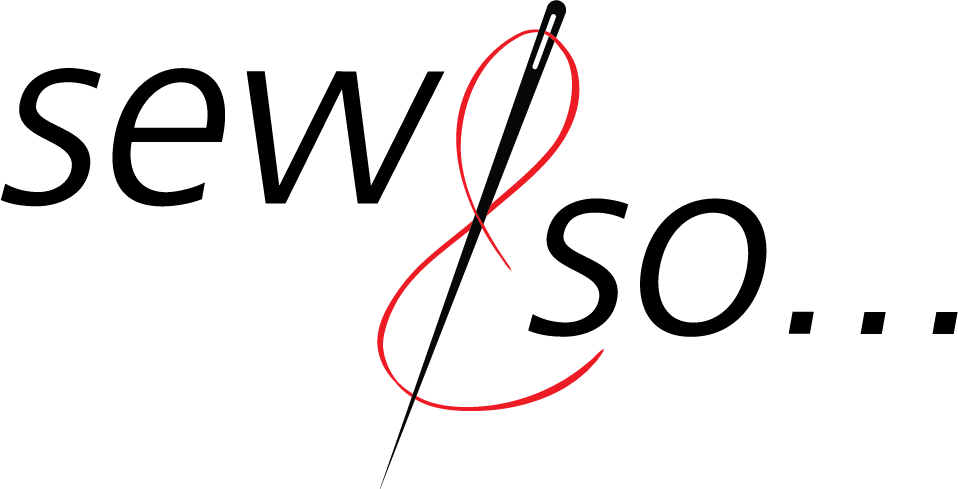
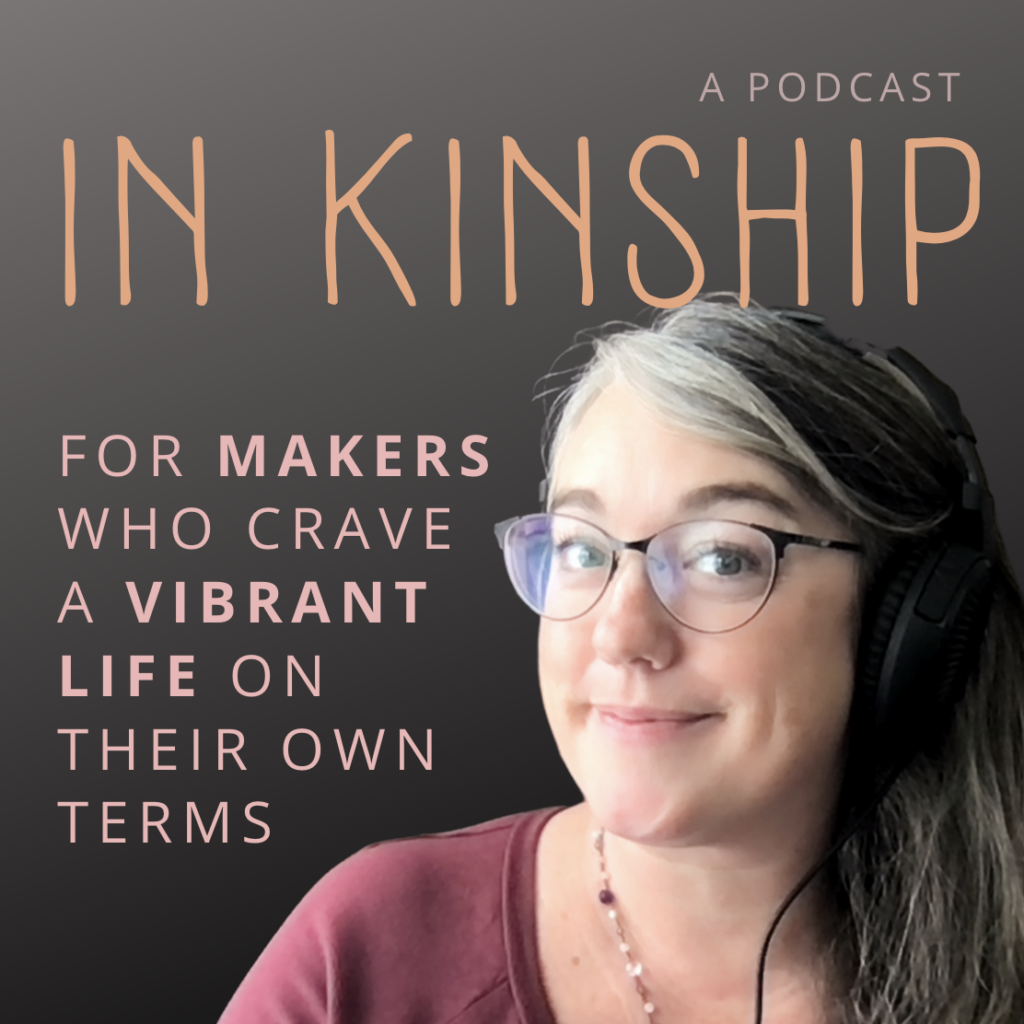

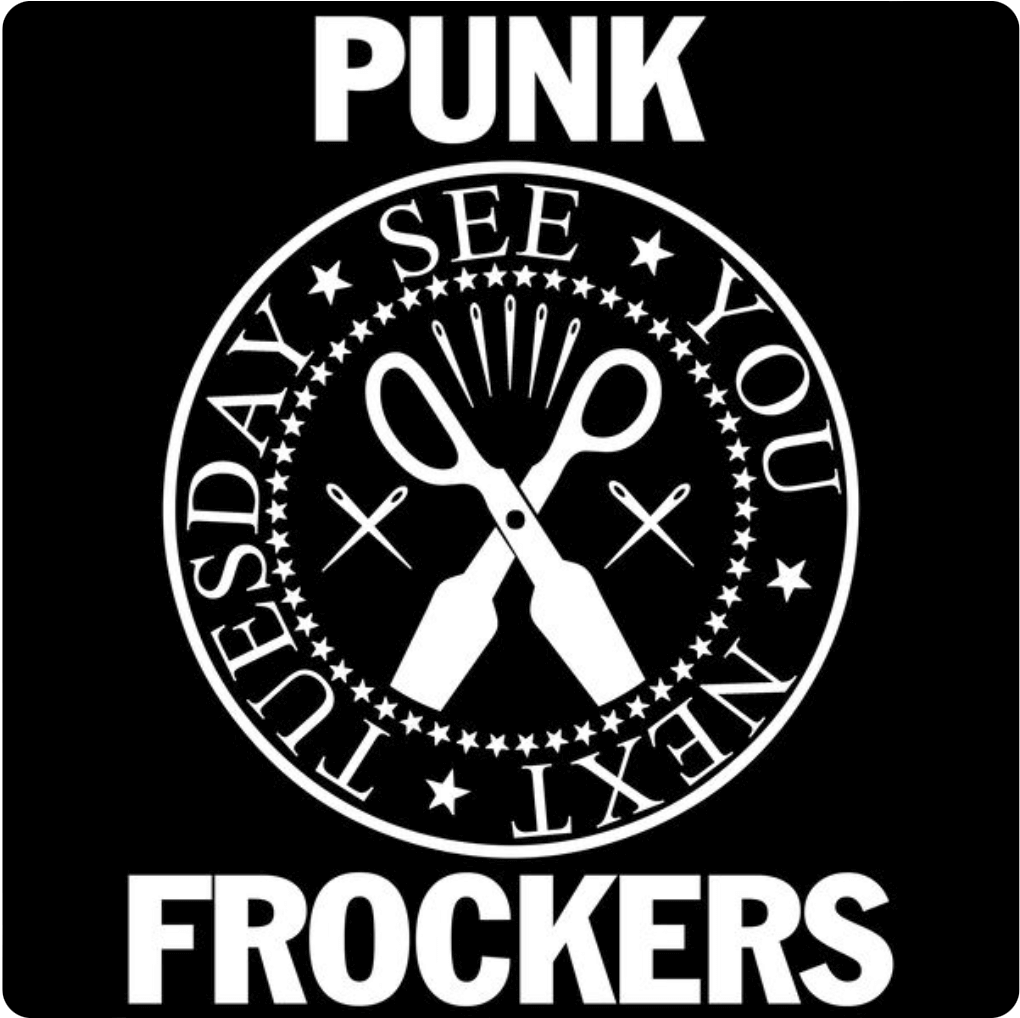
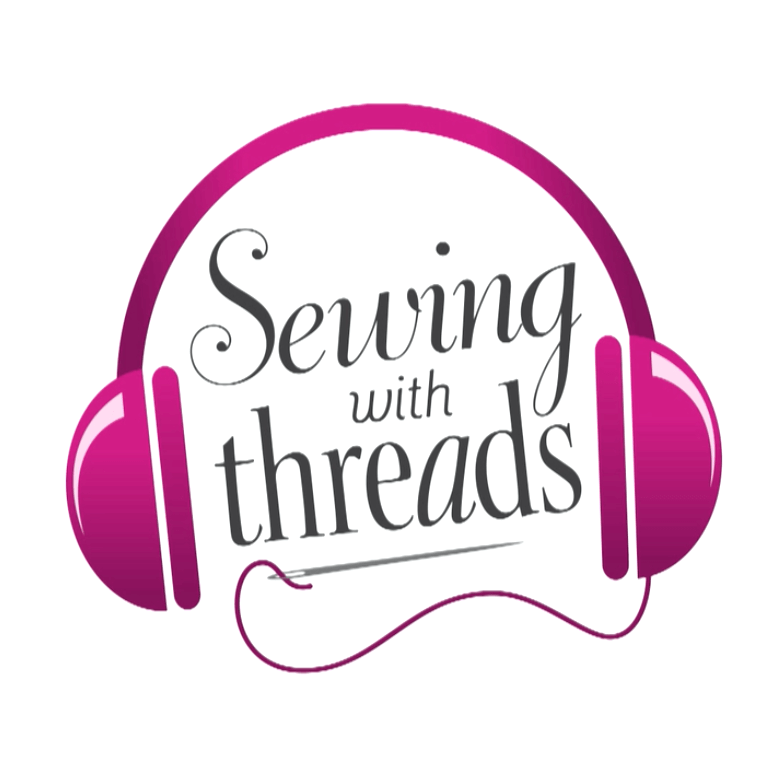
4 Responses
This is just so helpful to see the process of “once you have a block, what do you do with it?” Thanks for taking us along with your whole thought process
My pleasure!
Lol! I kept seeing your feet on the brown paper and asking myself why you were working from the floor when you have two fabulous tables. It wasn’t until the last video clip in part two that I figured out you are standing on the table. Never a dull moment!
~Deb
Ha! And my fabulous work table had a Cheez-it stained paper cover in Part 1, and a clean paper cover in Part 2. (I have to climb up on the table to set up the shot and turn on the camera.) Thanks for following along Deb!